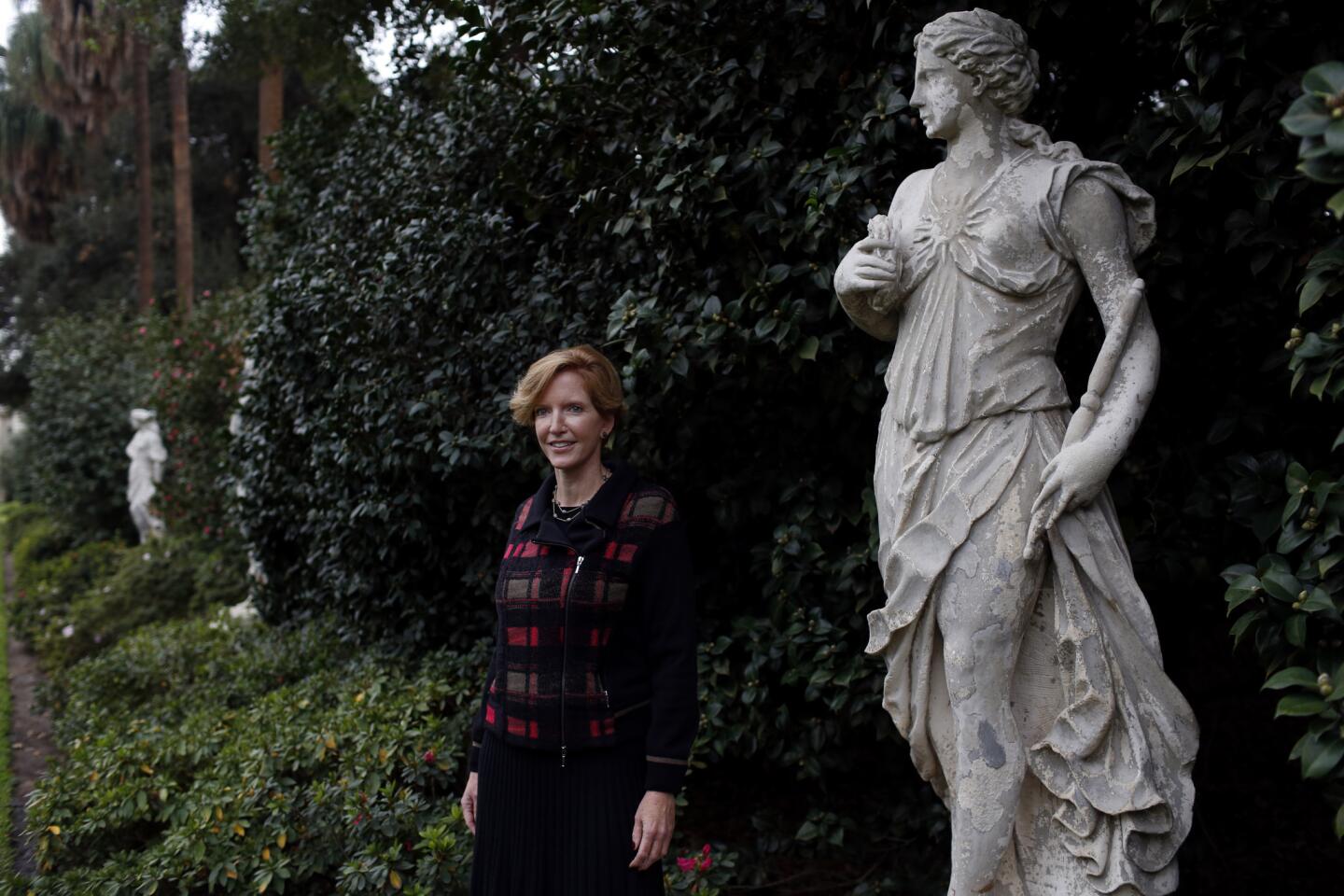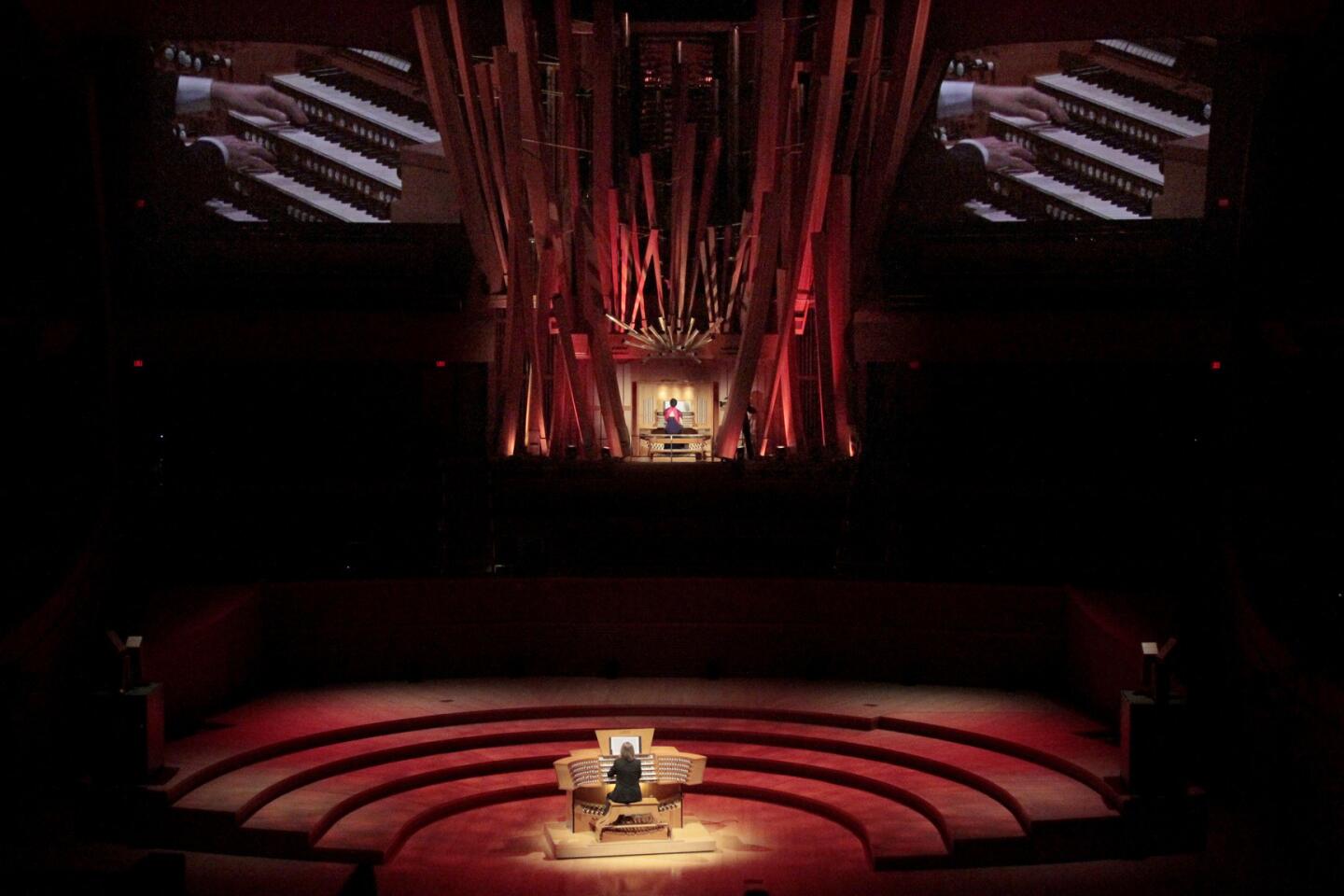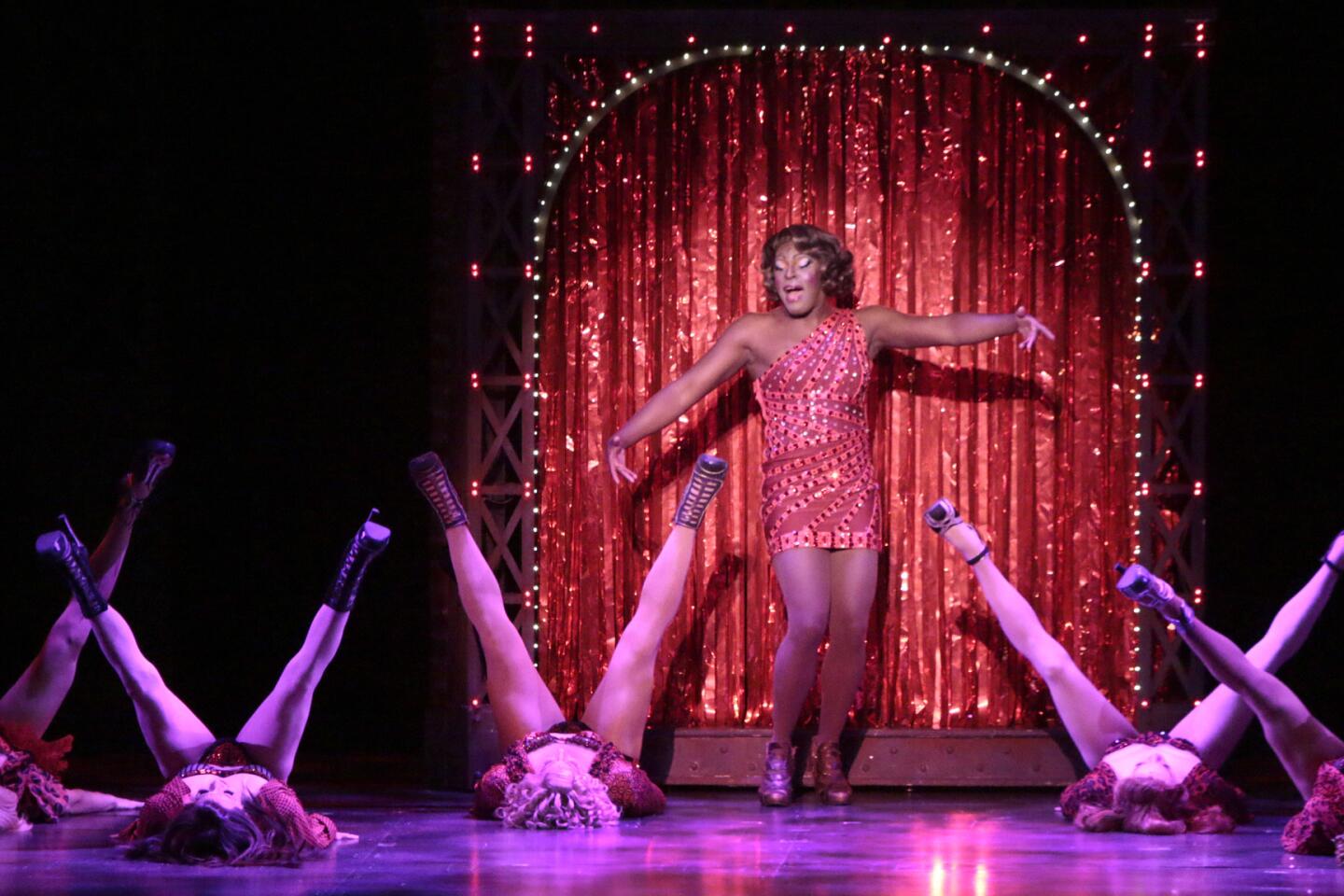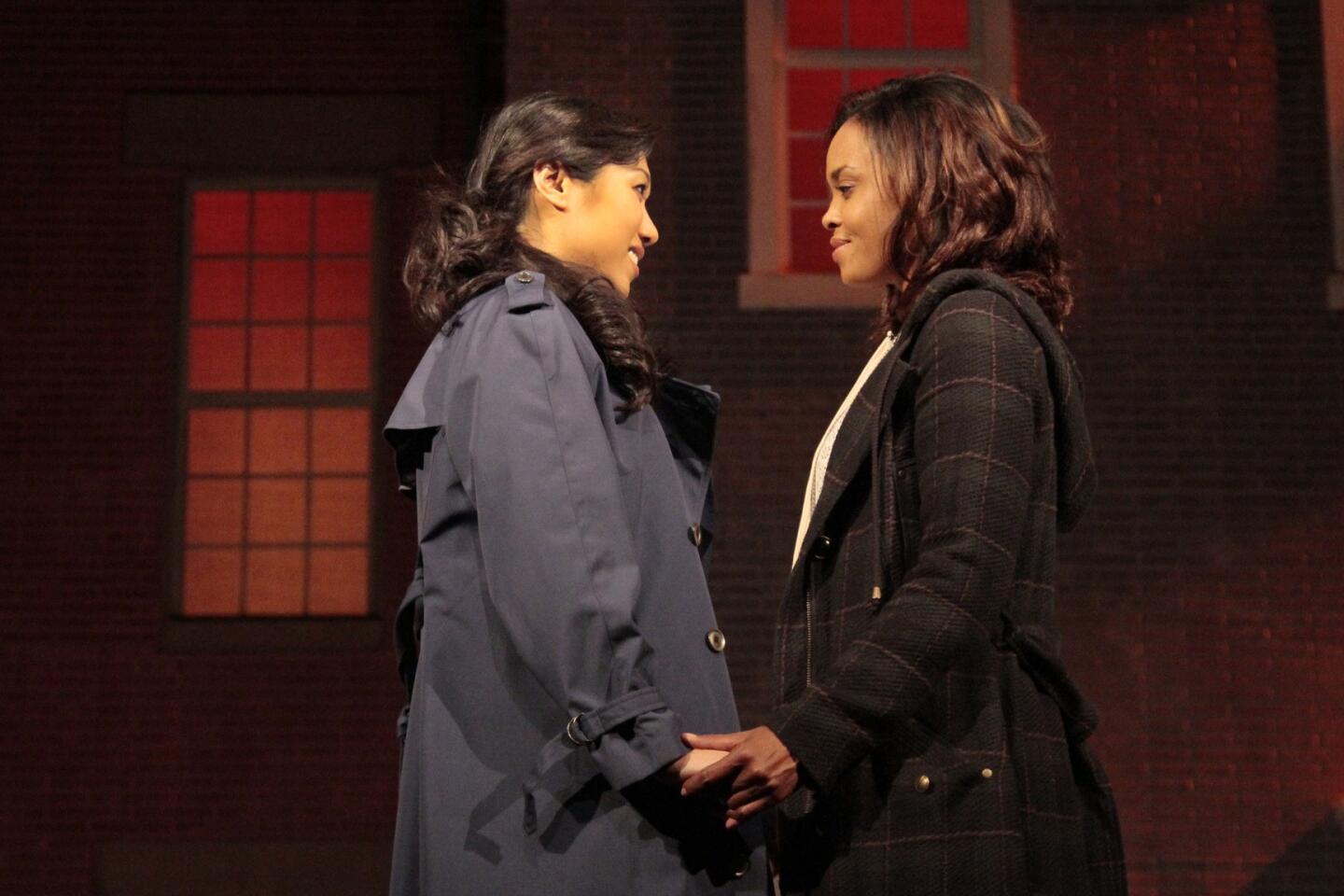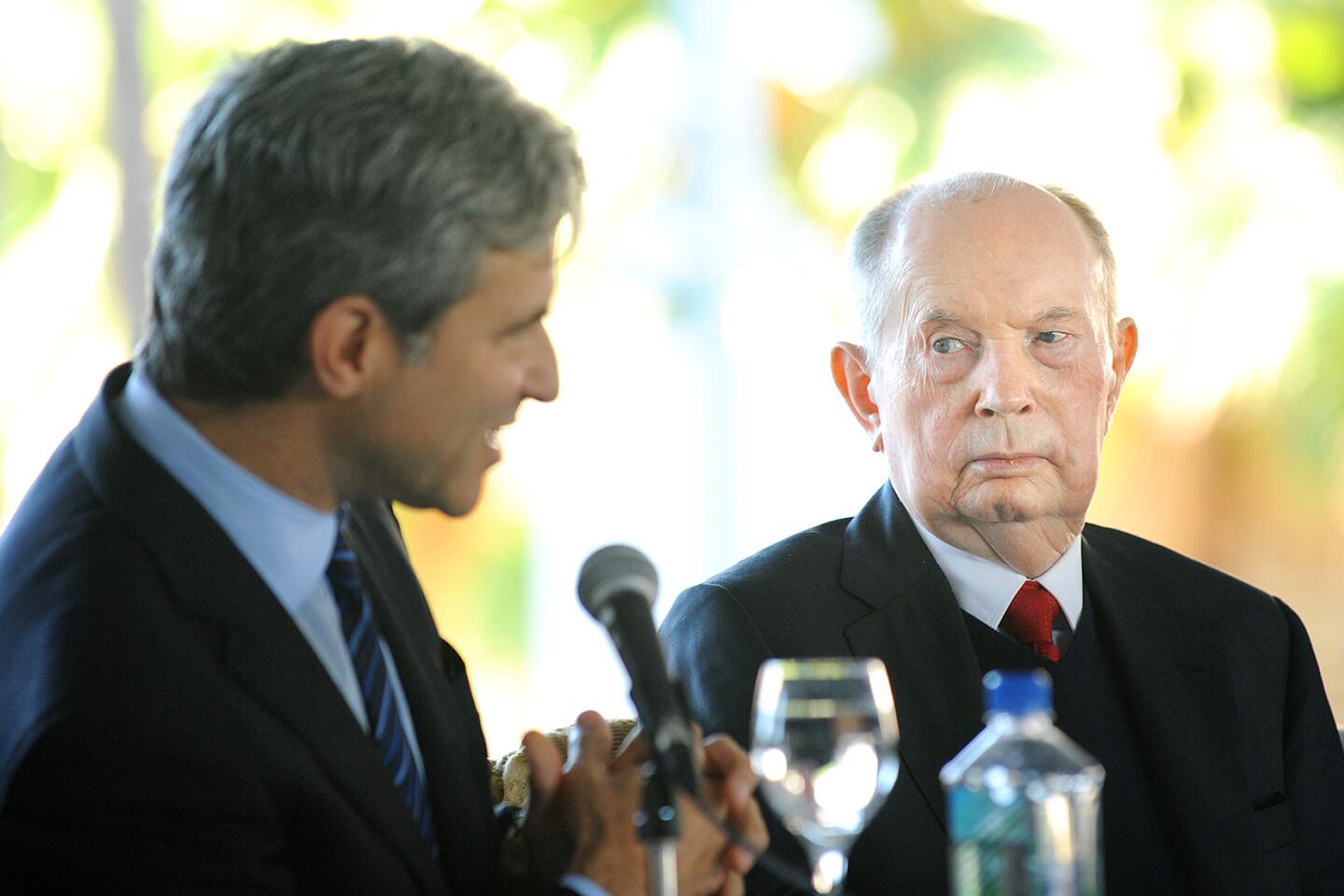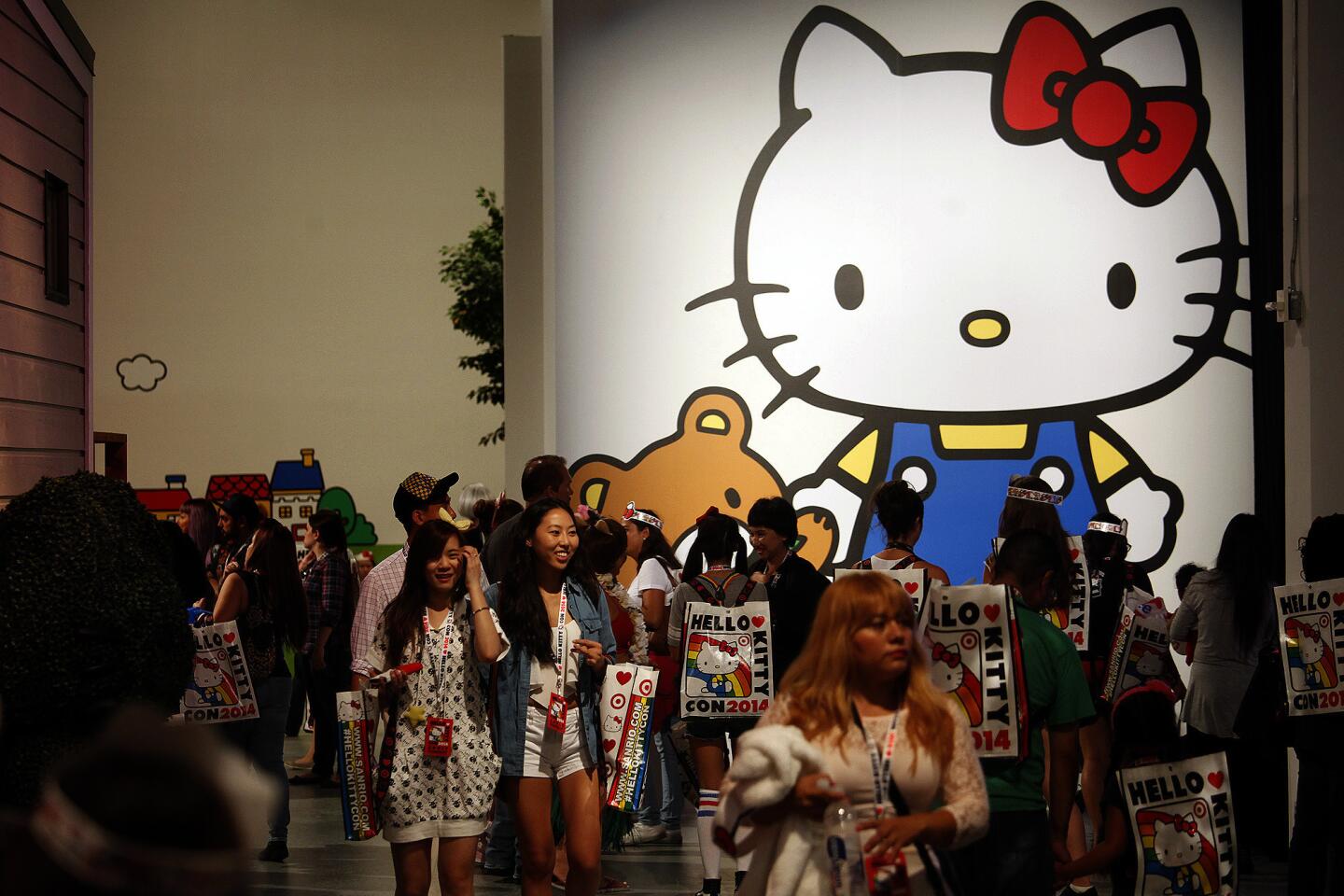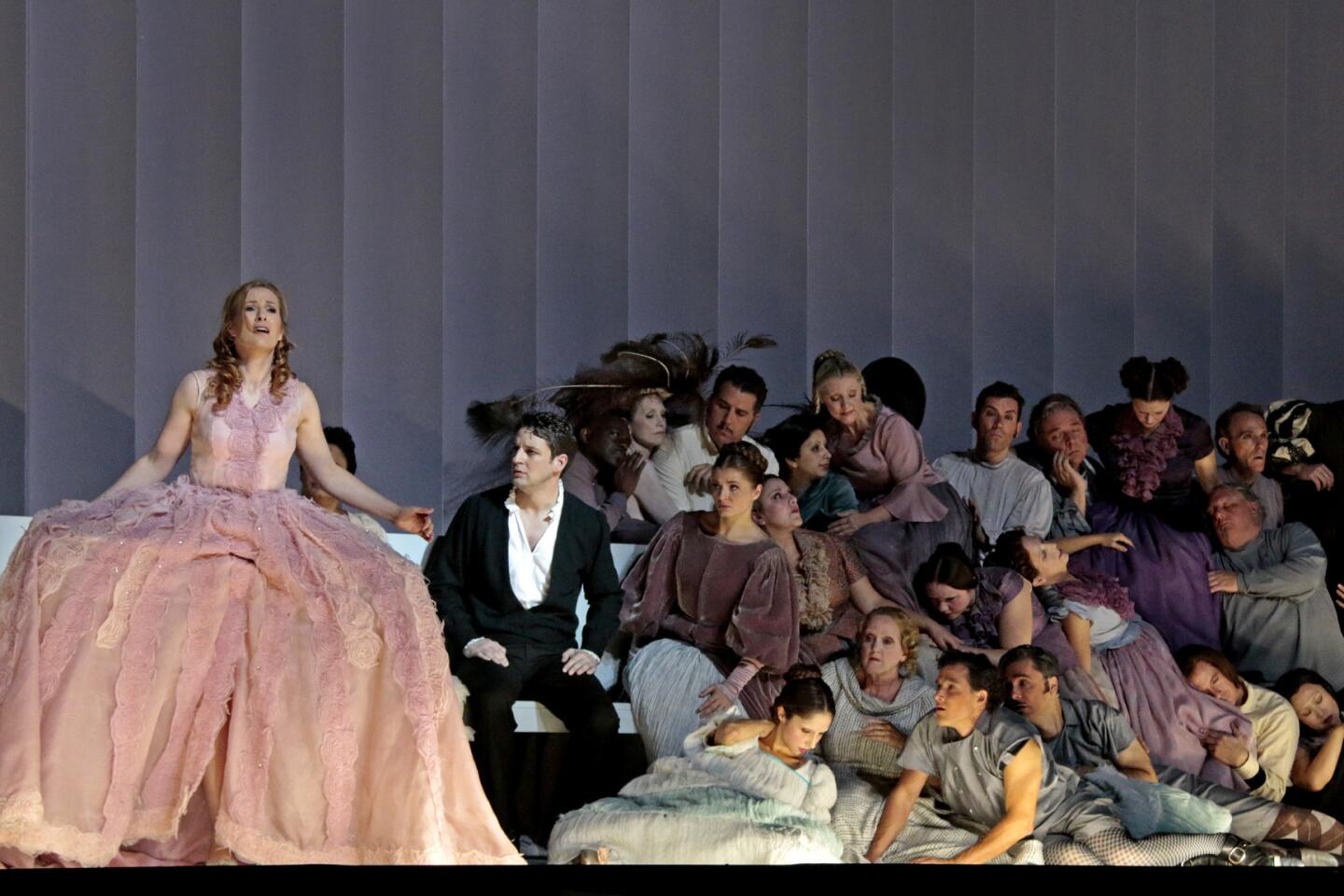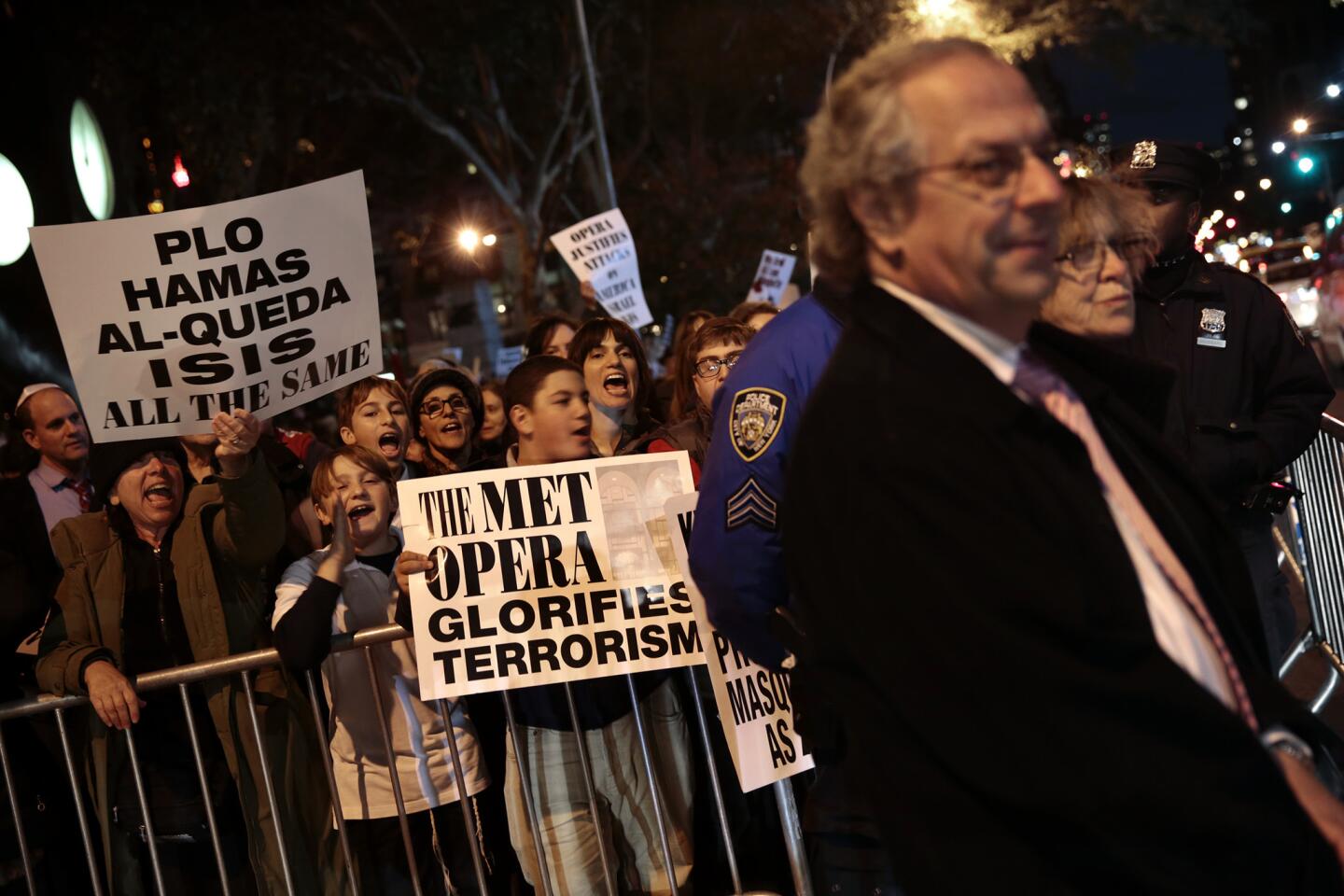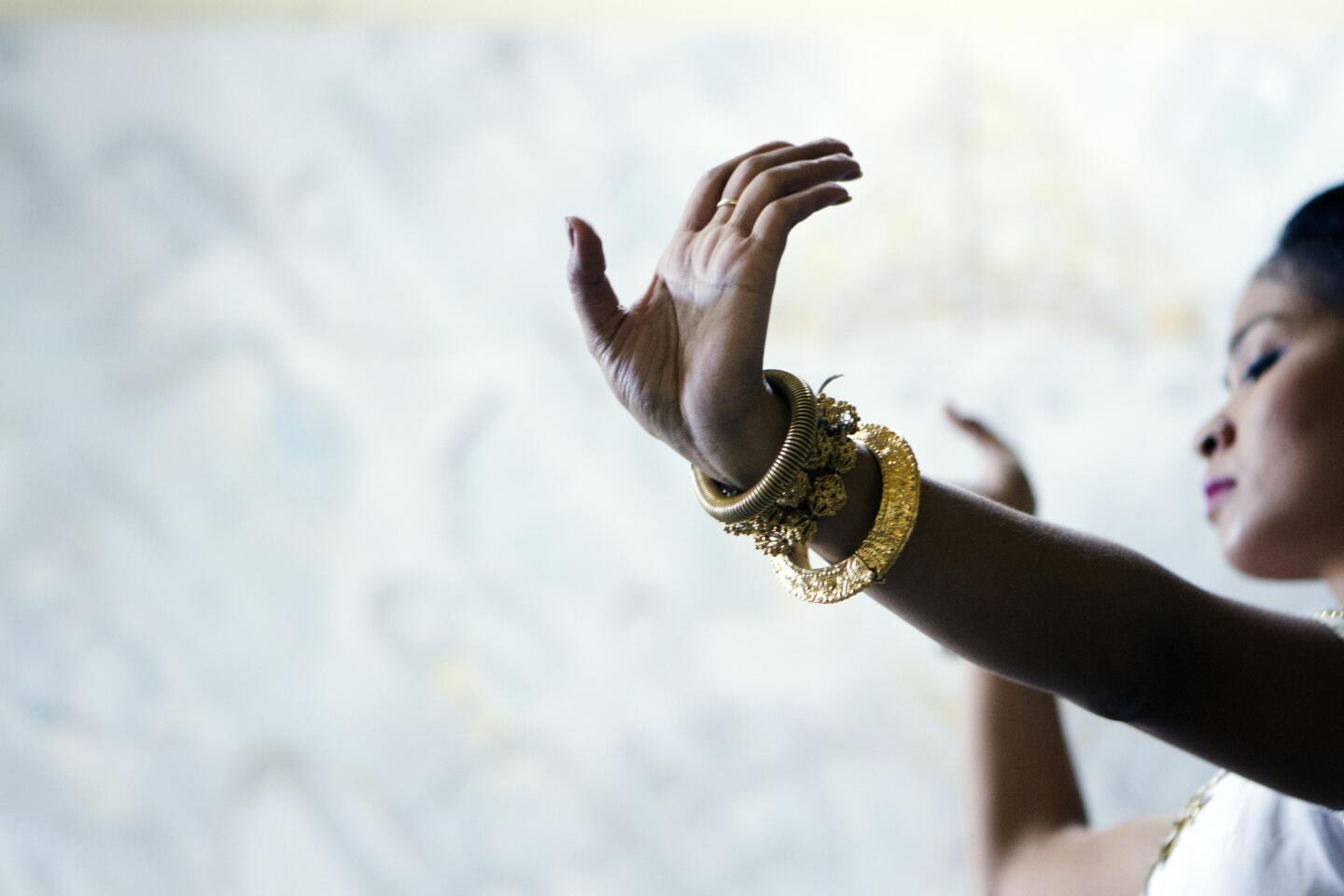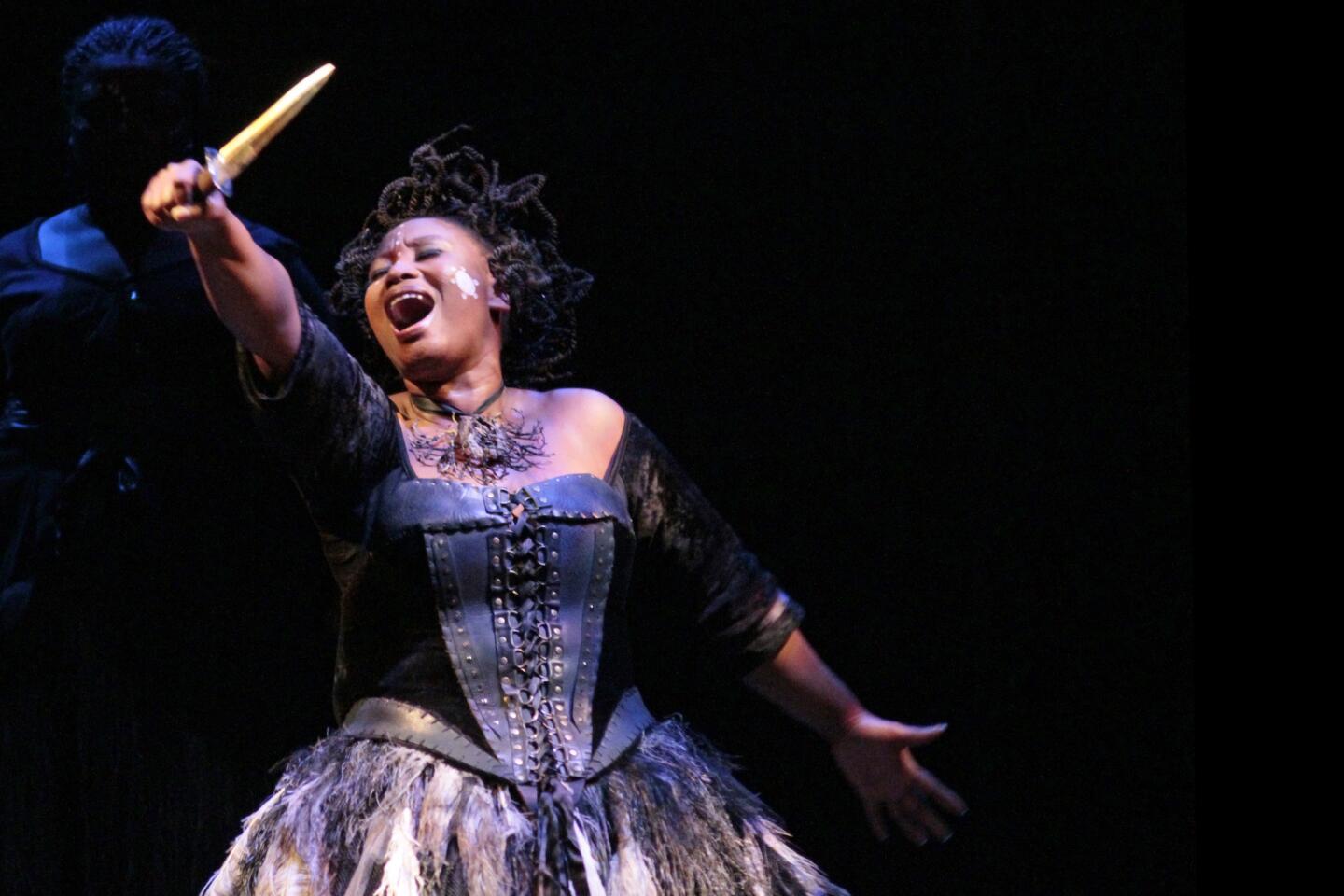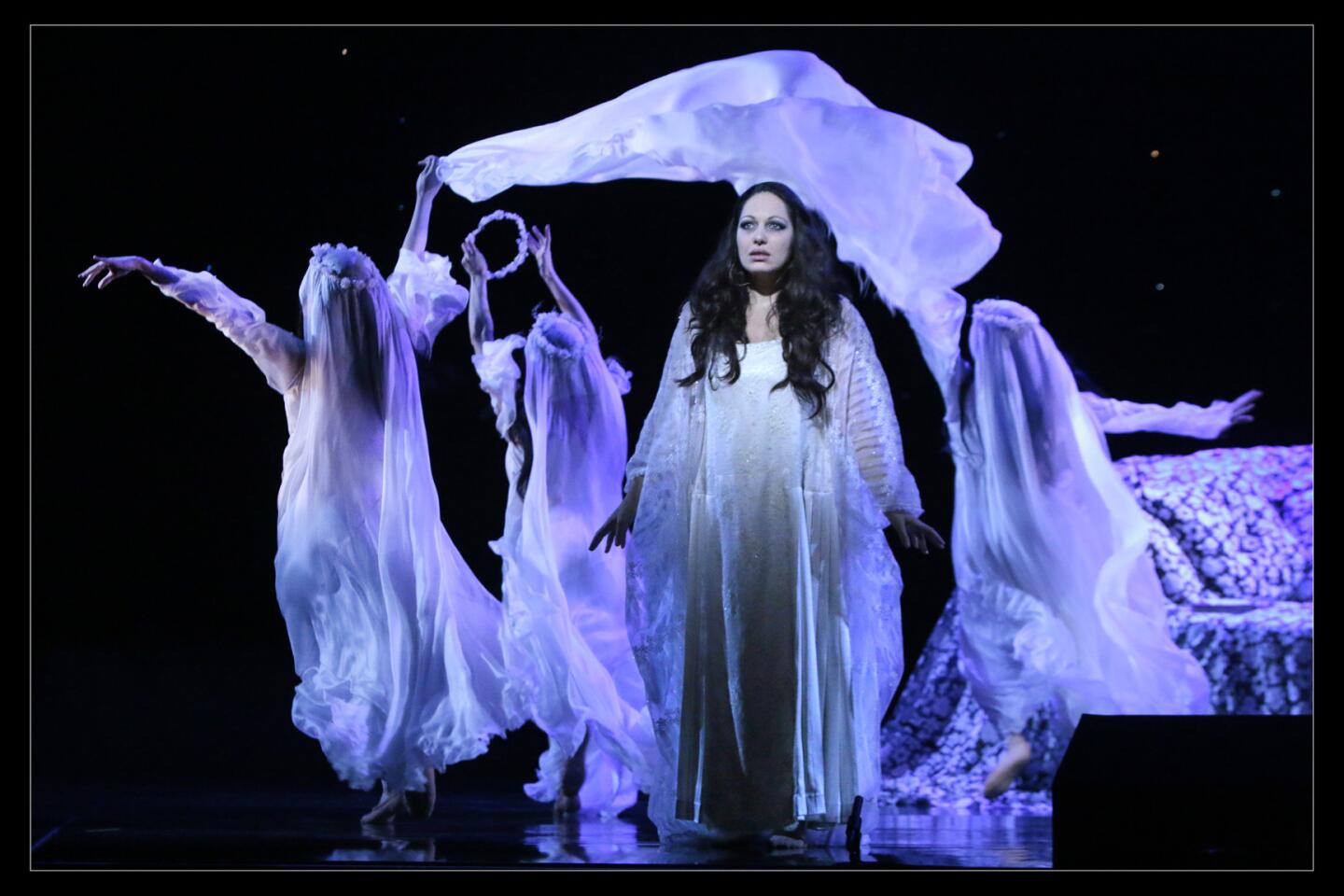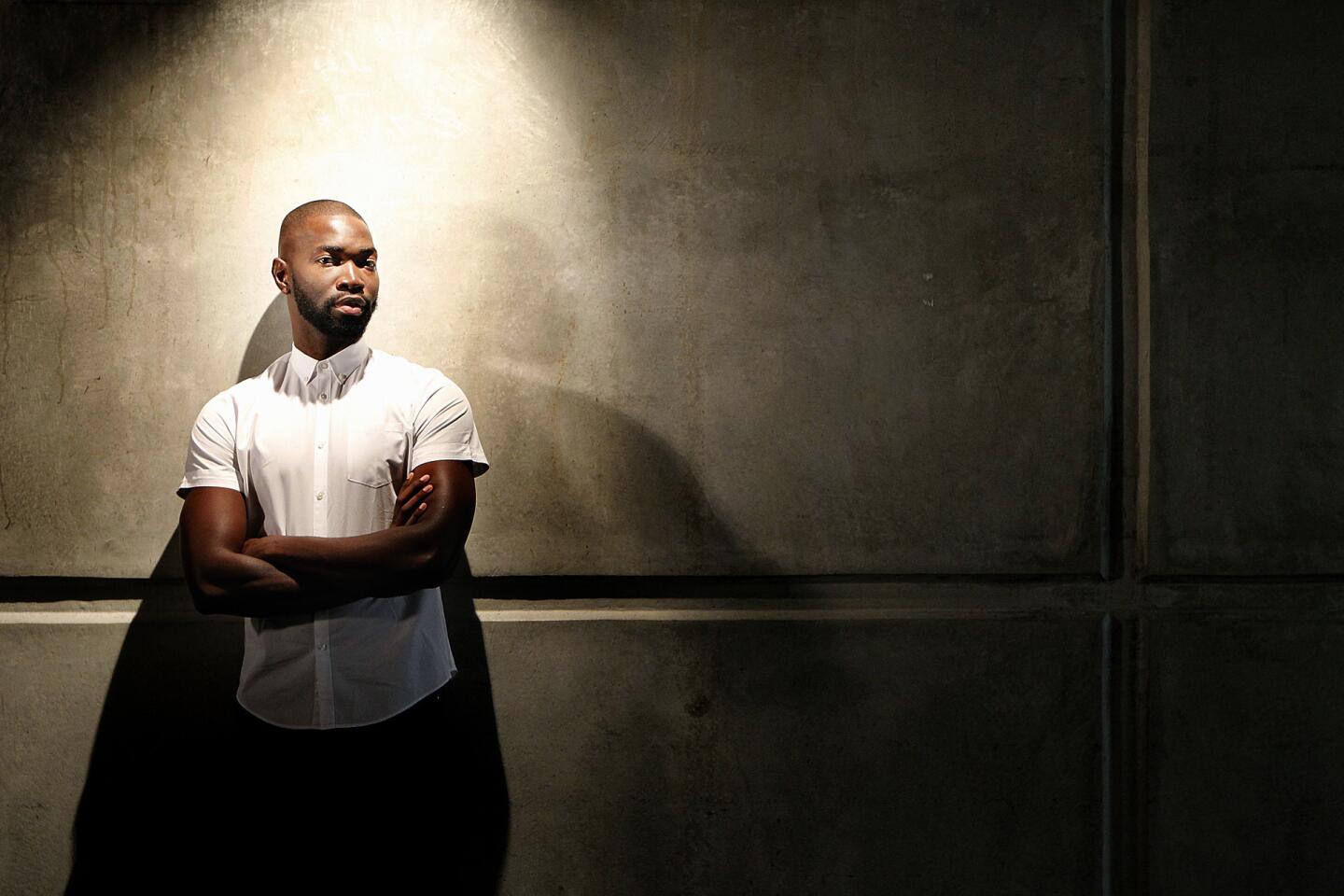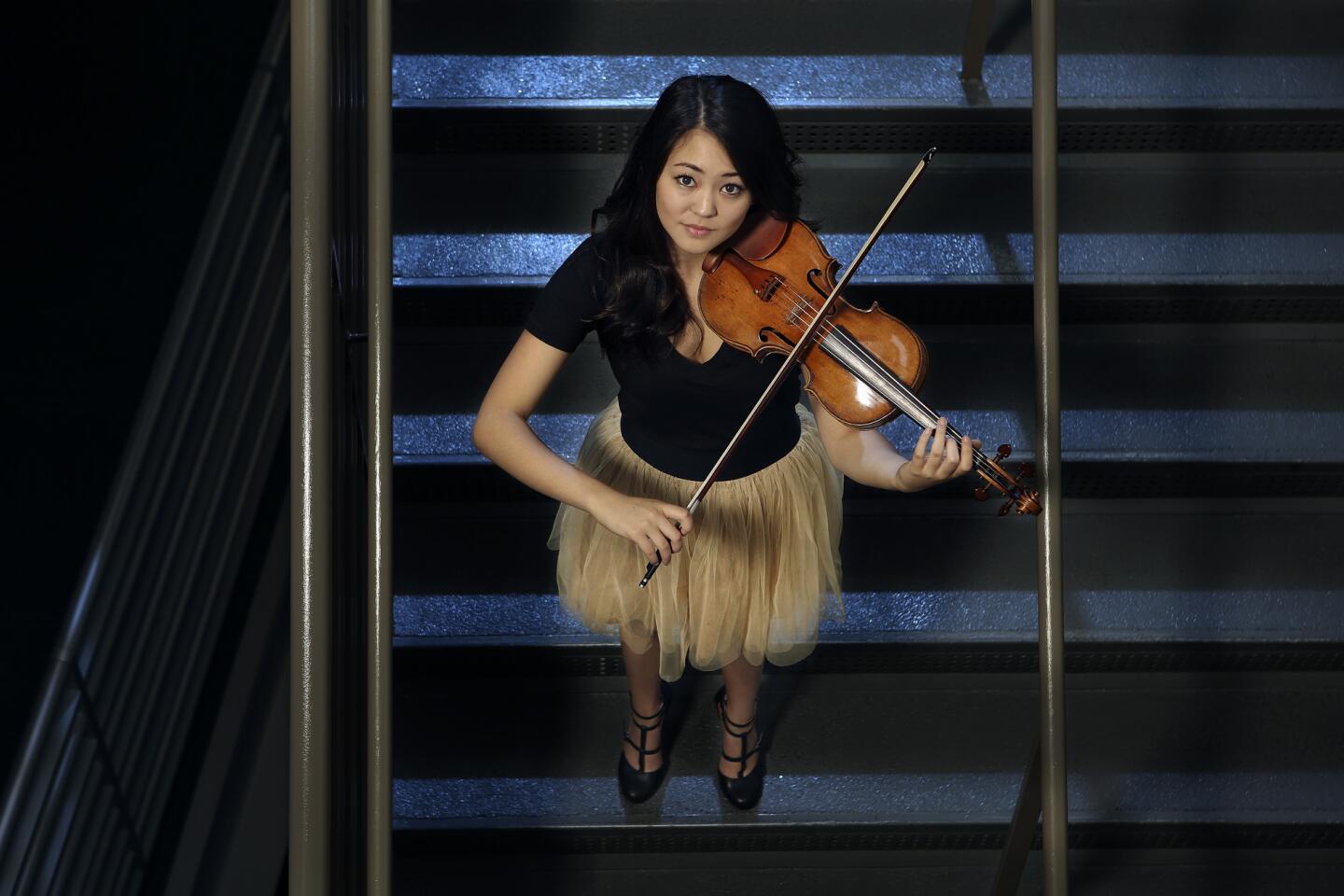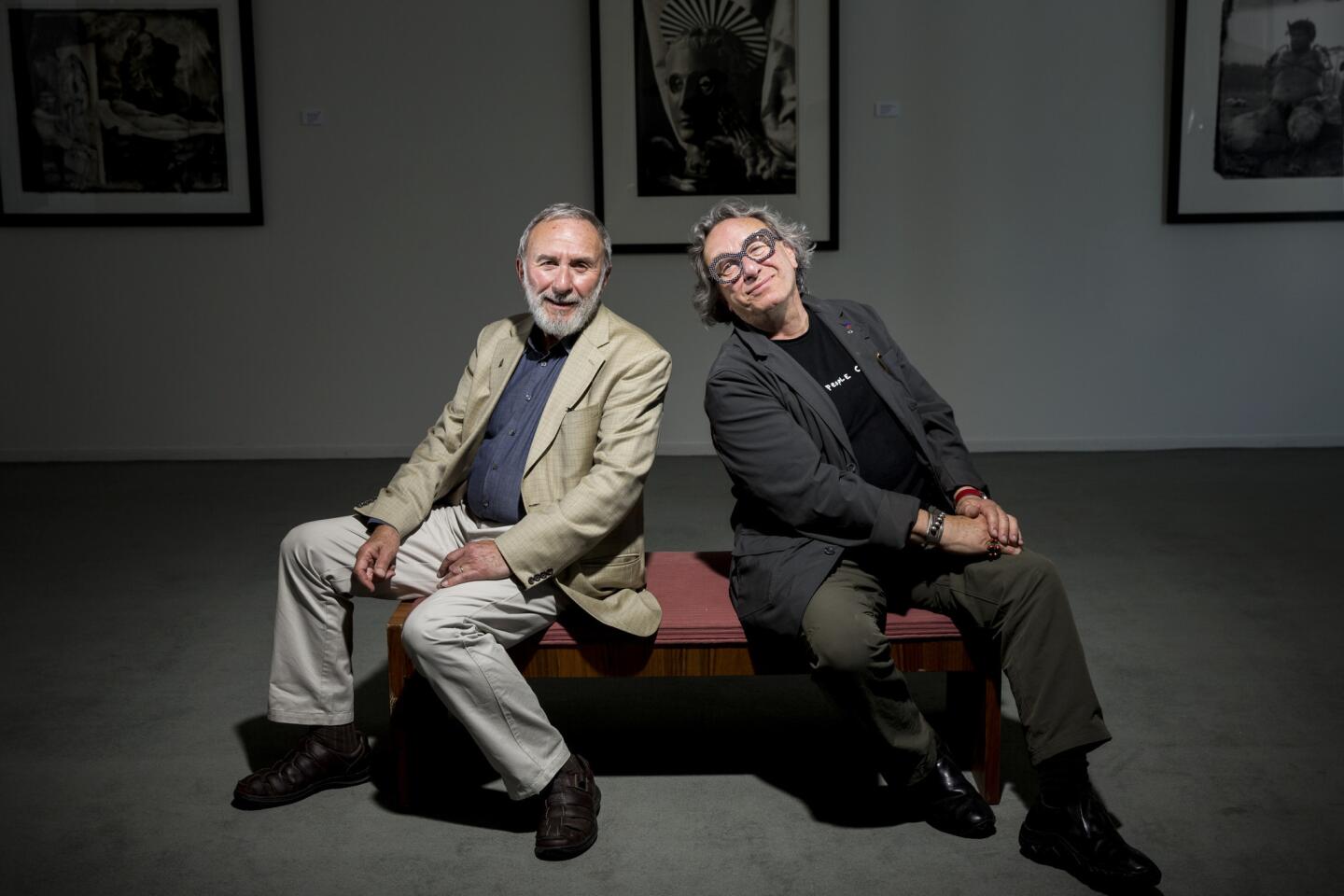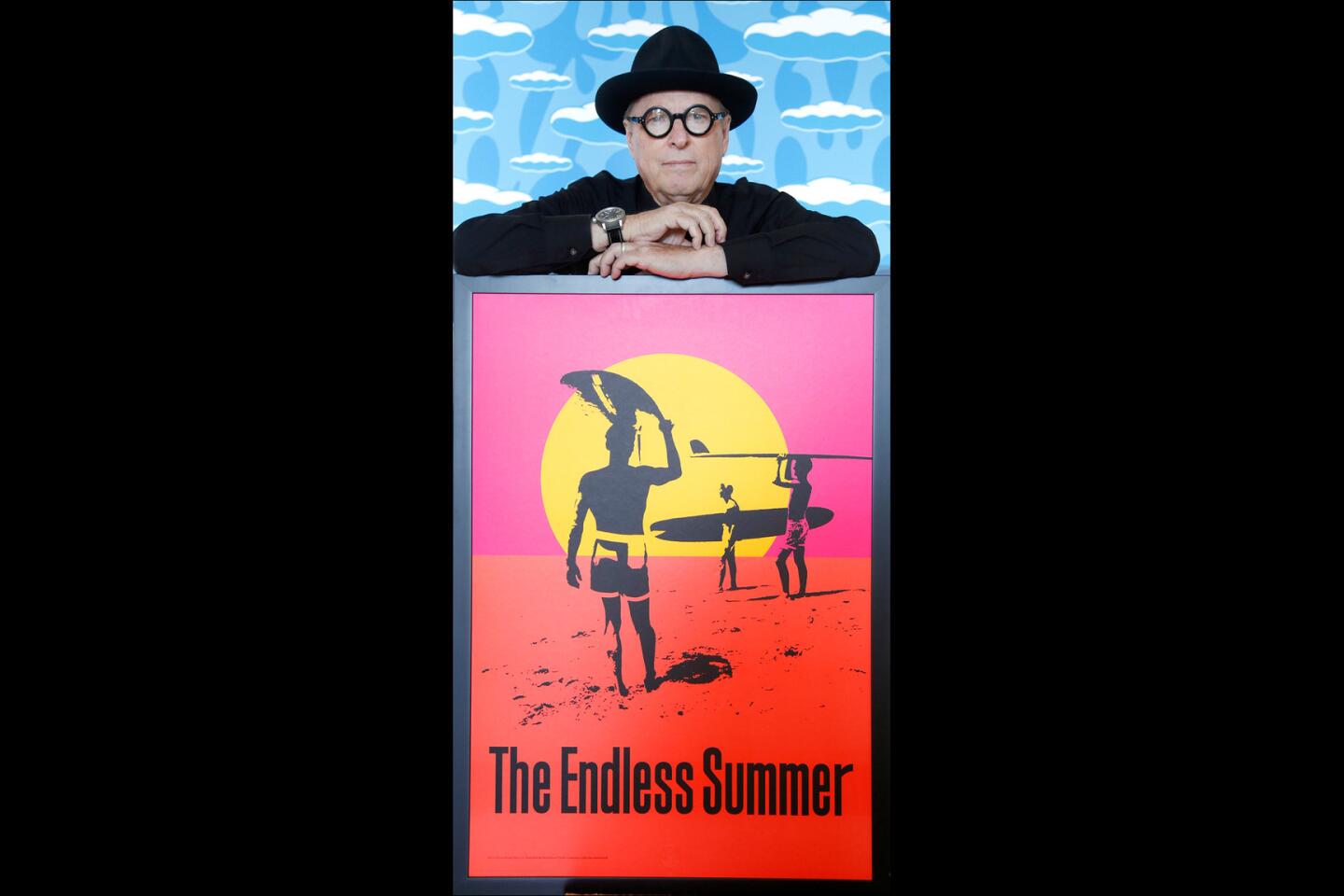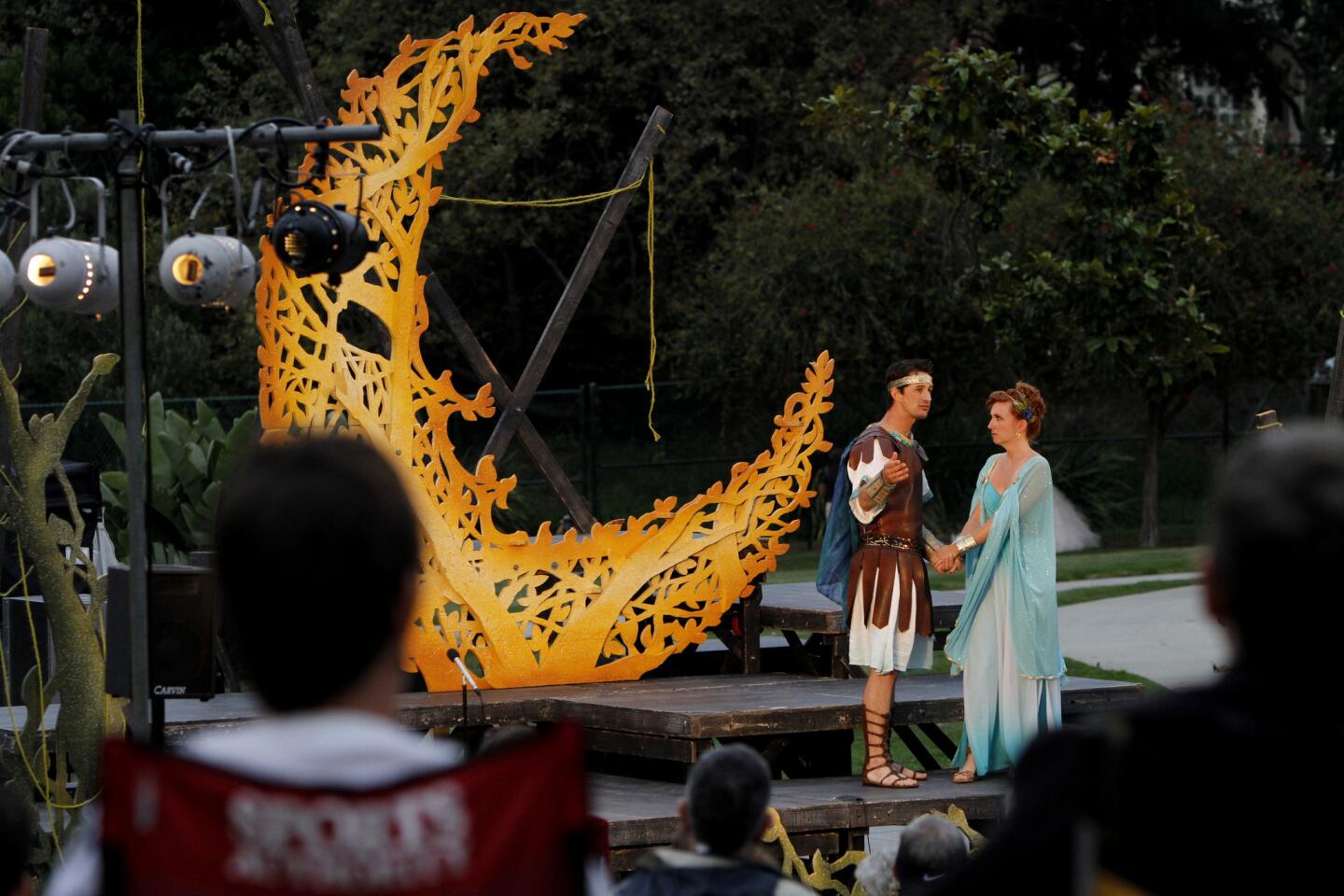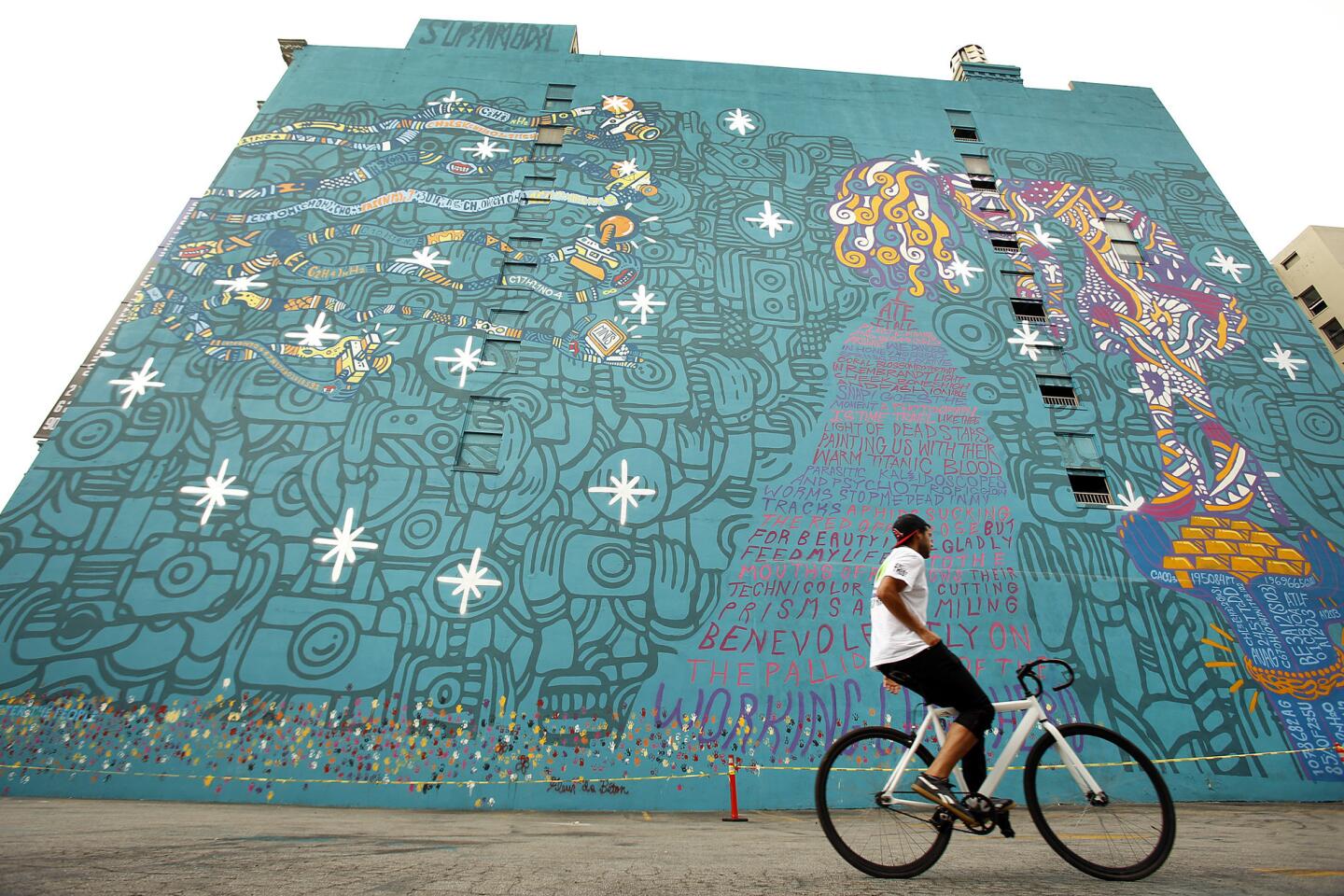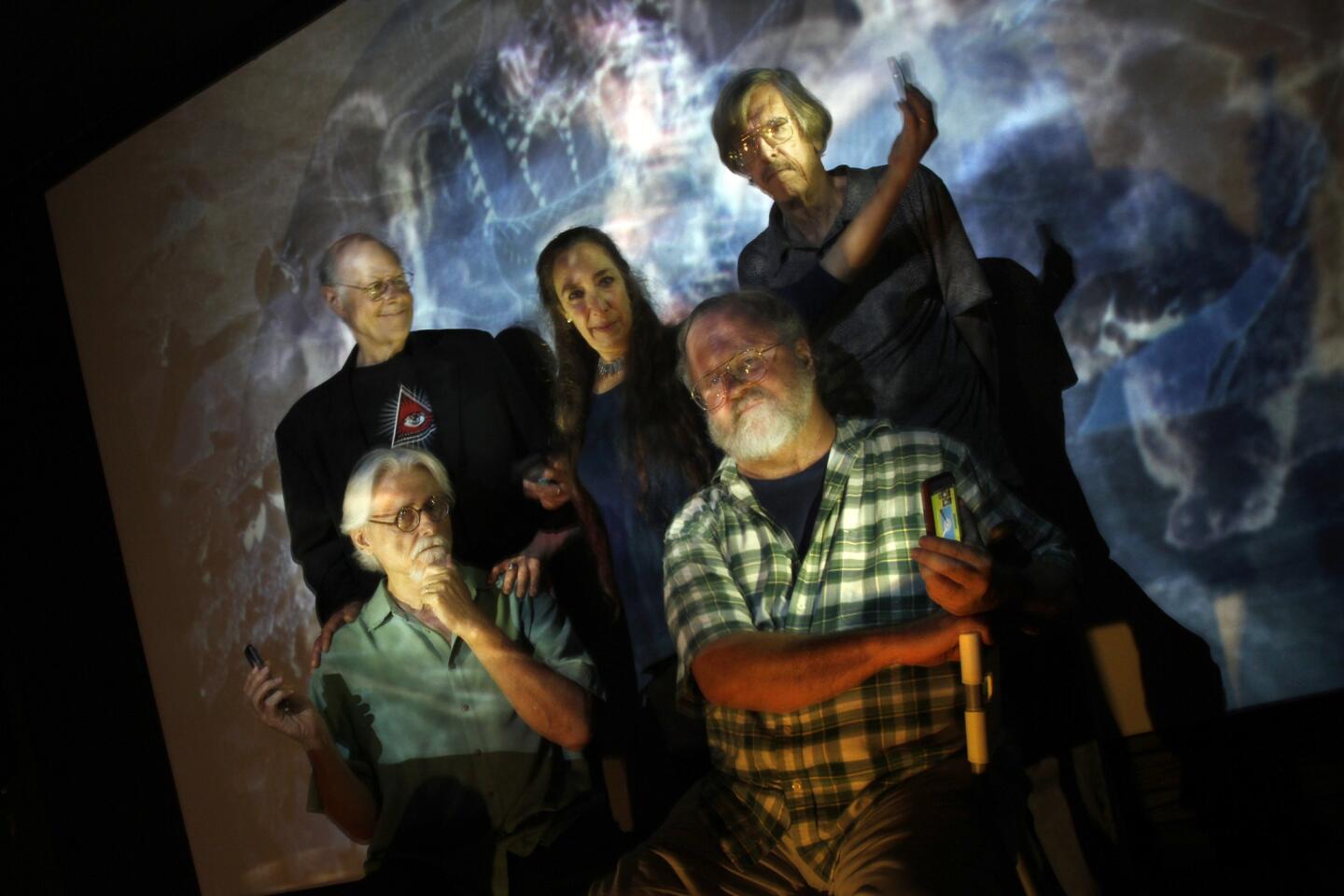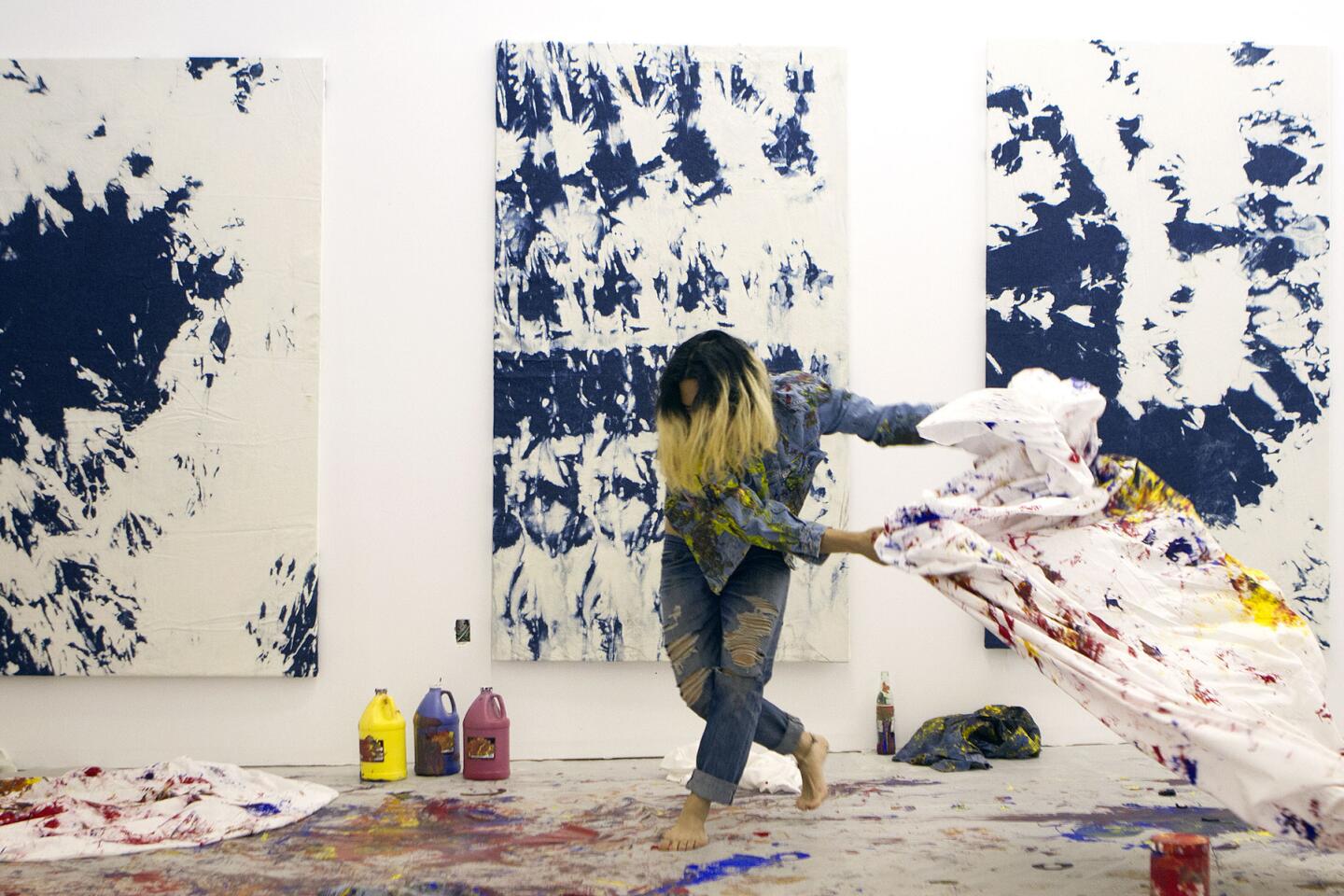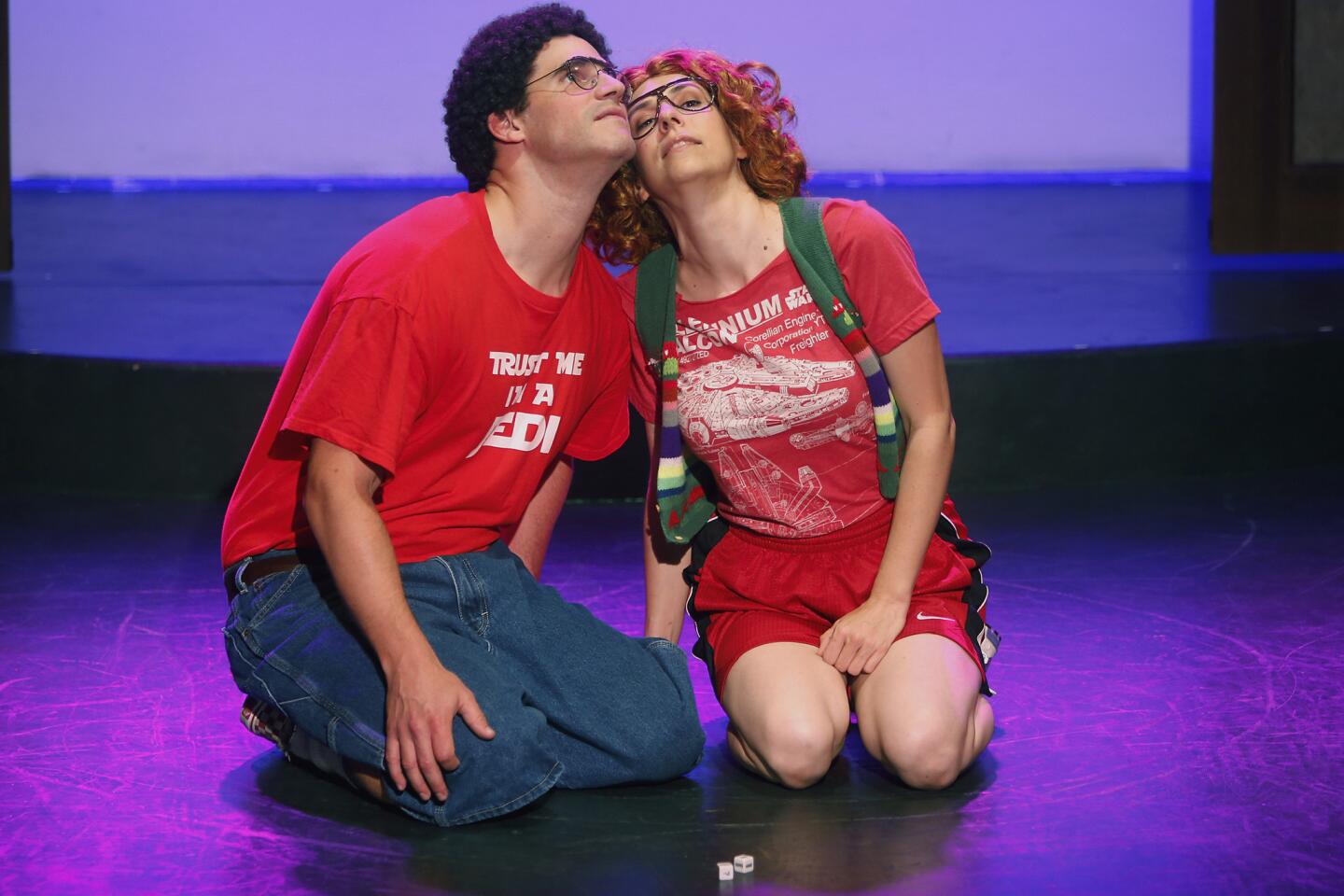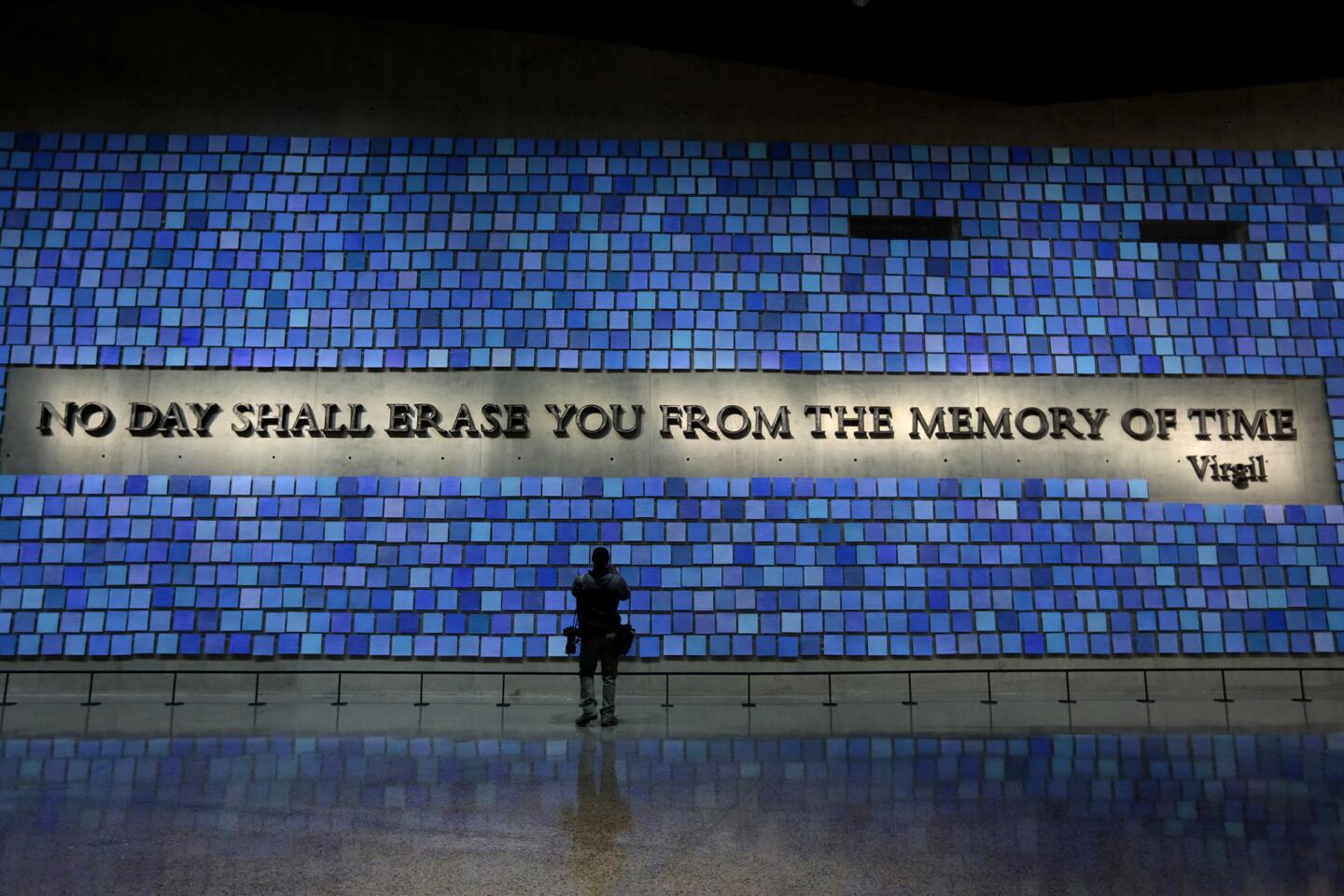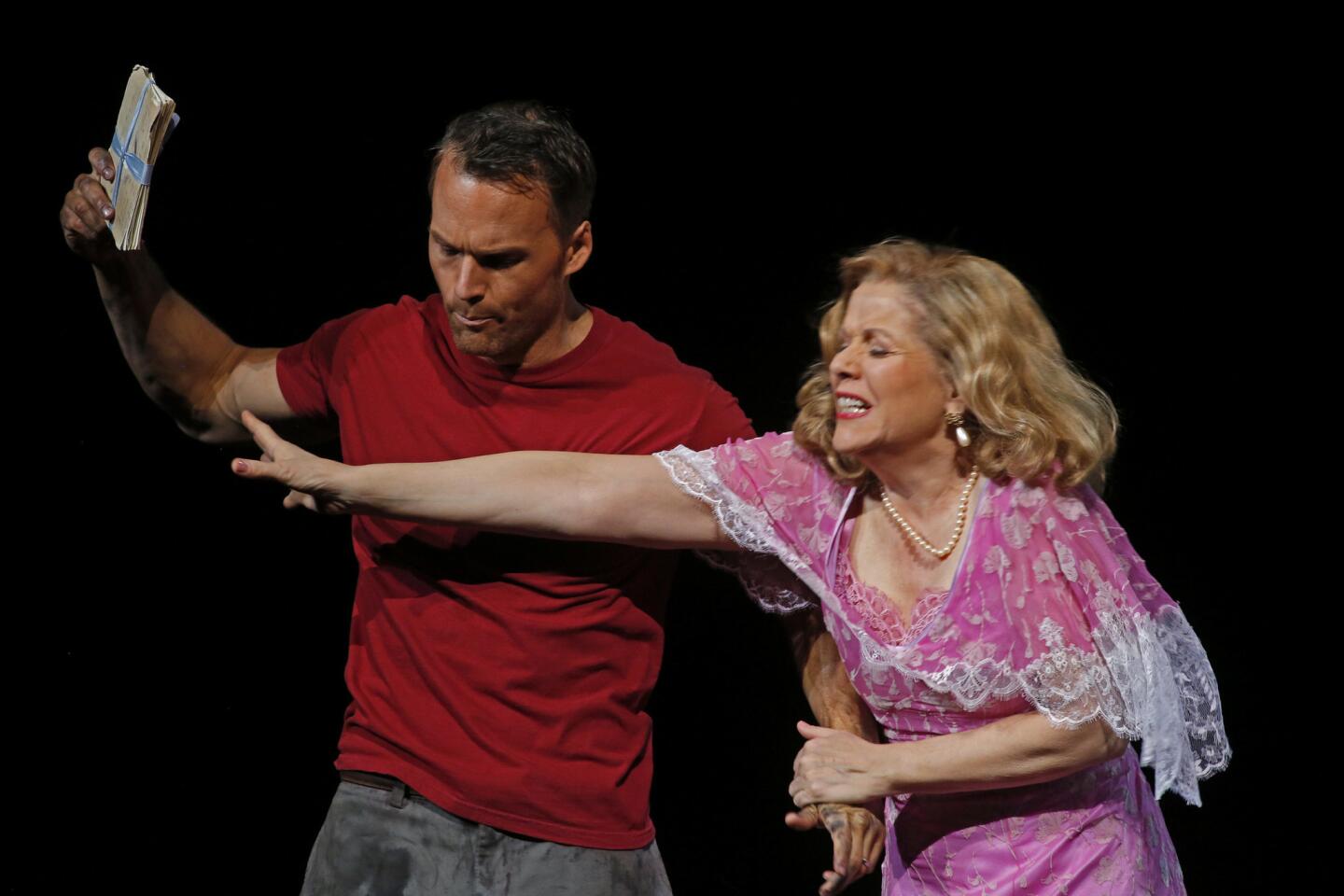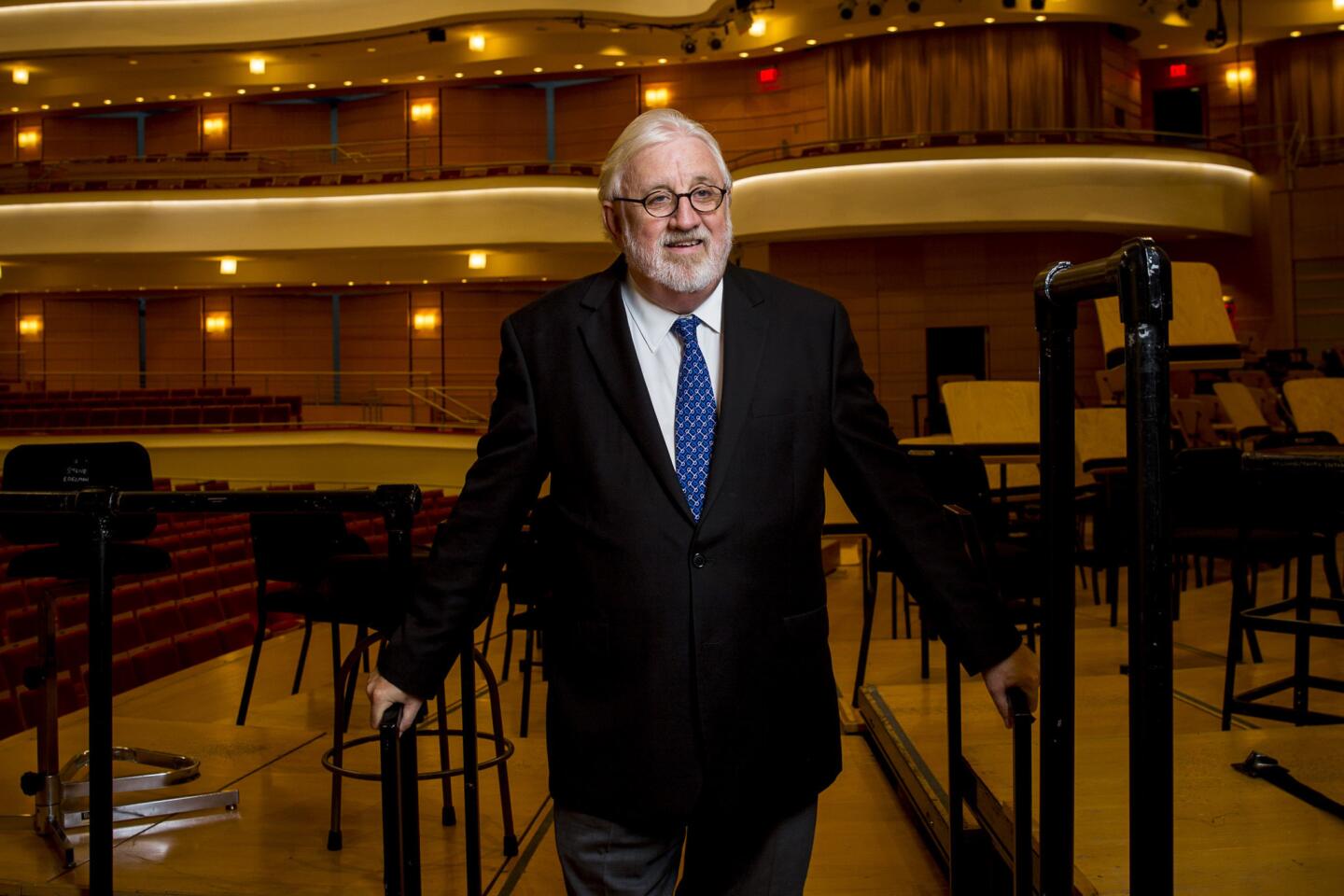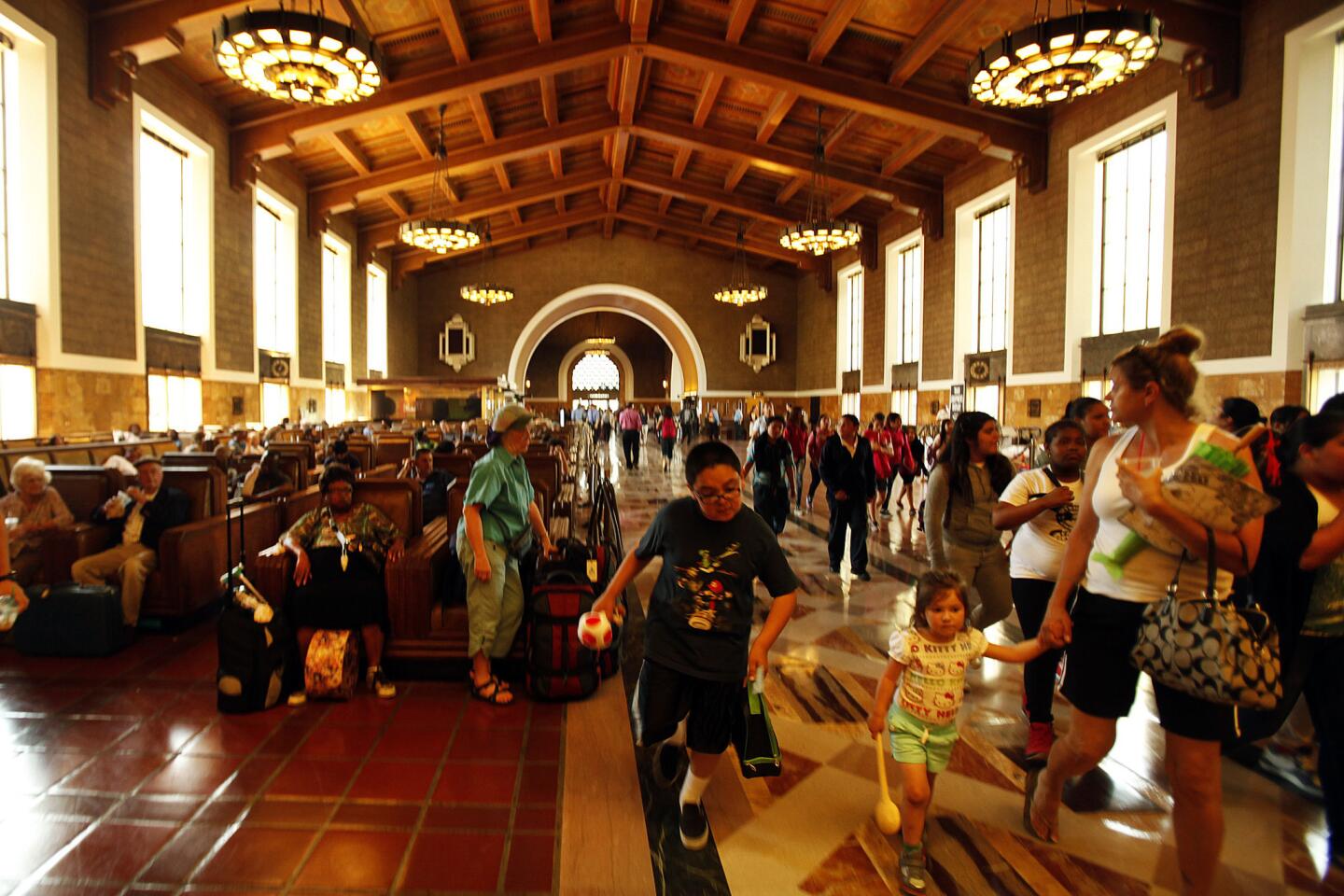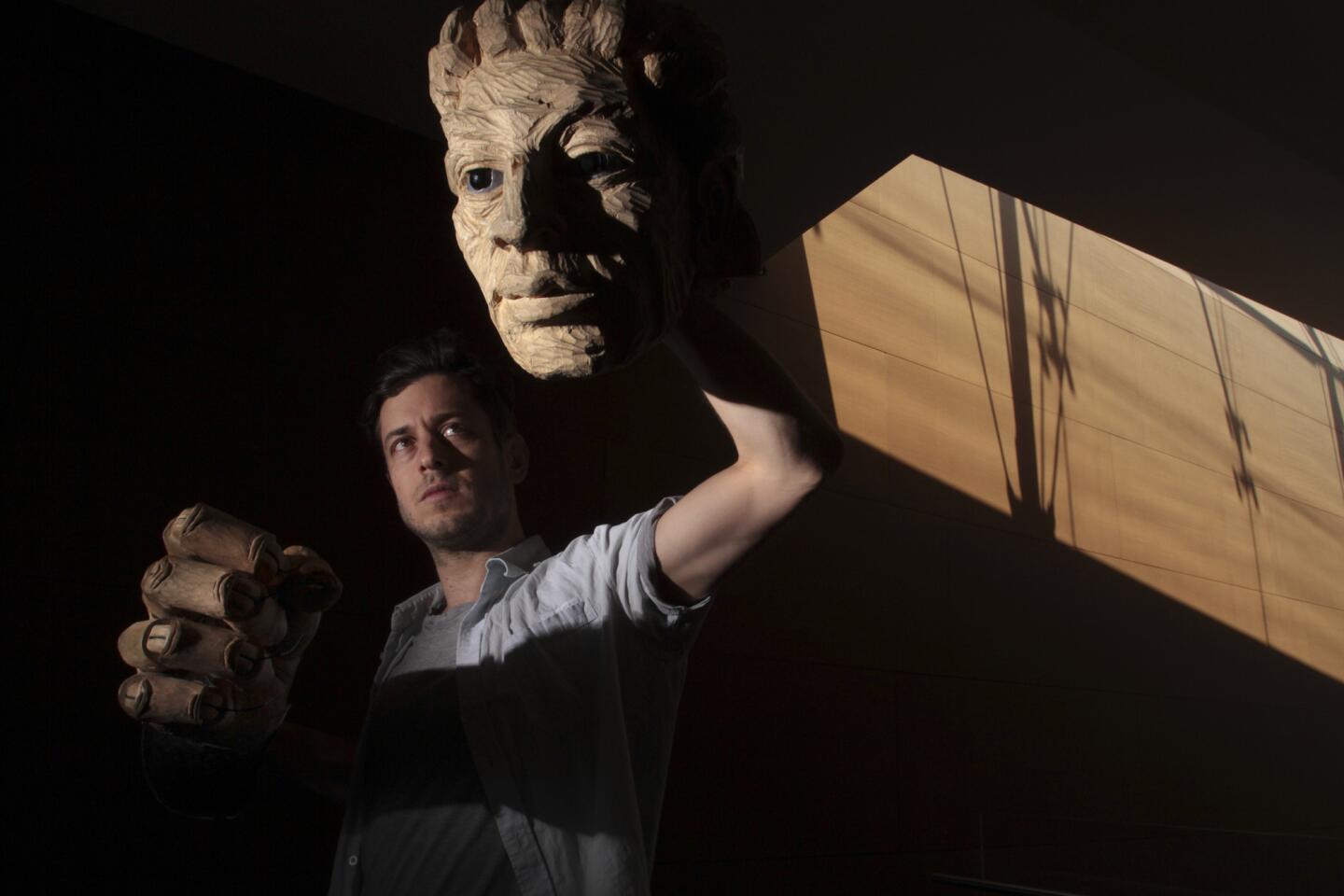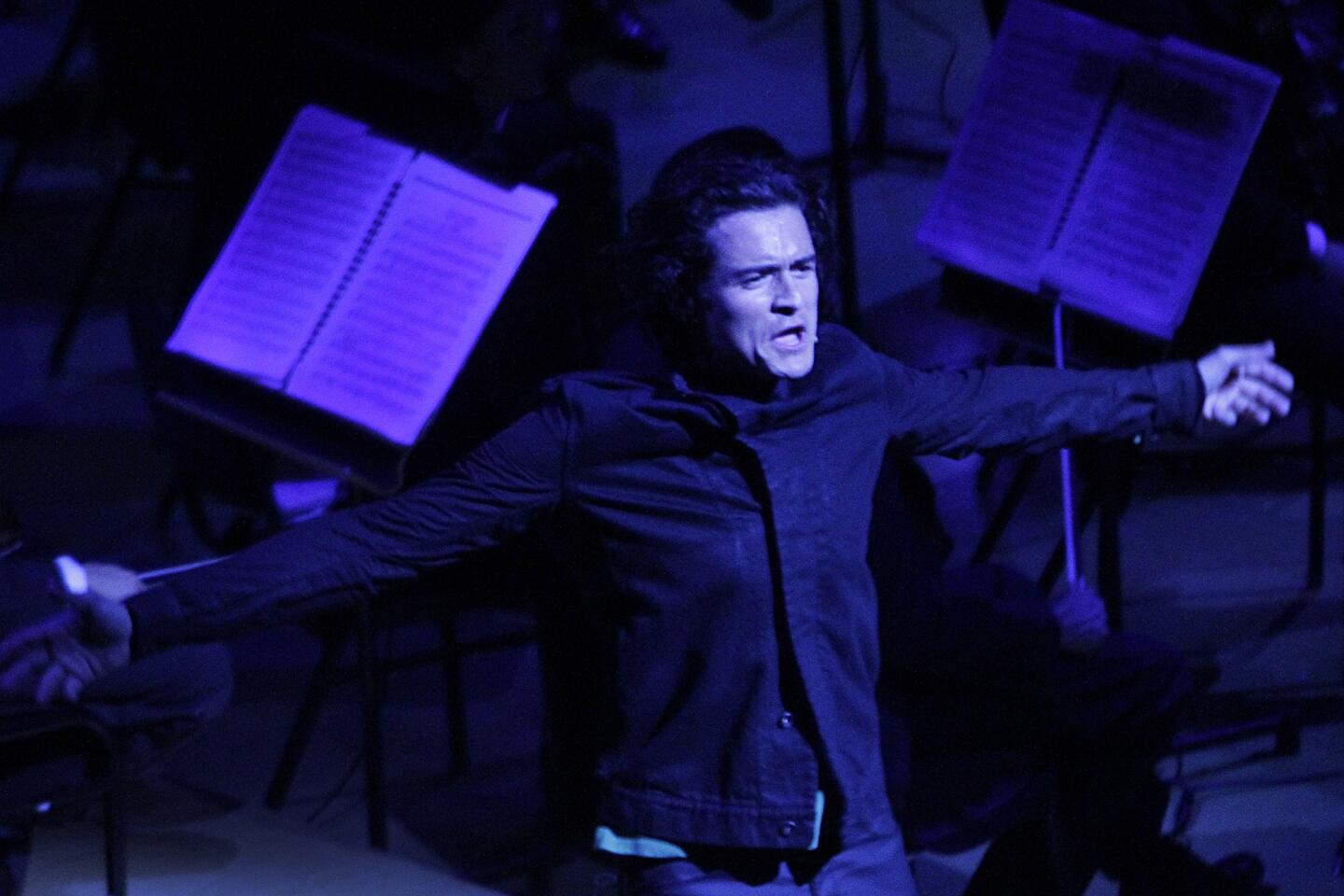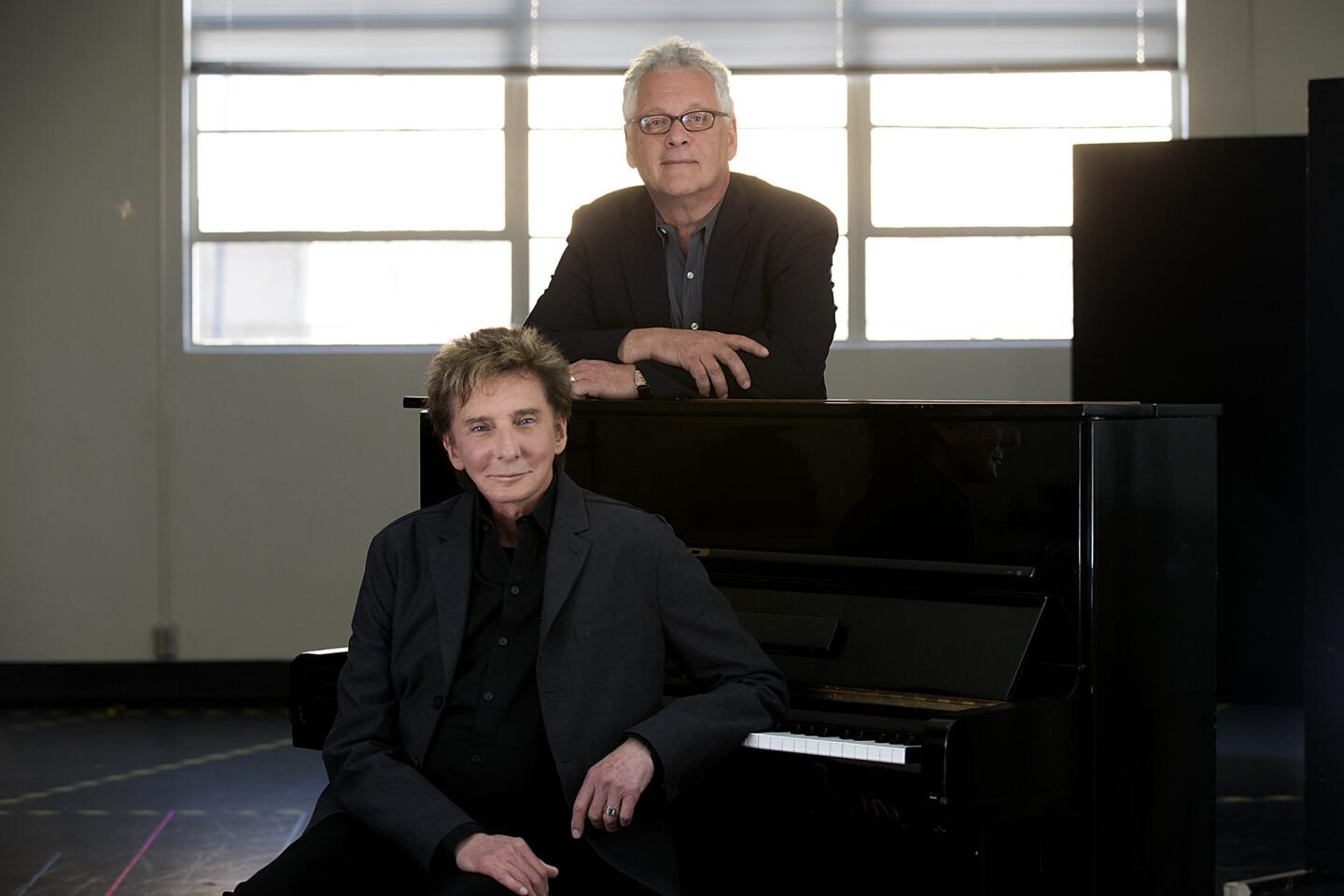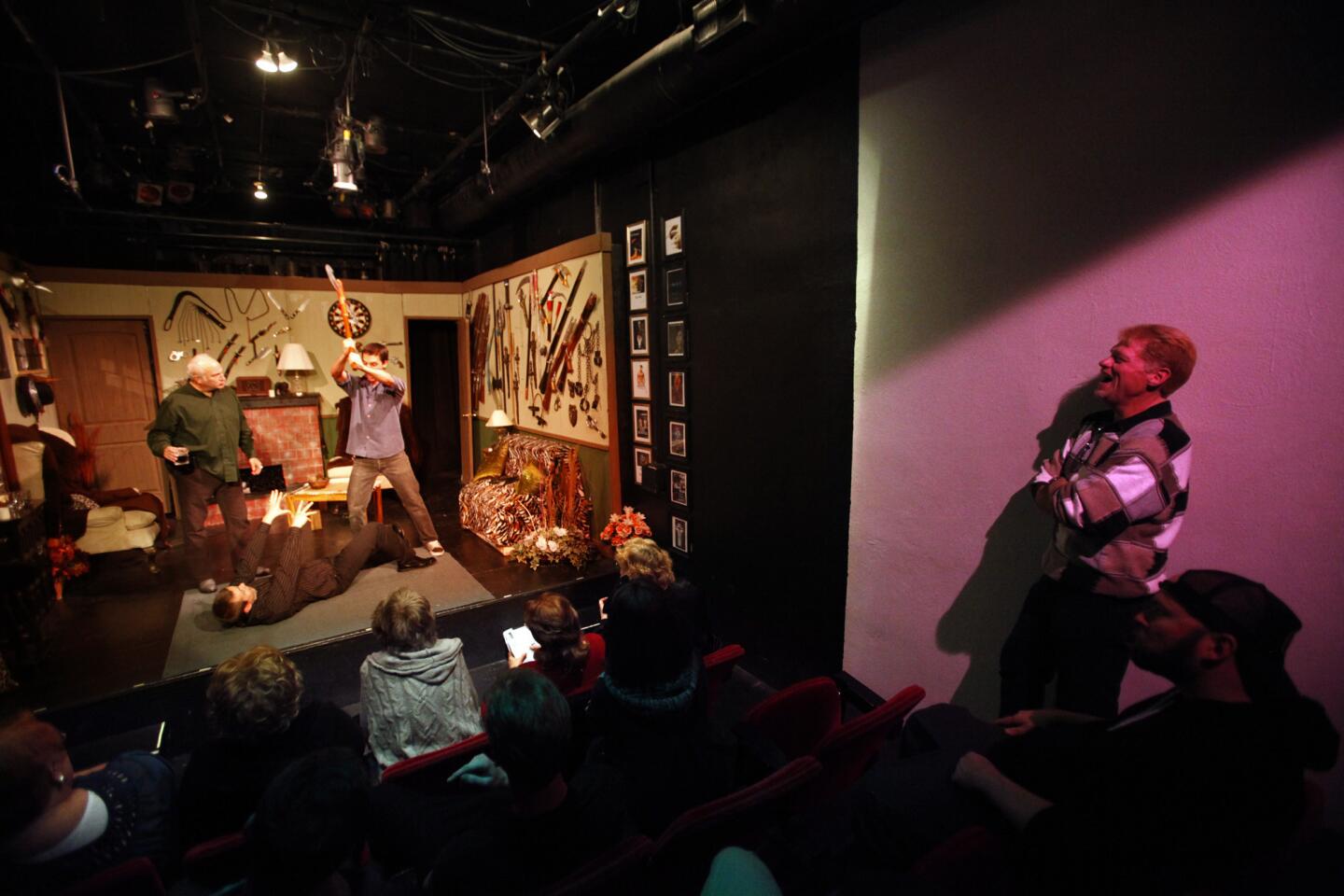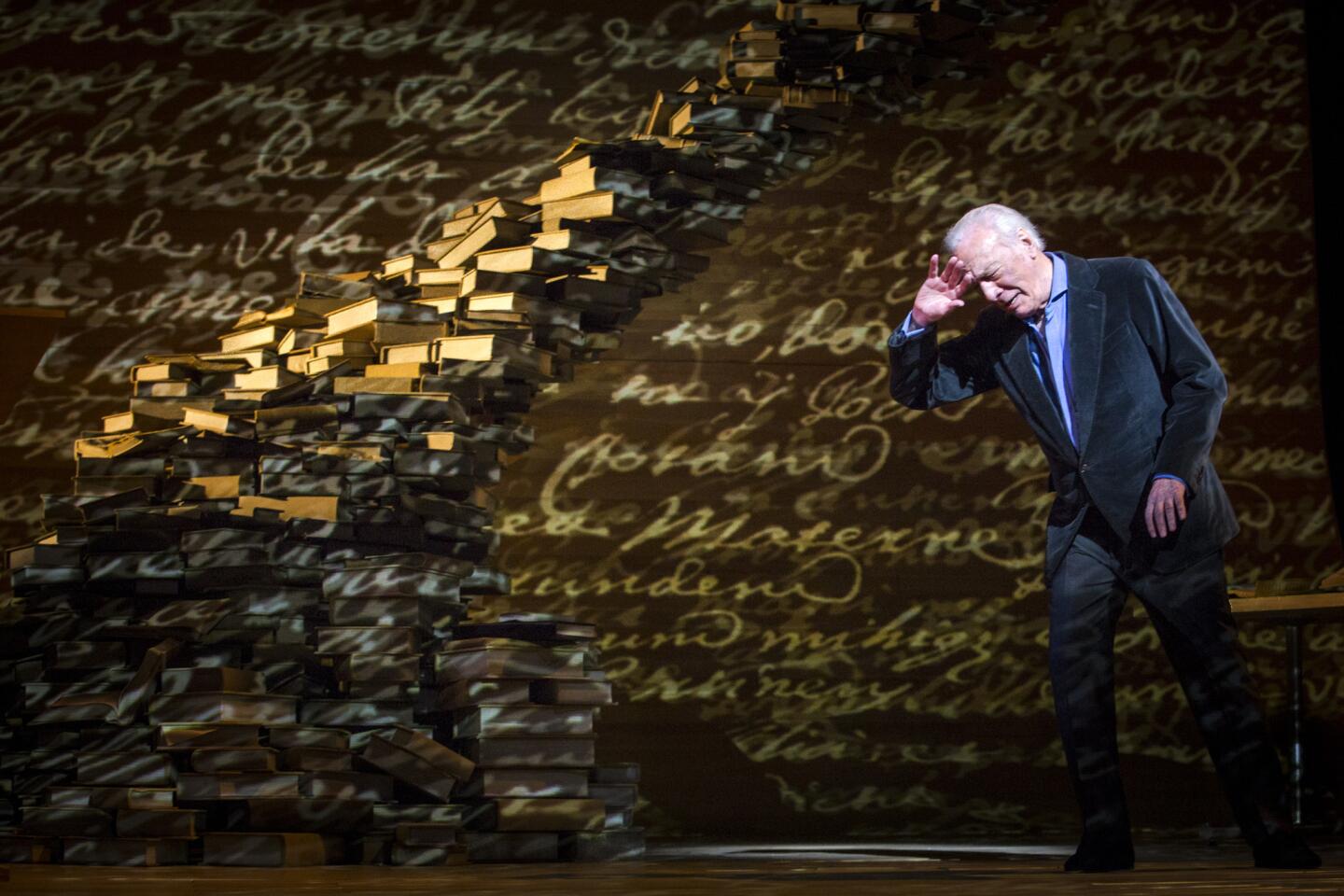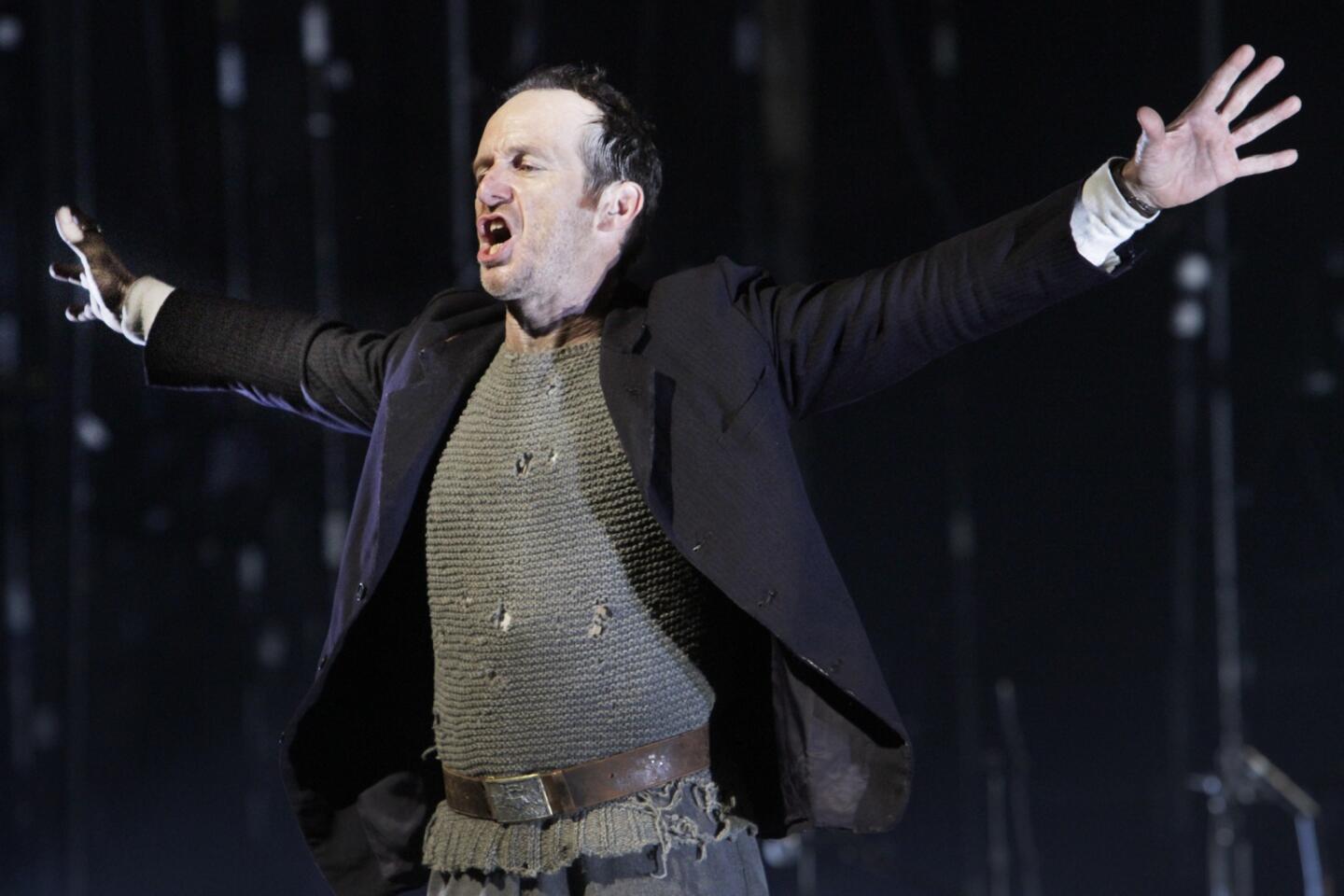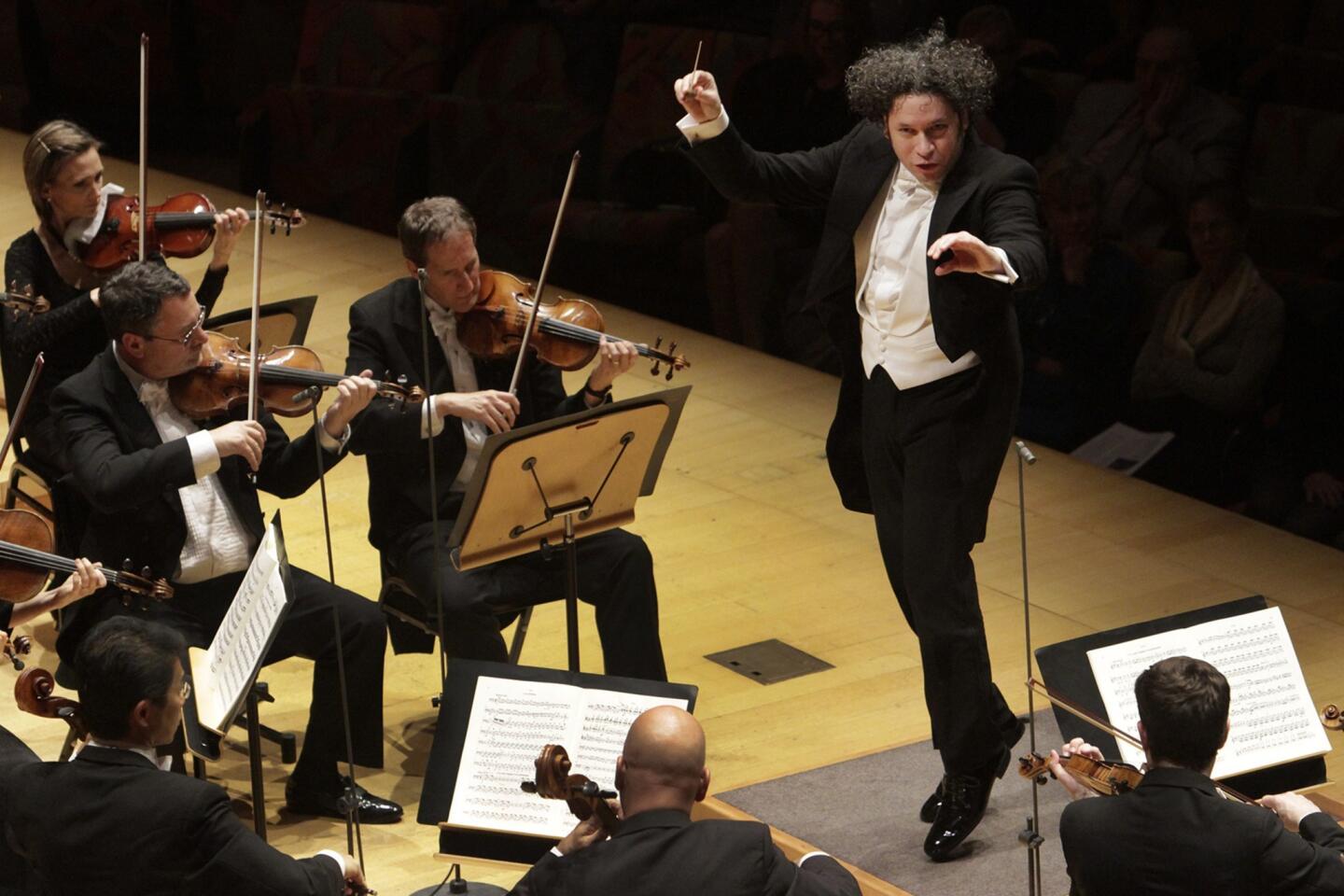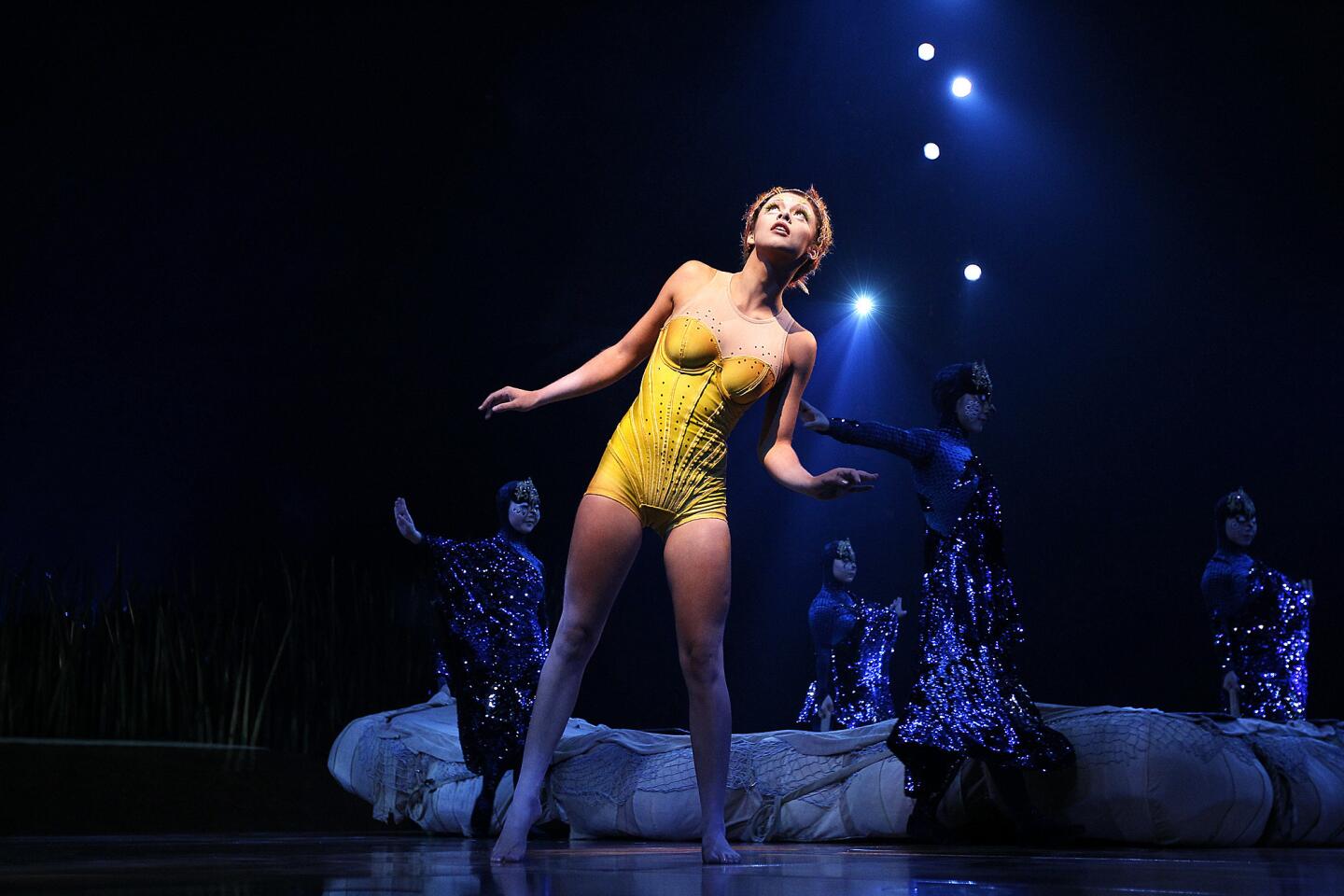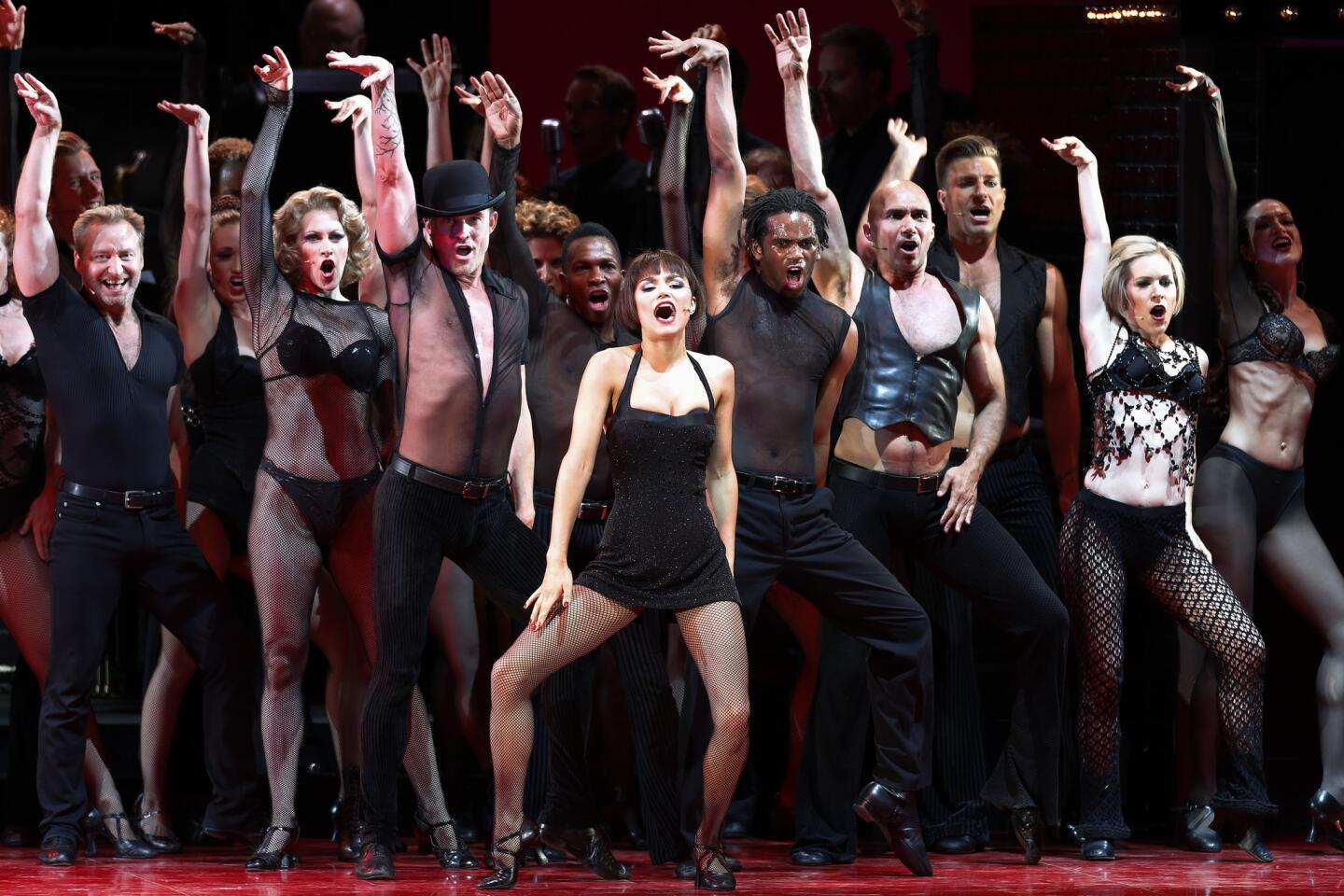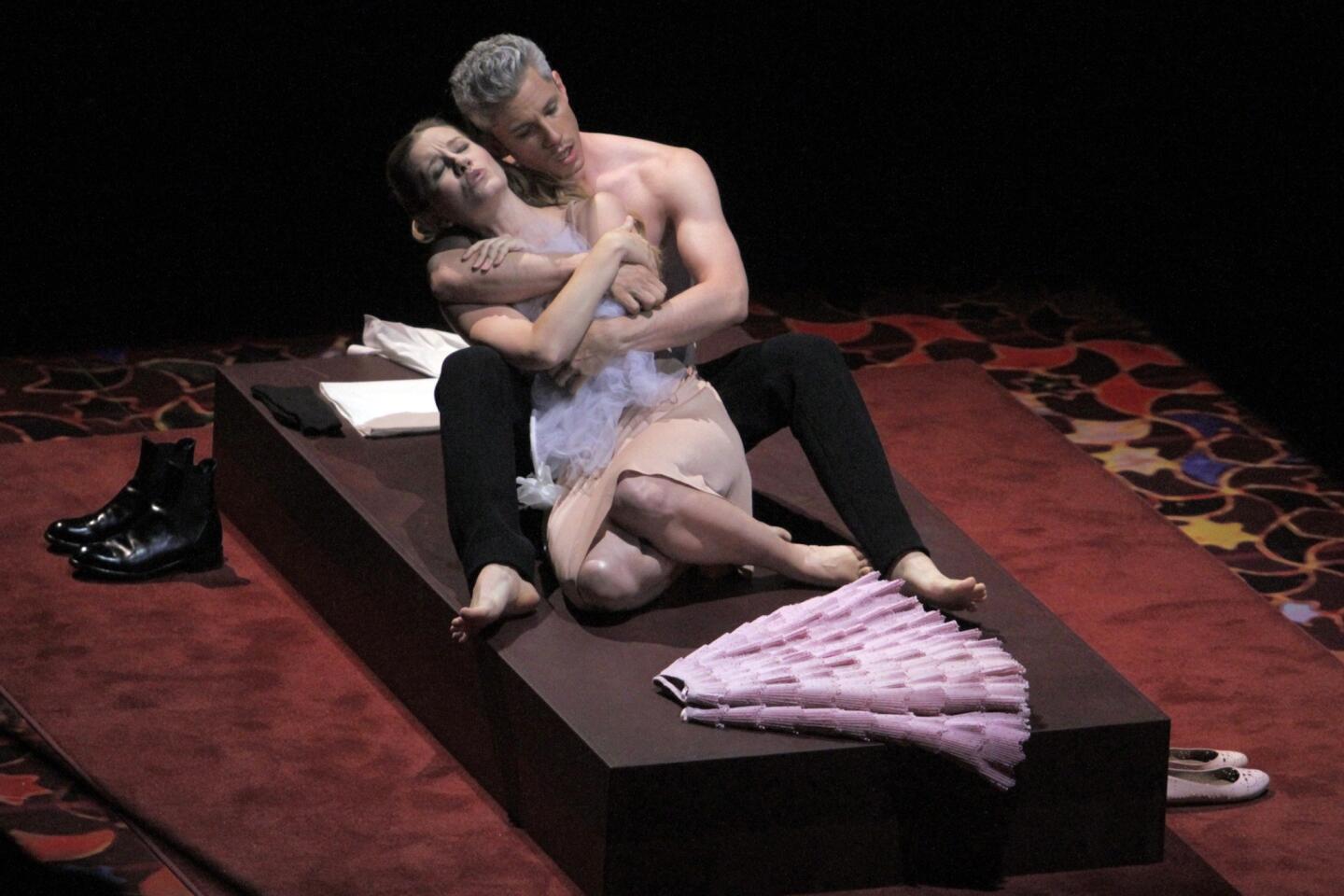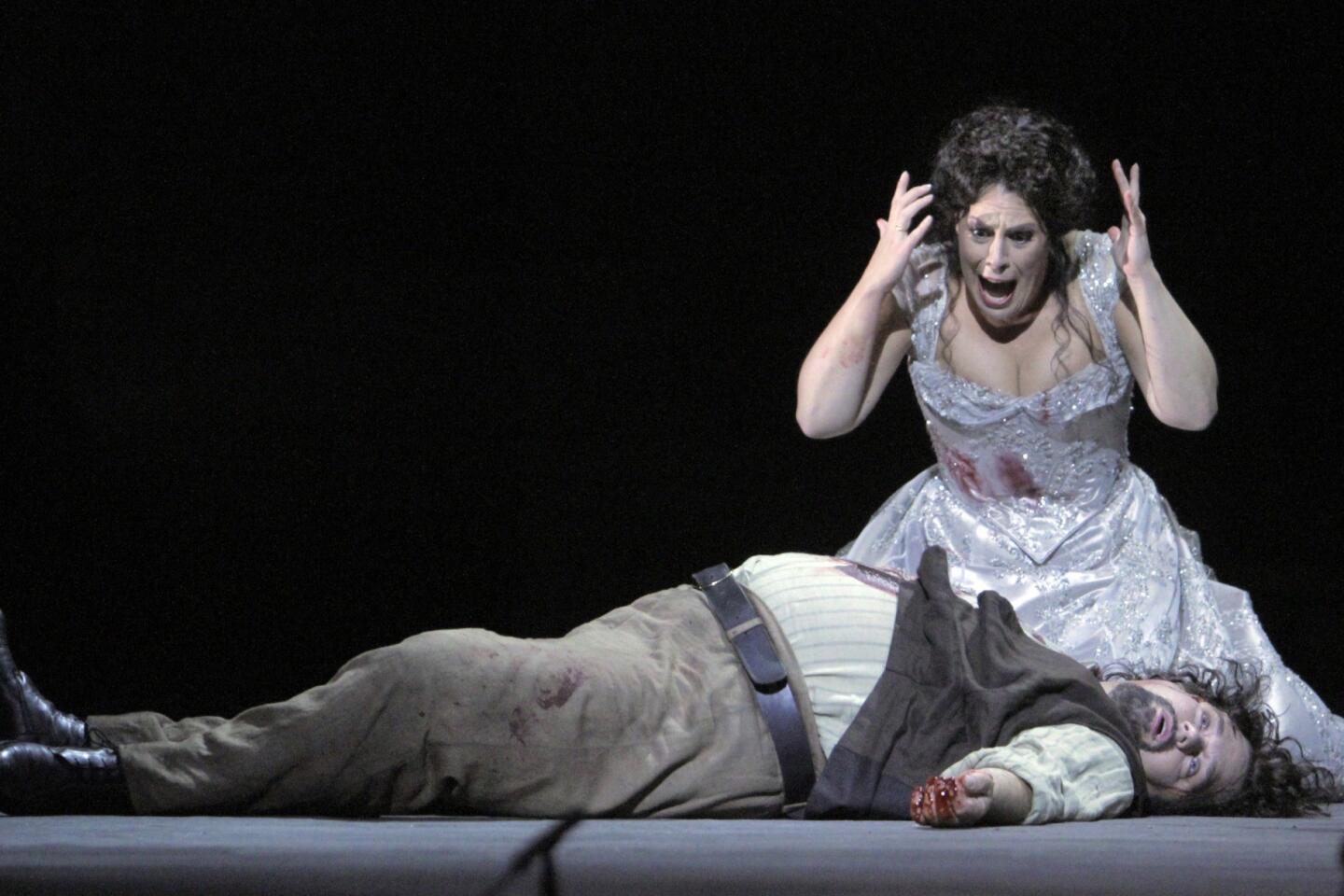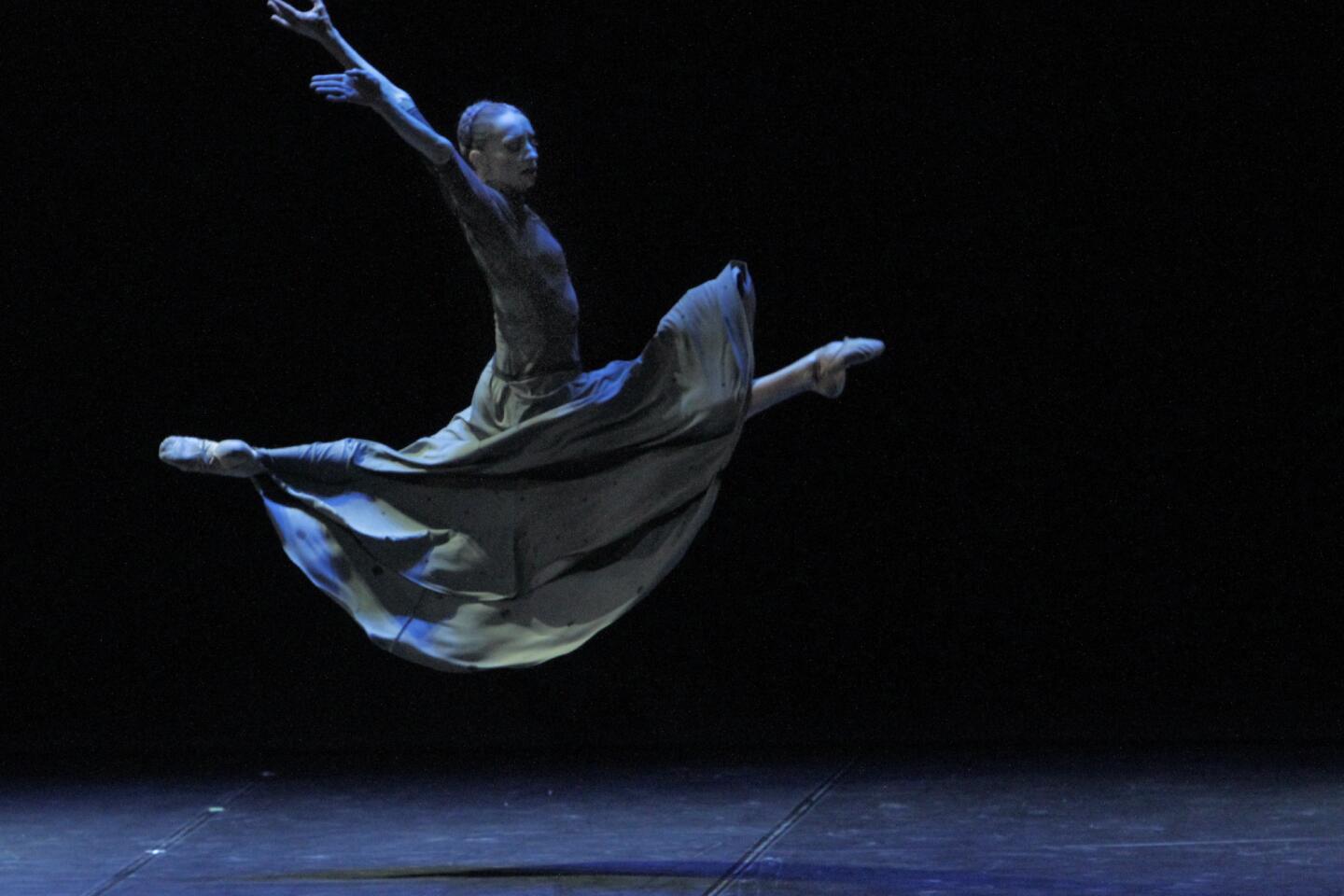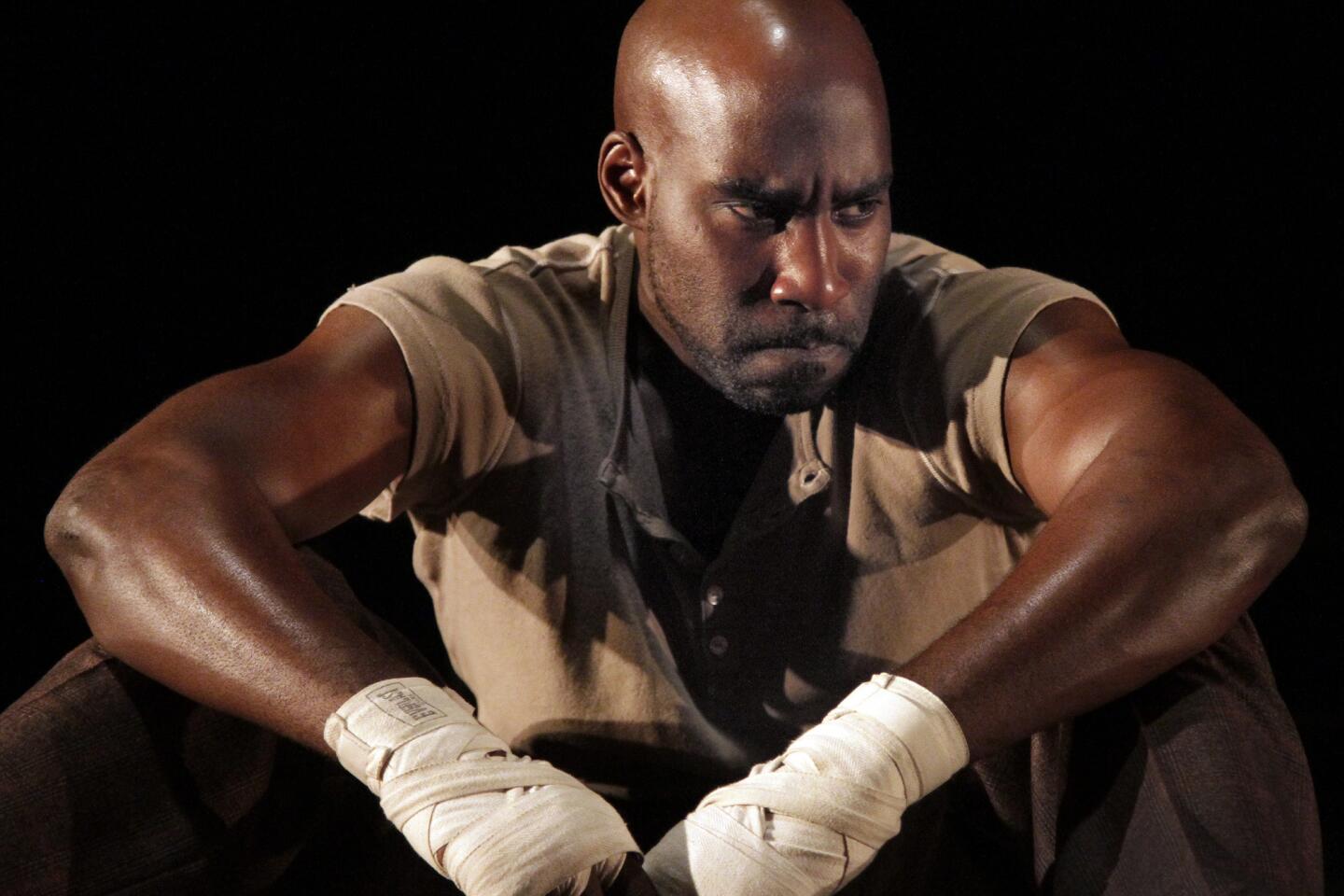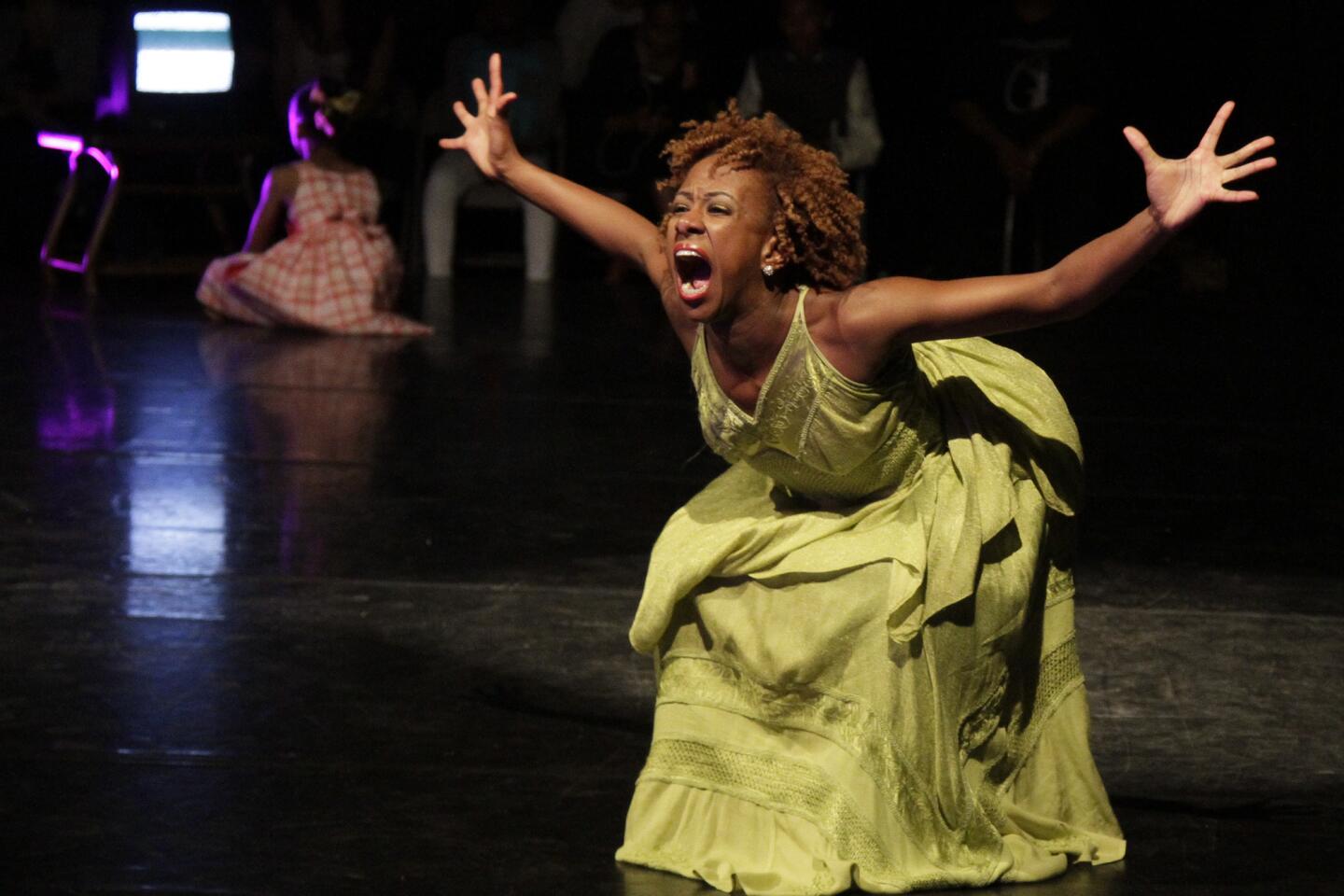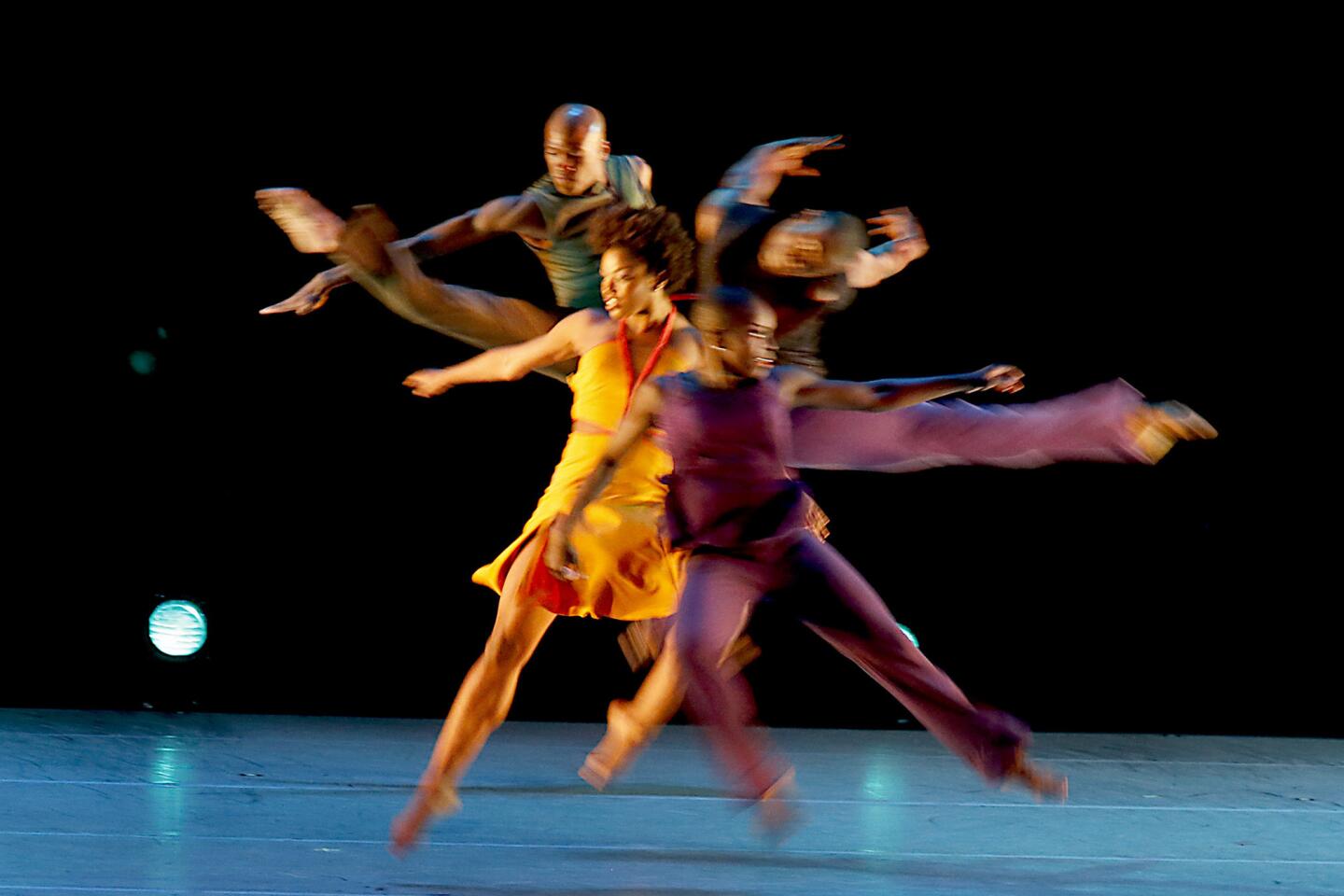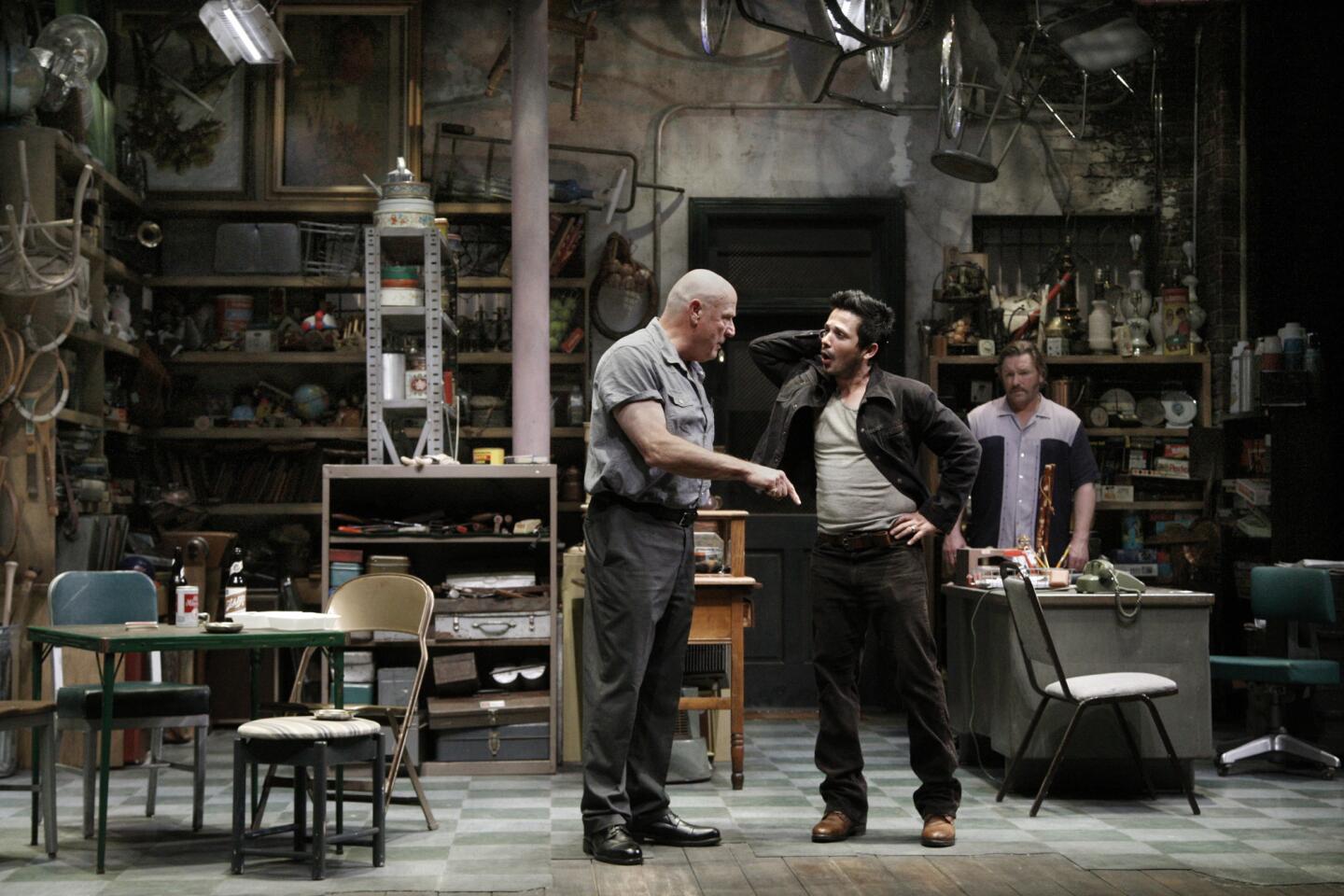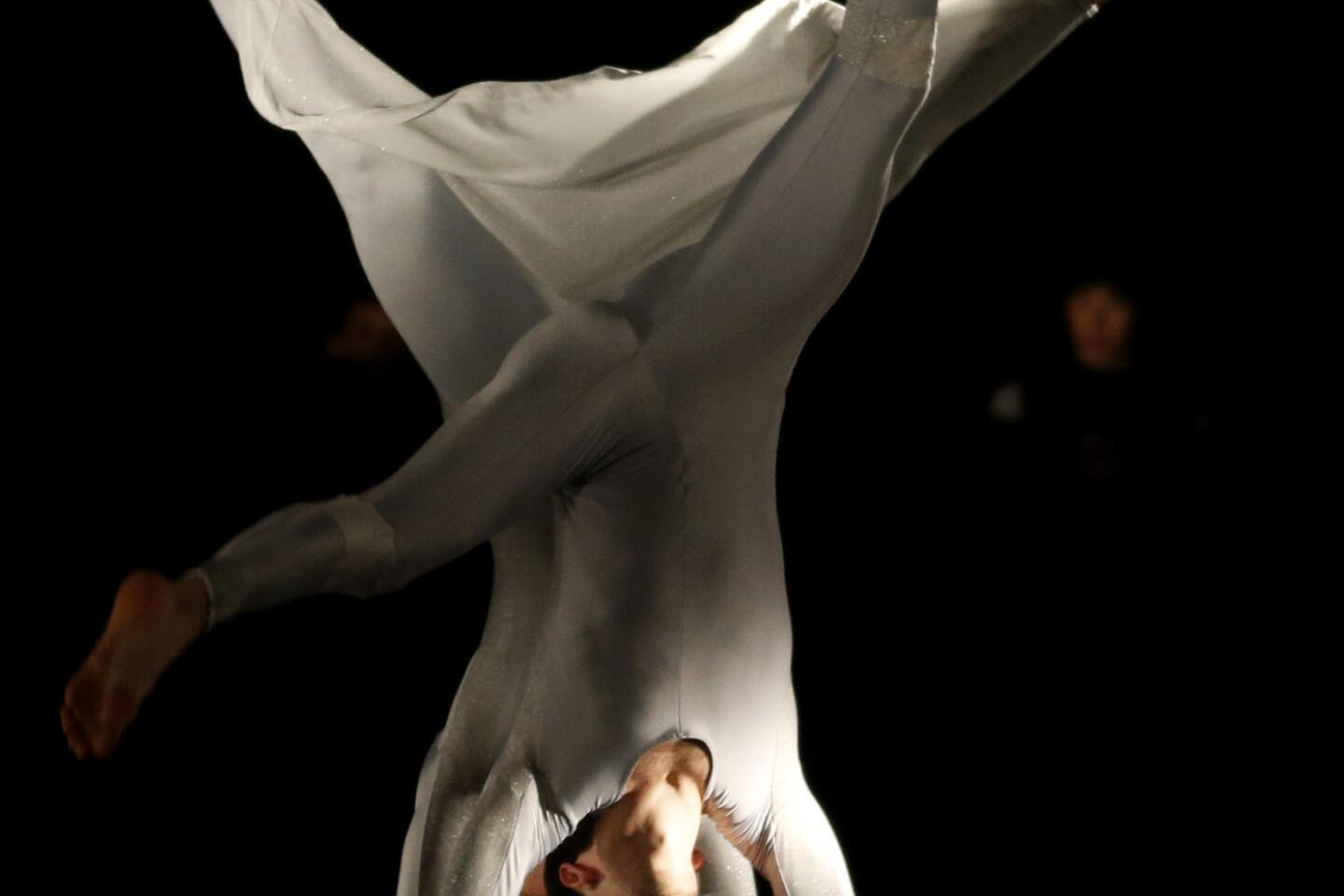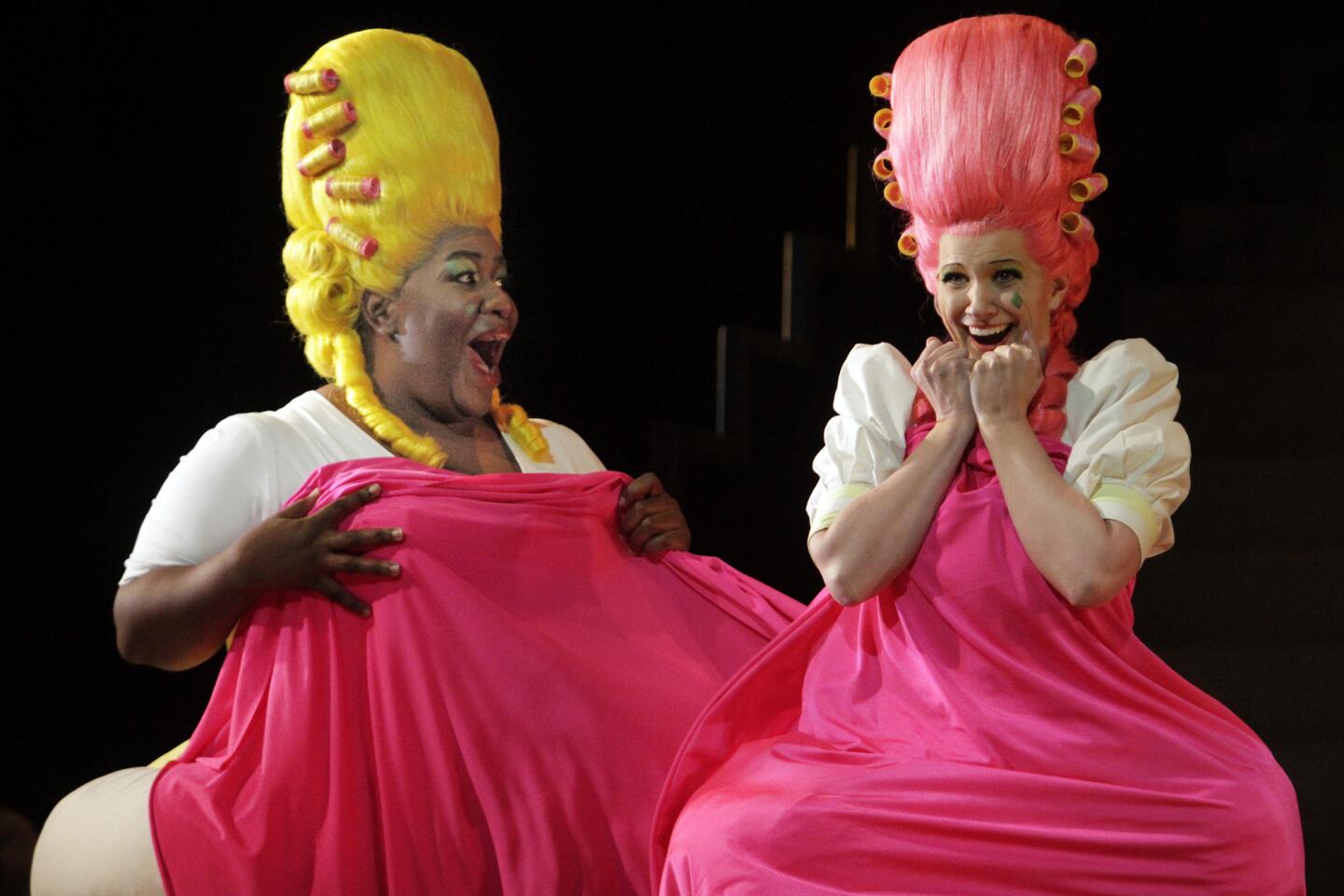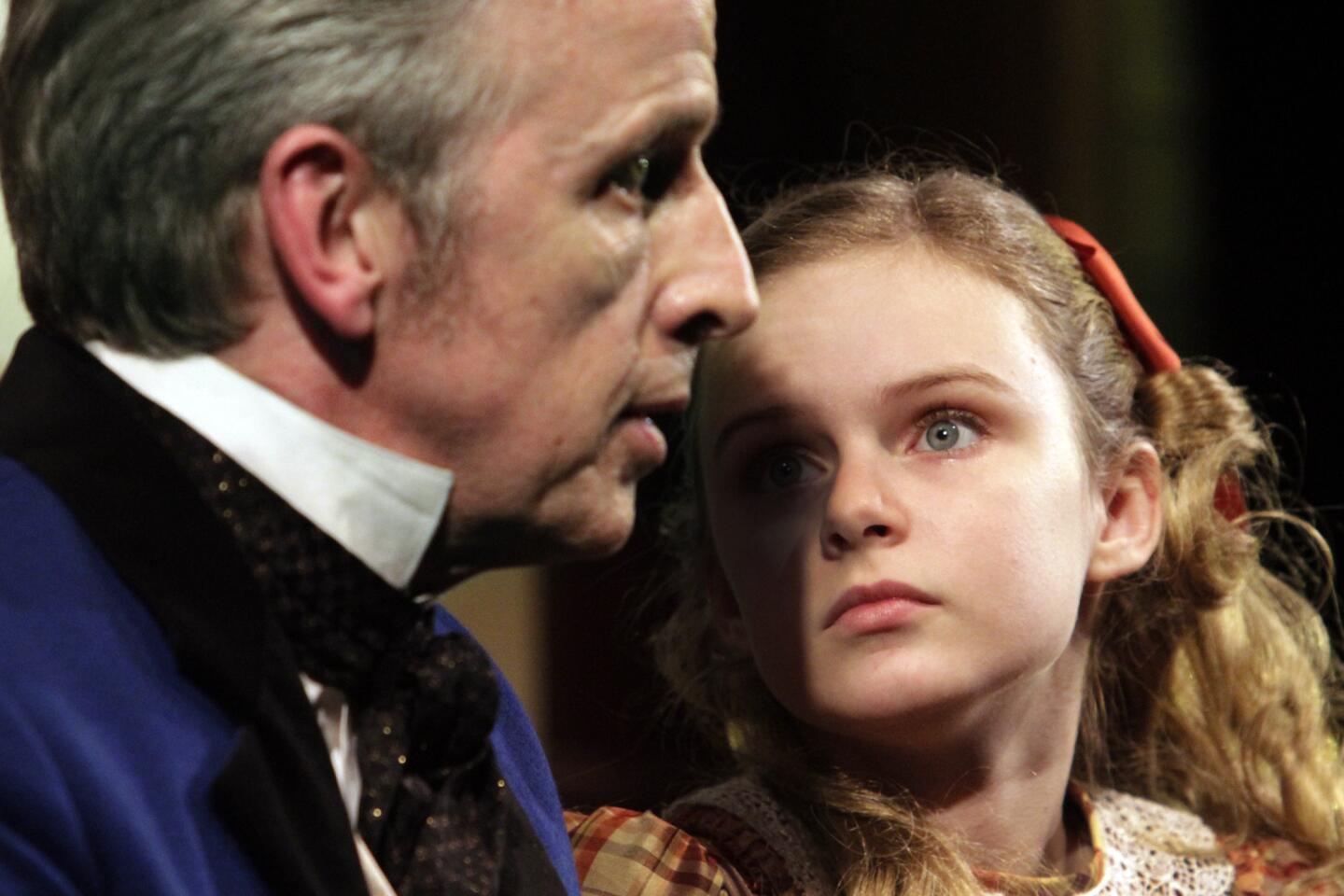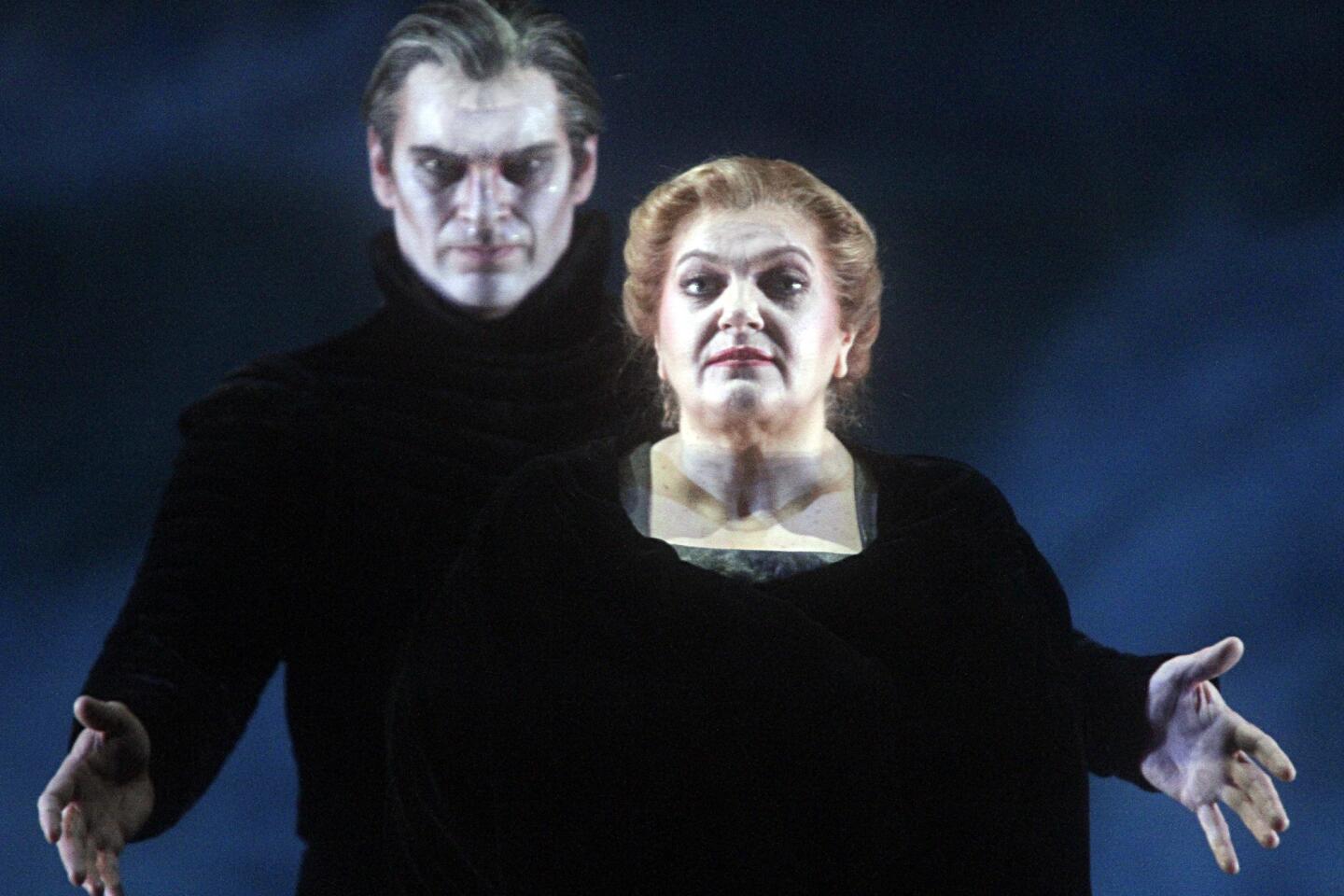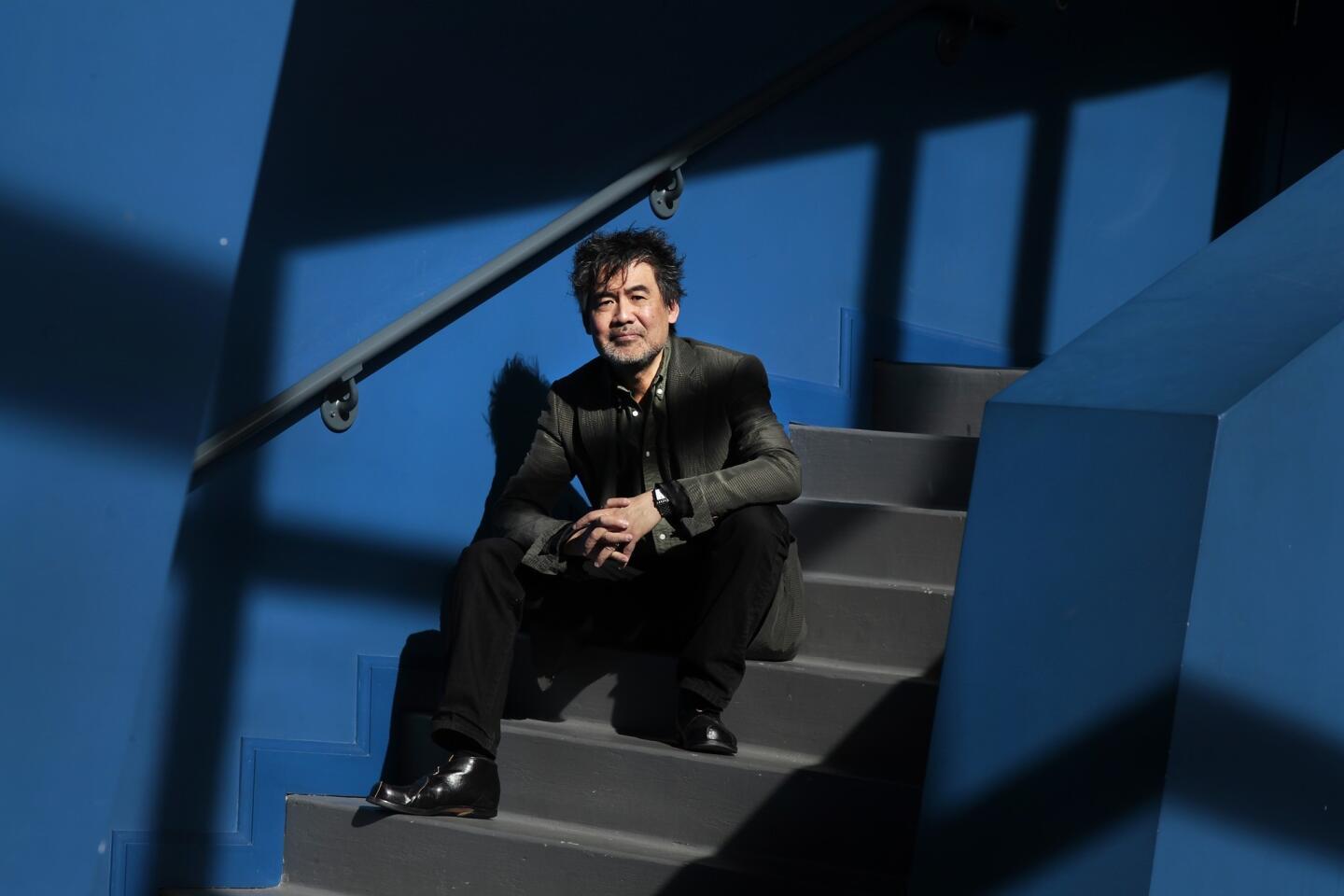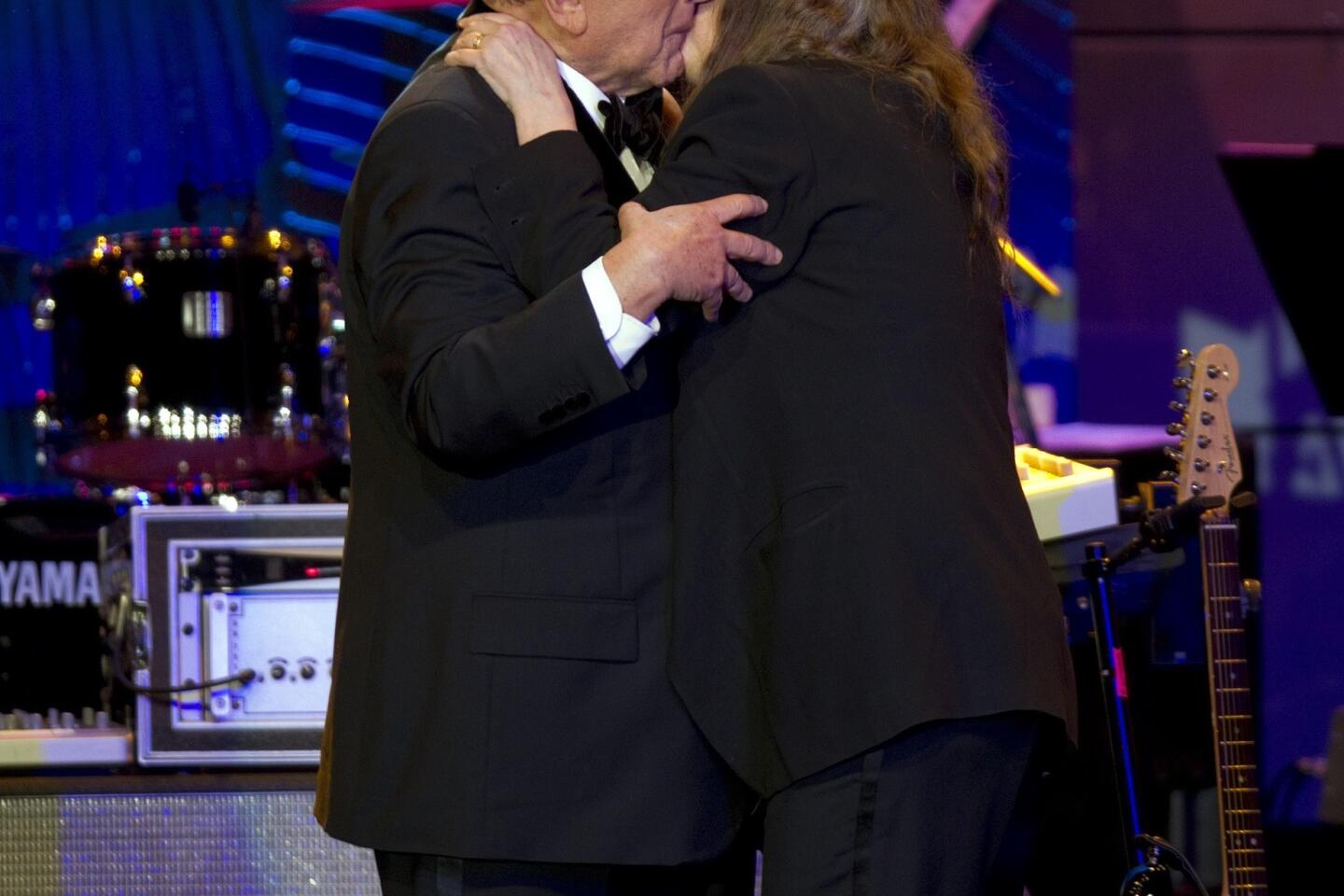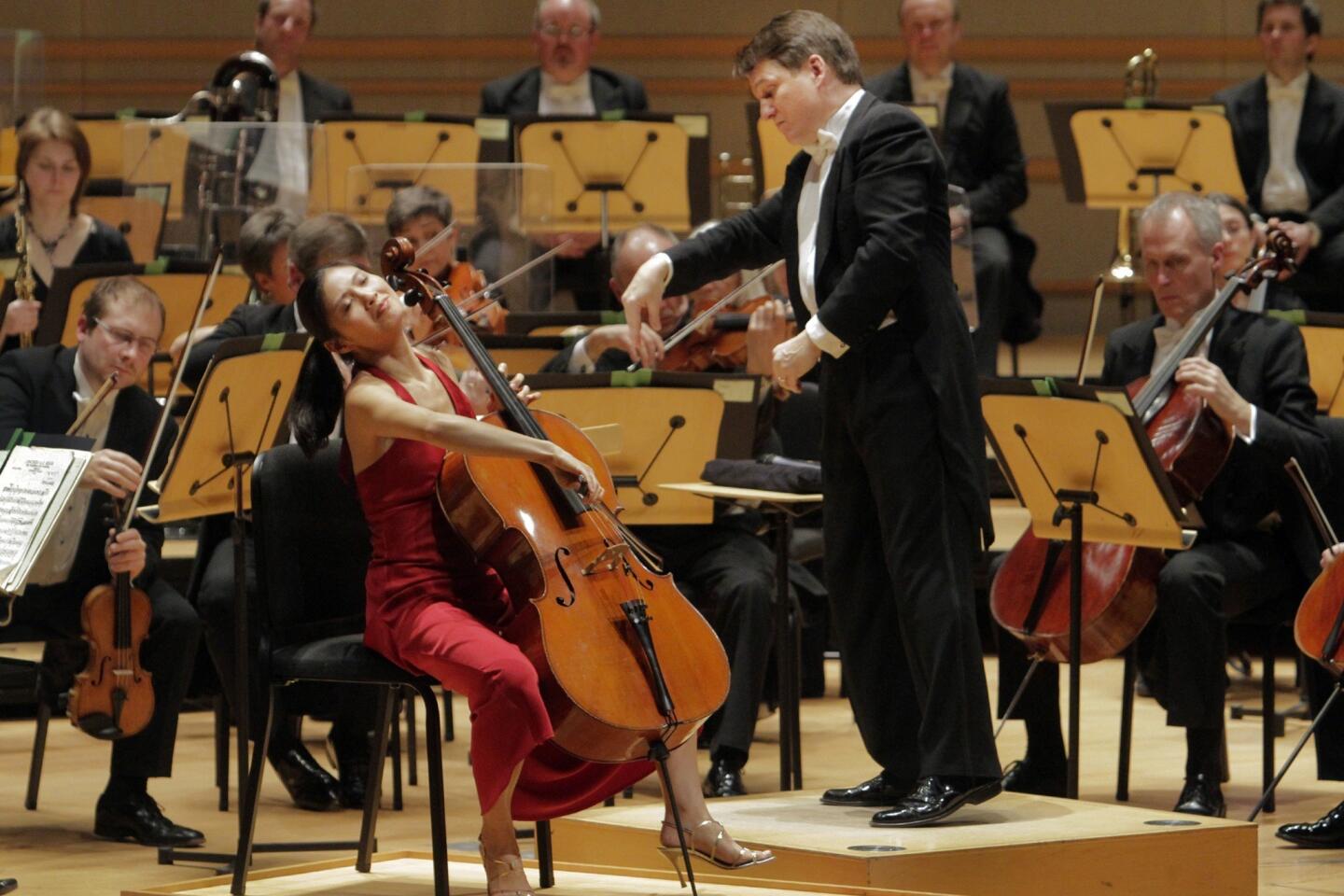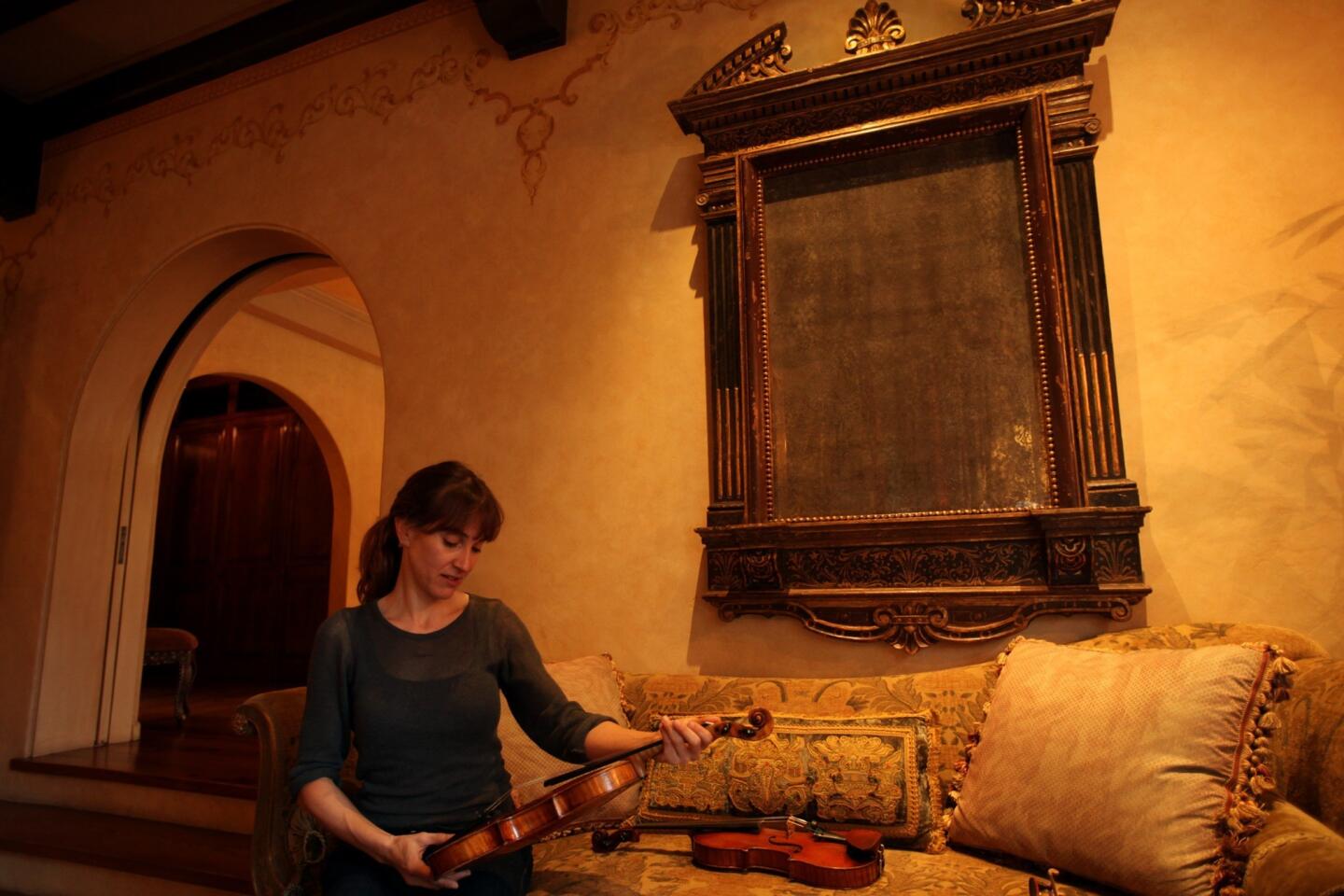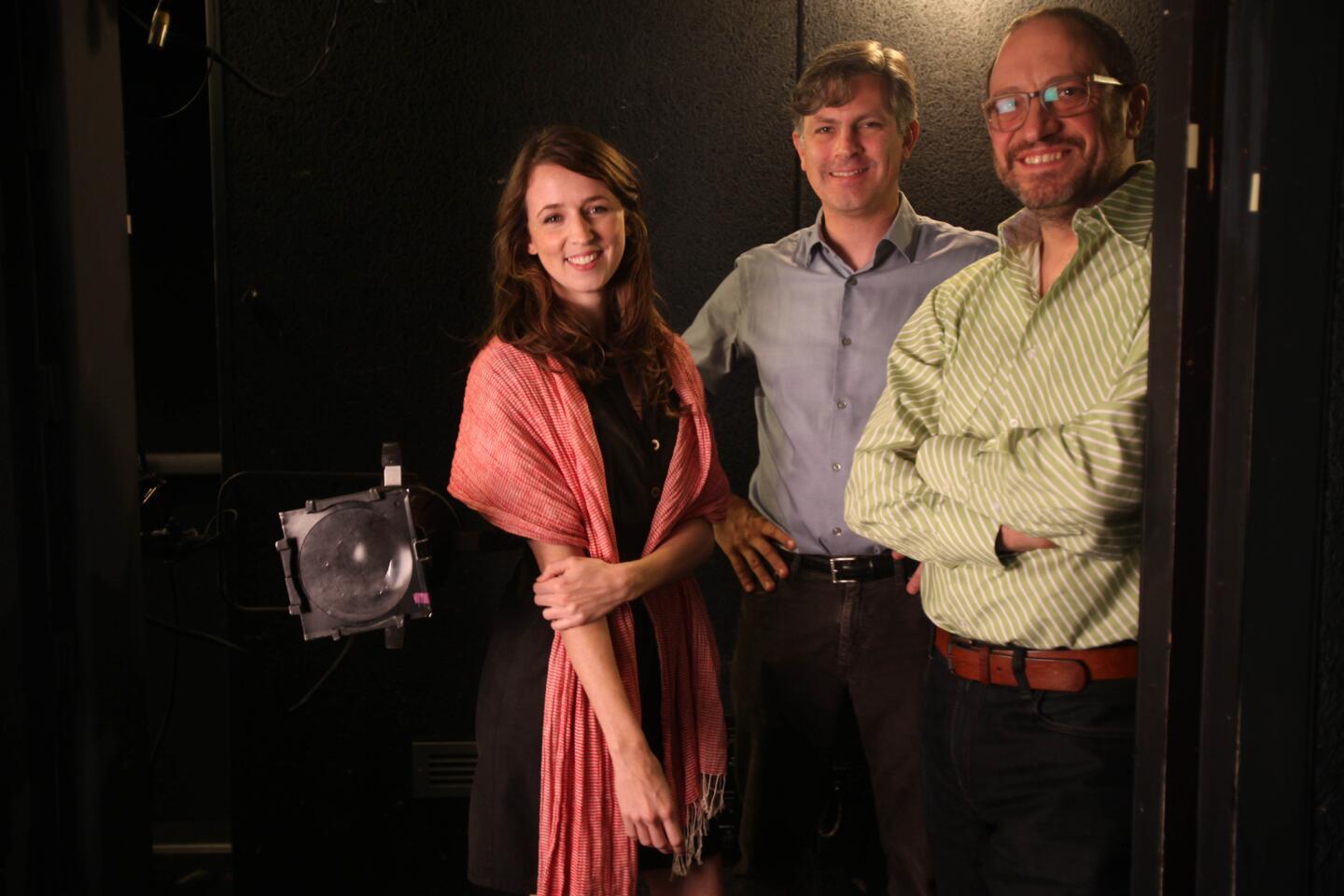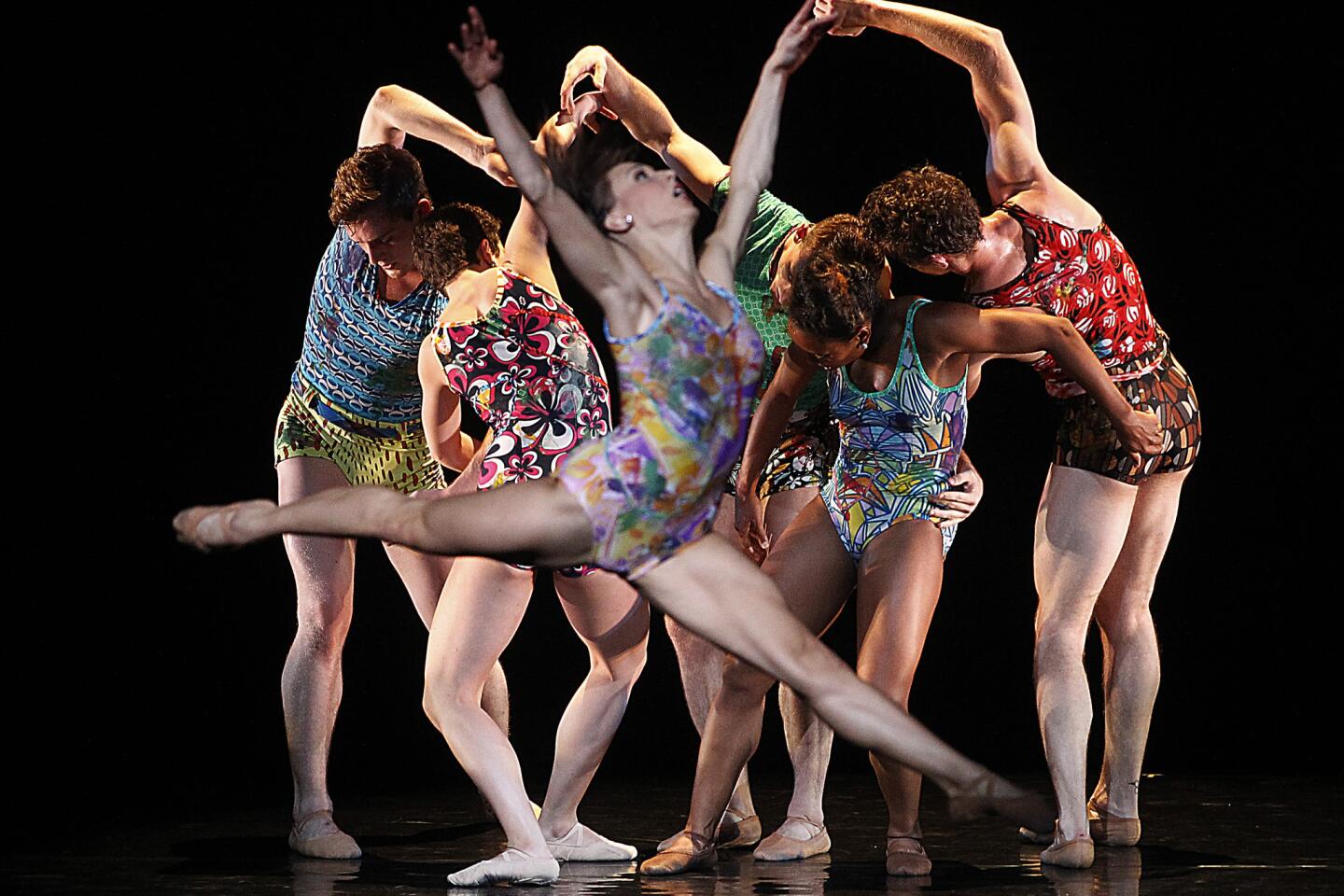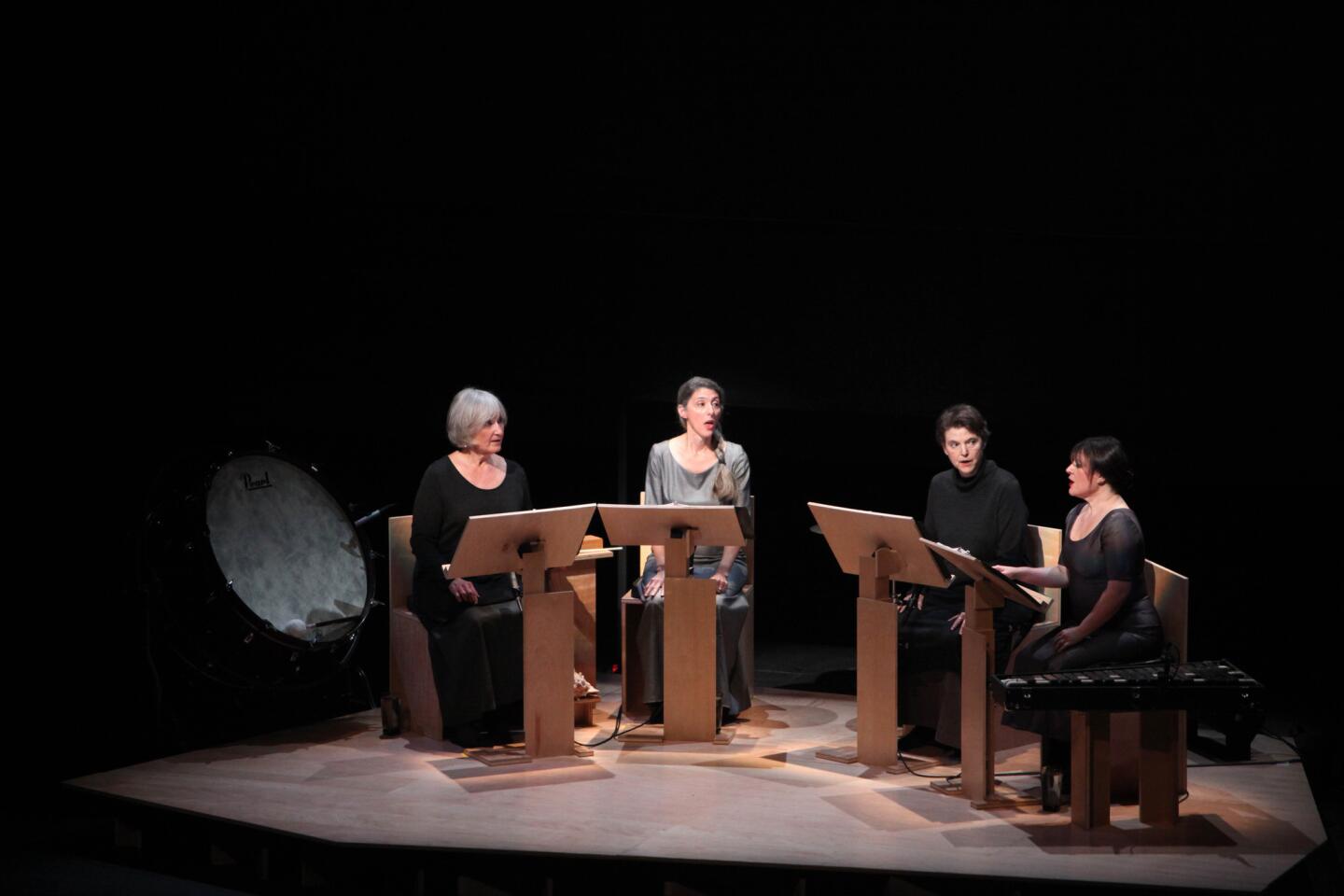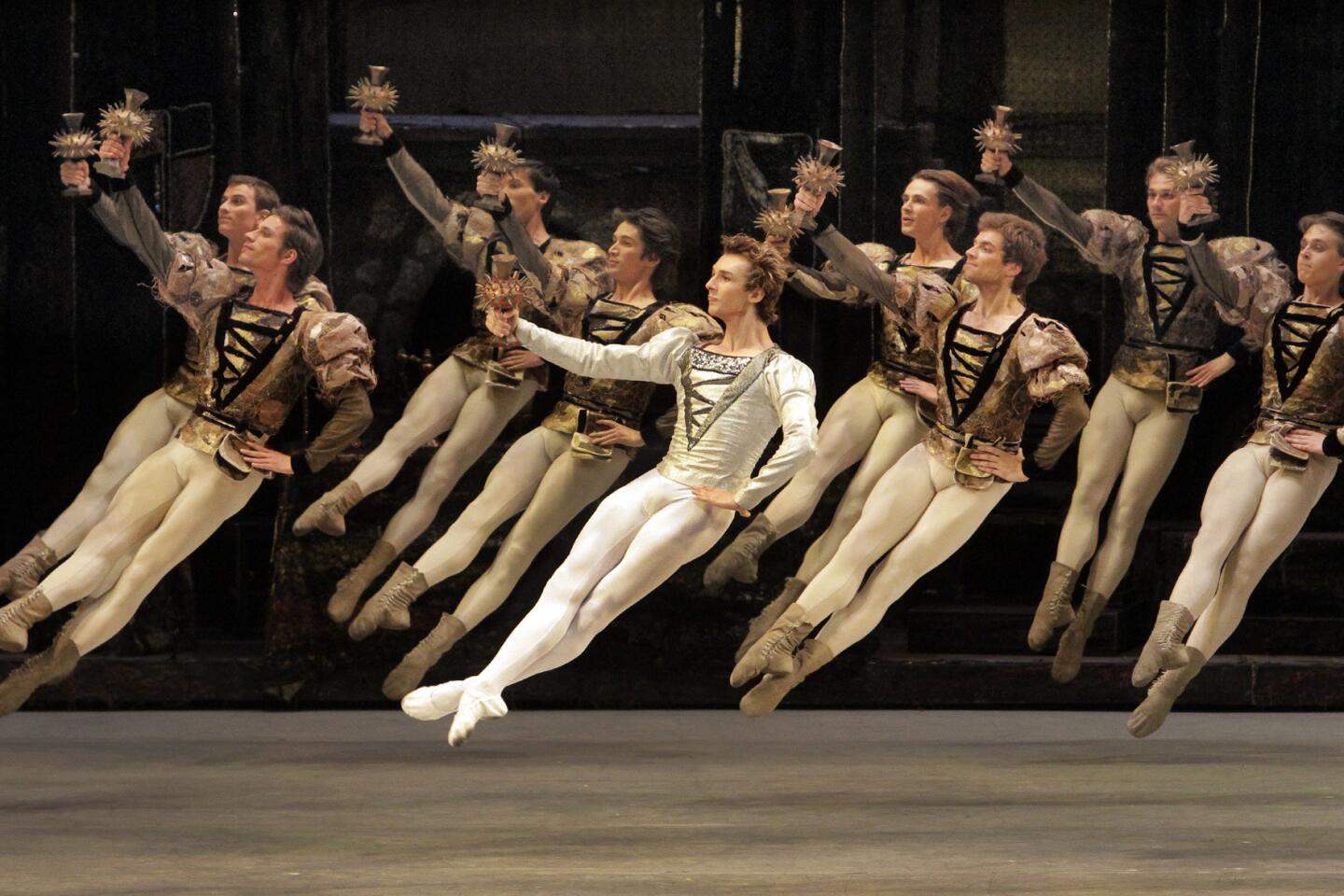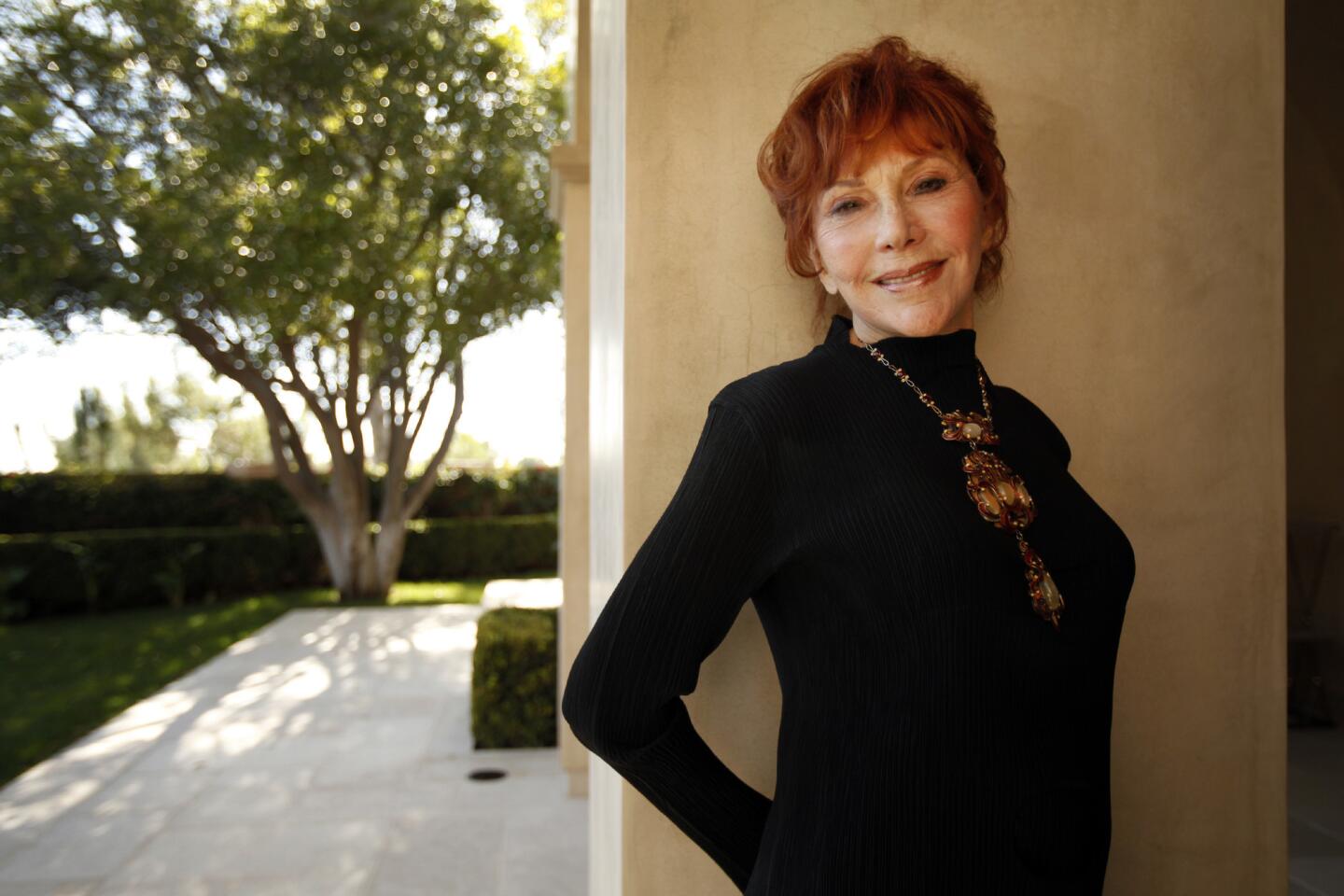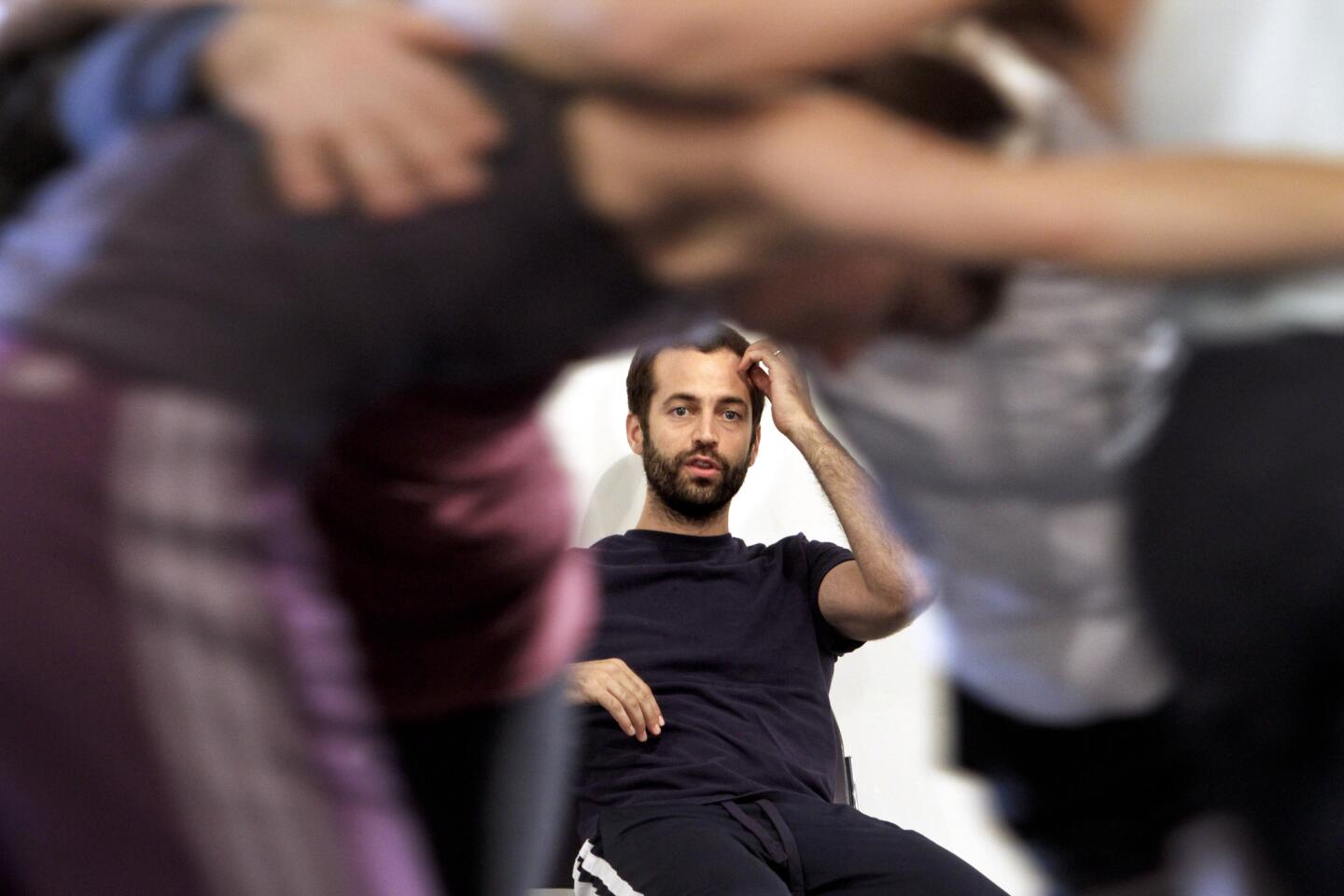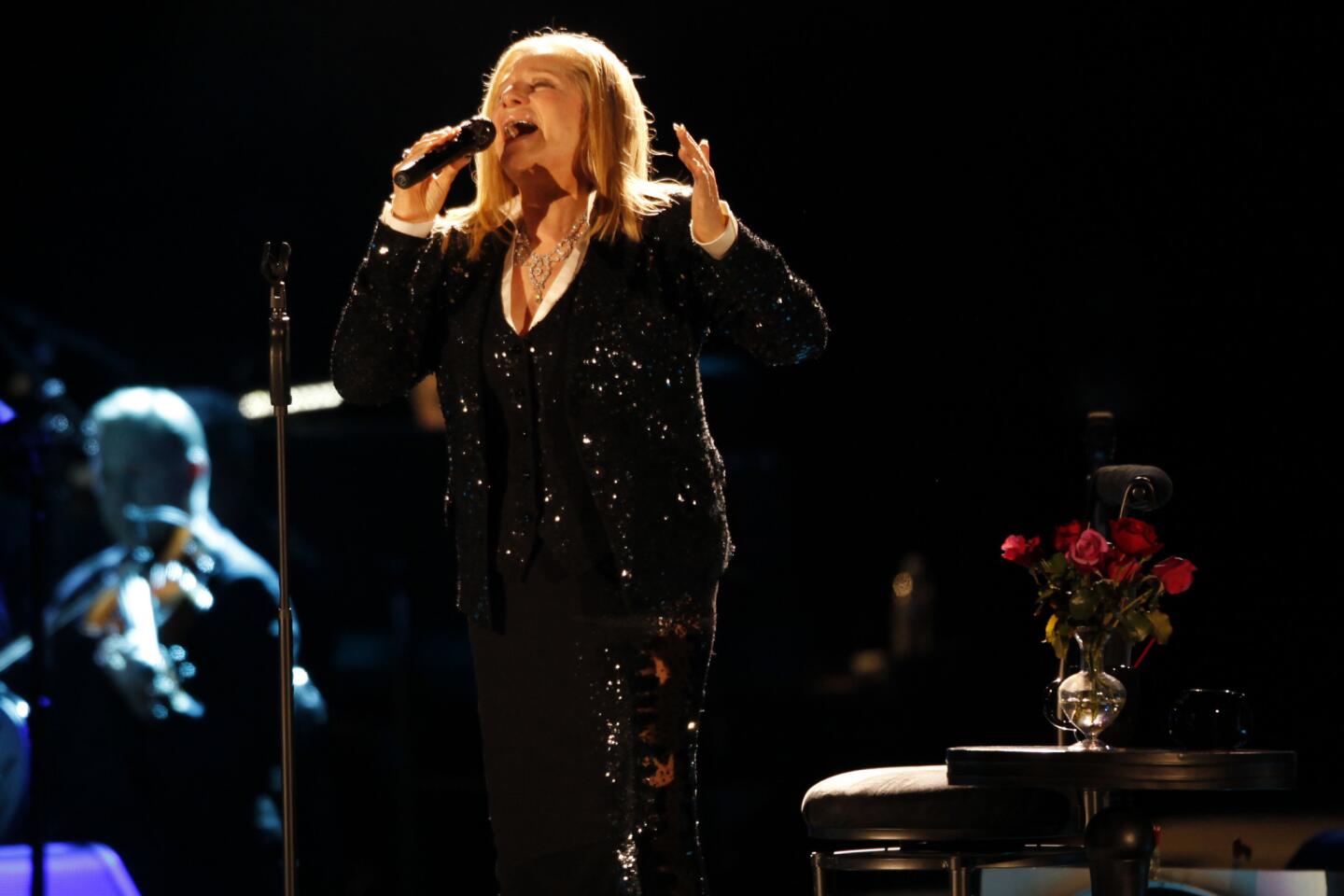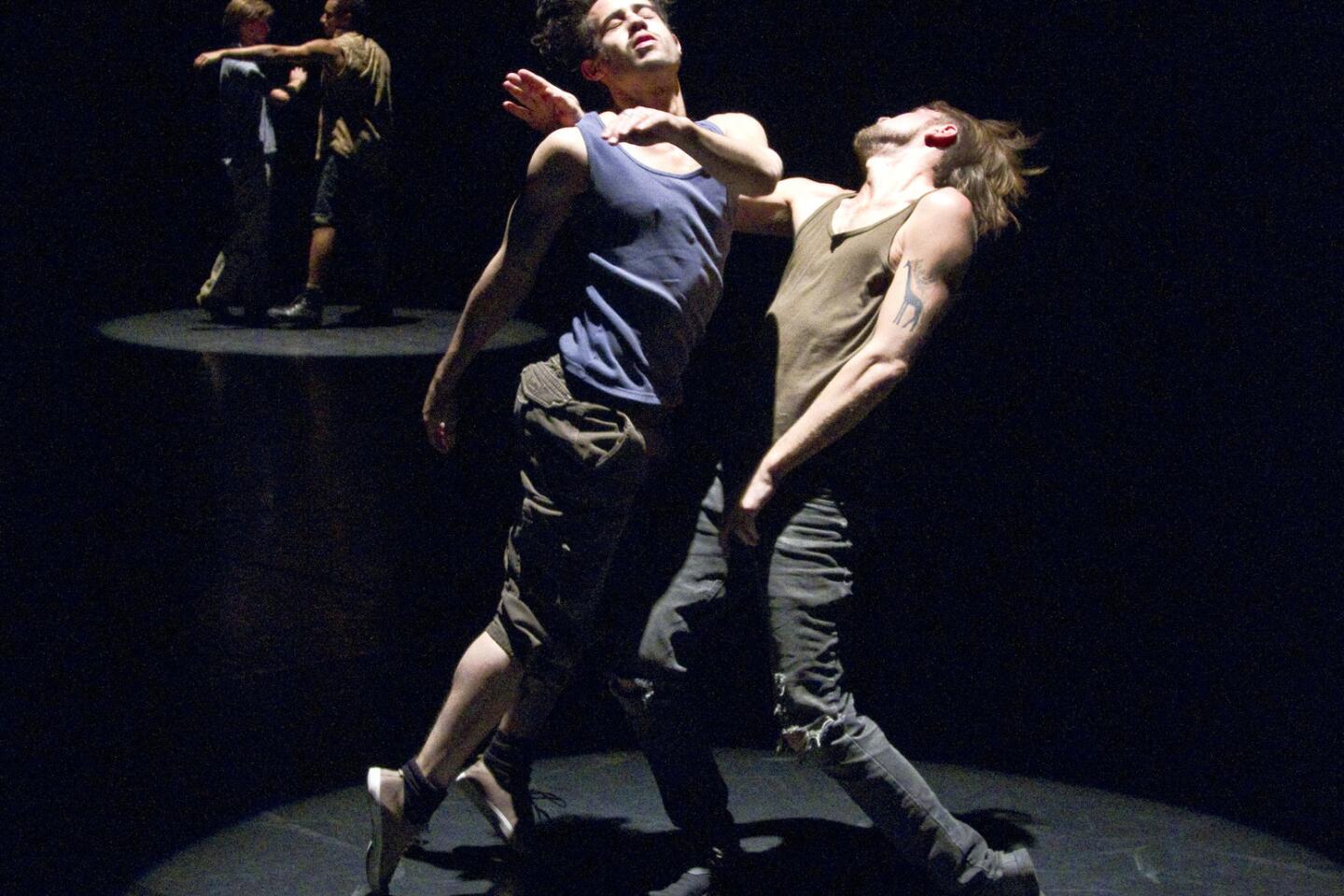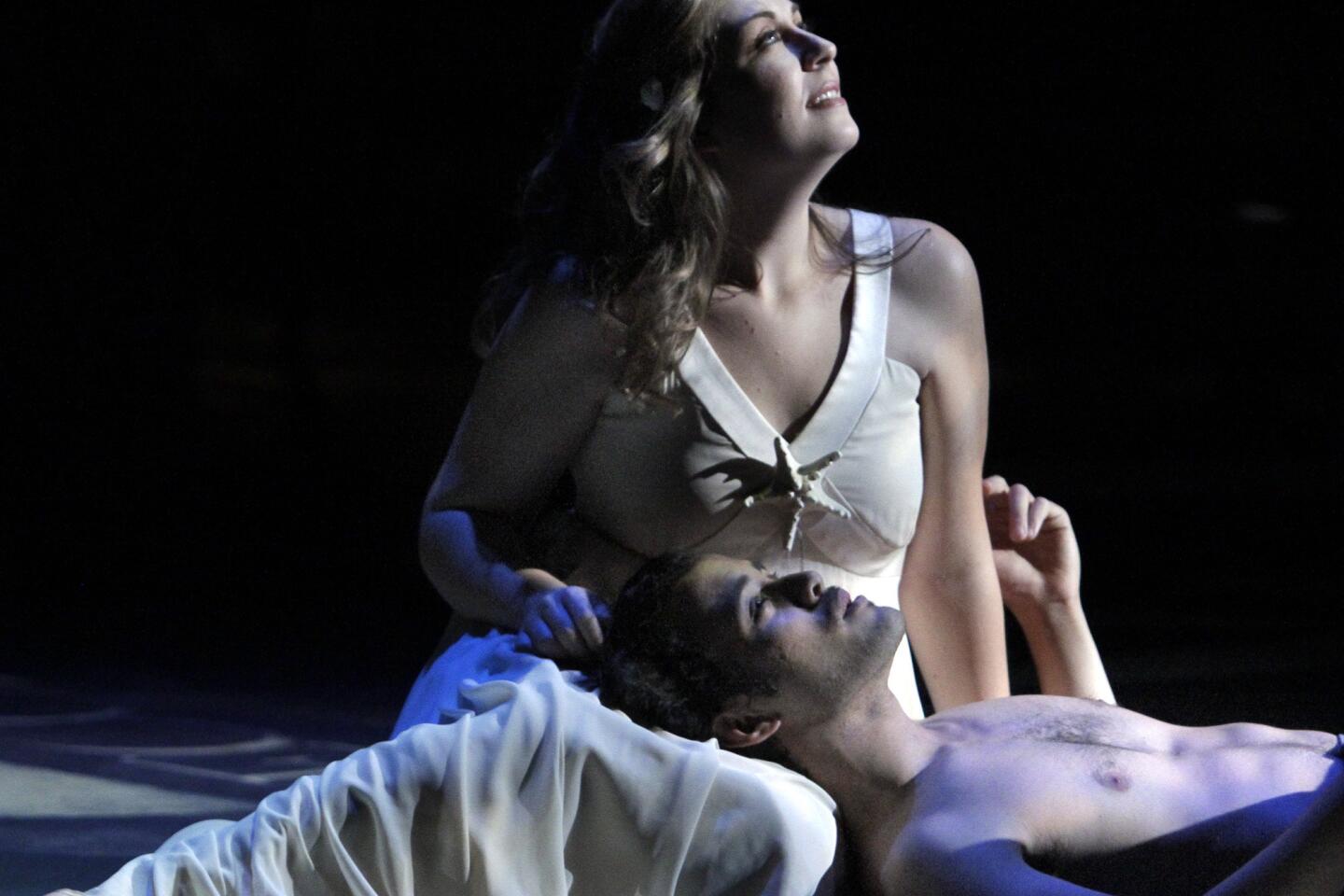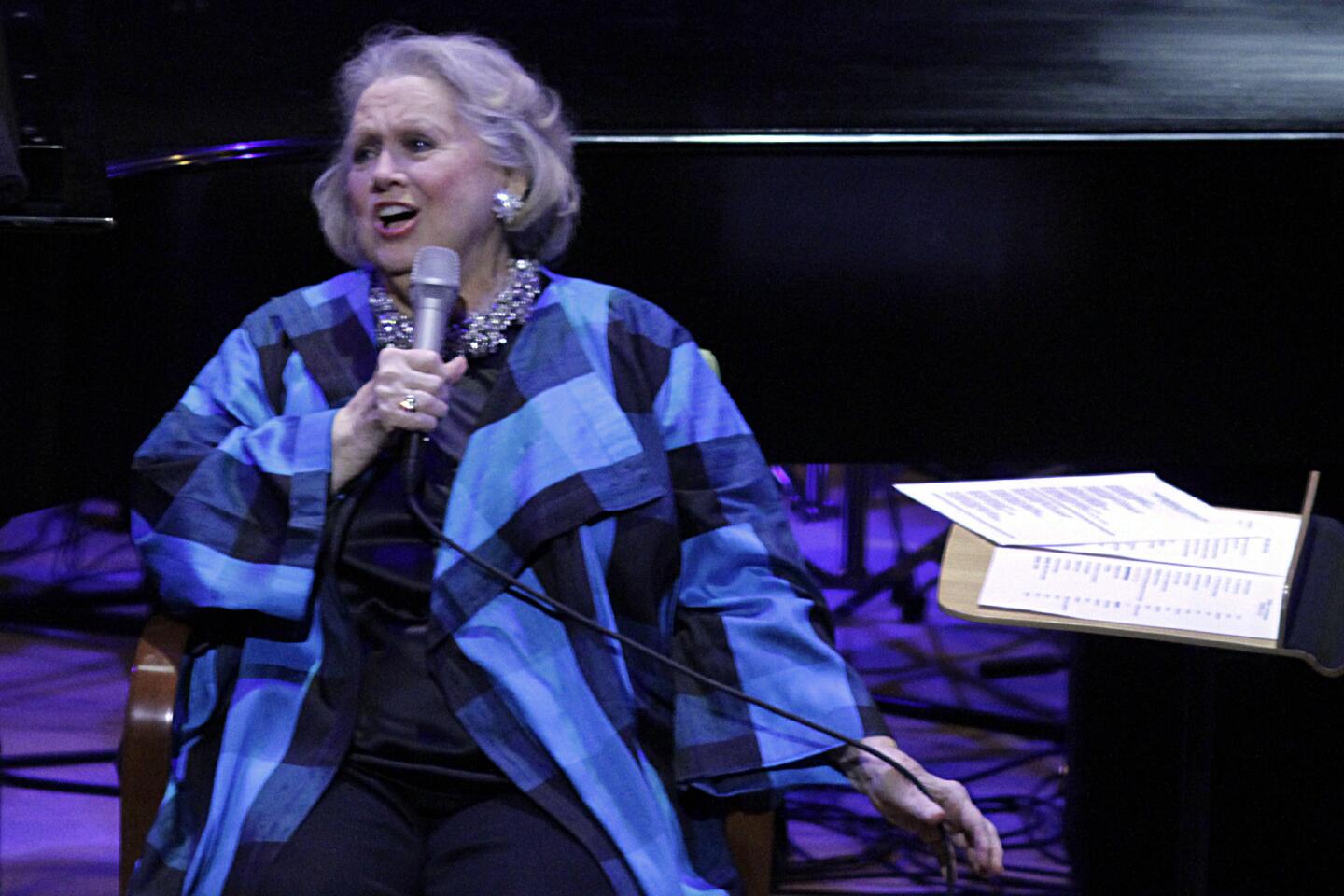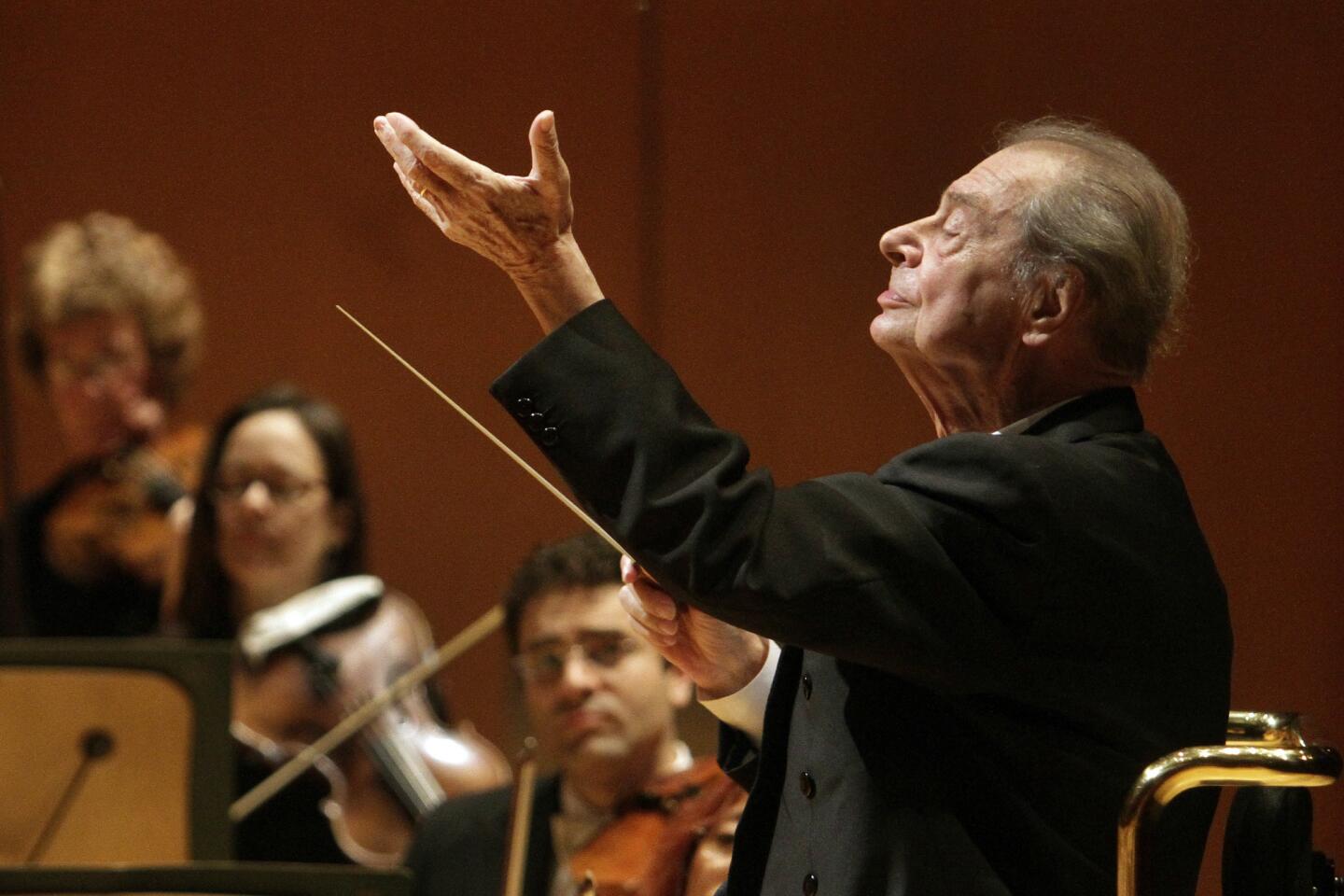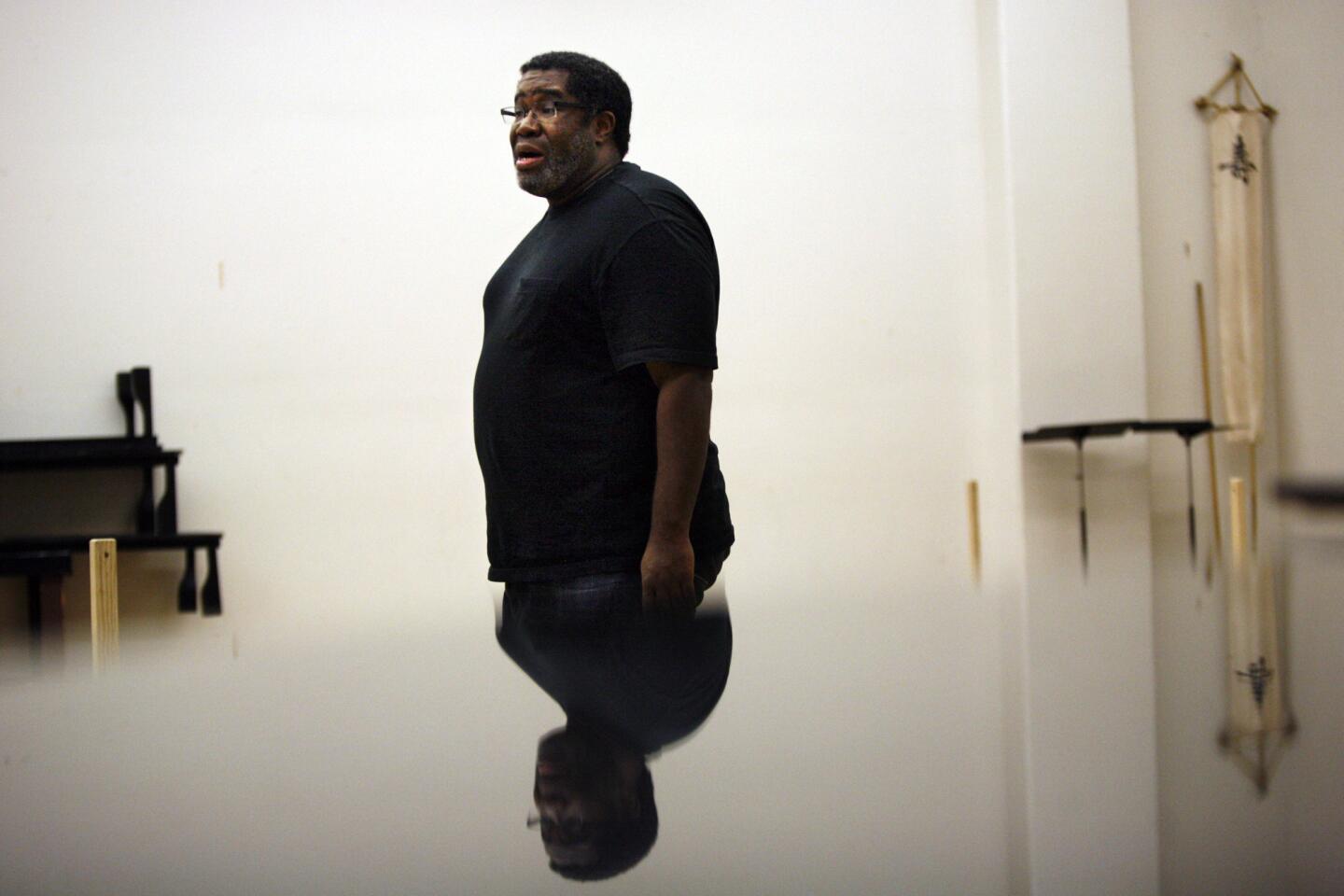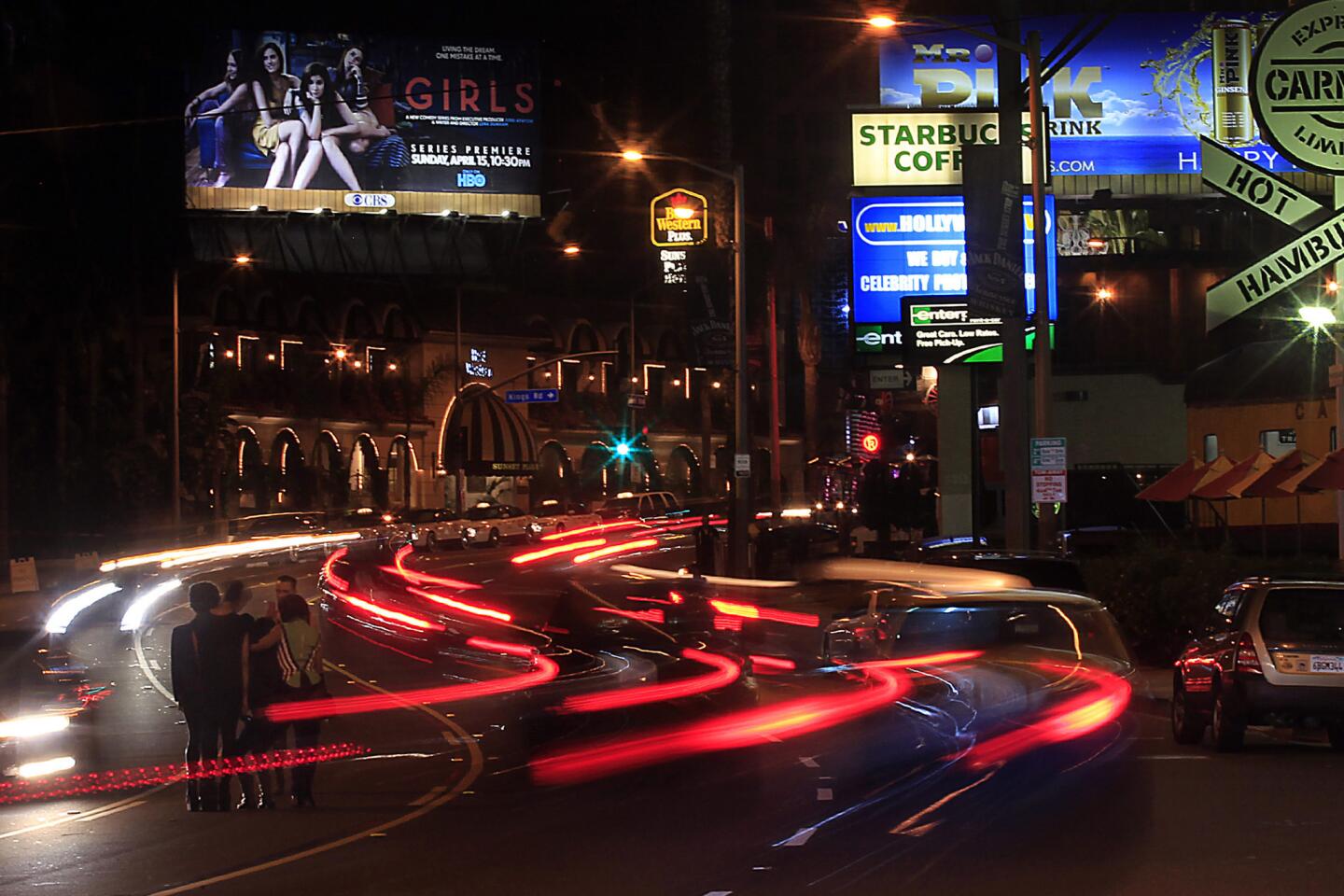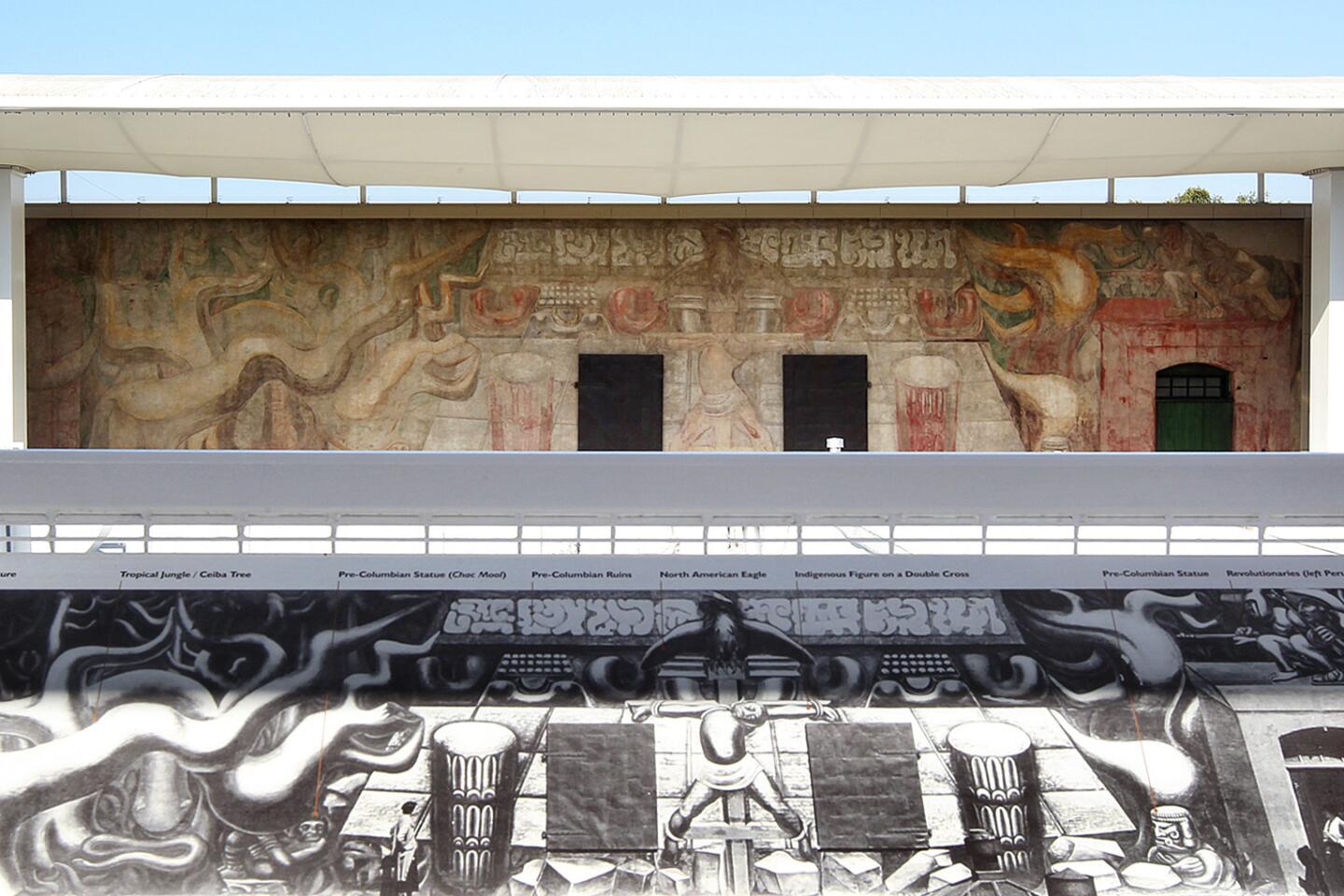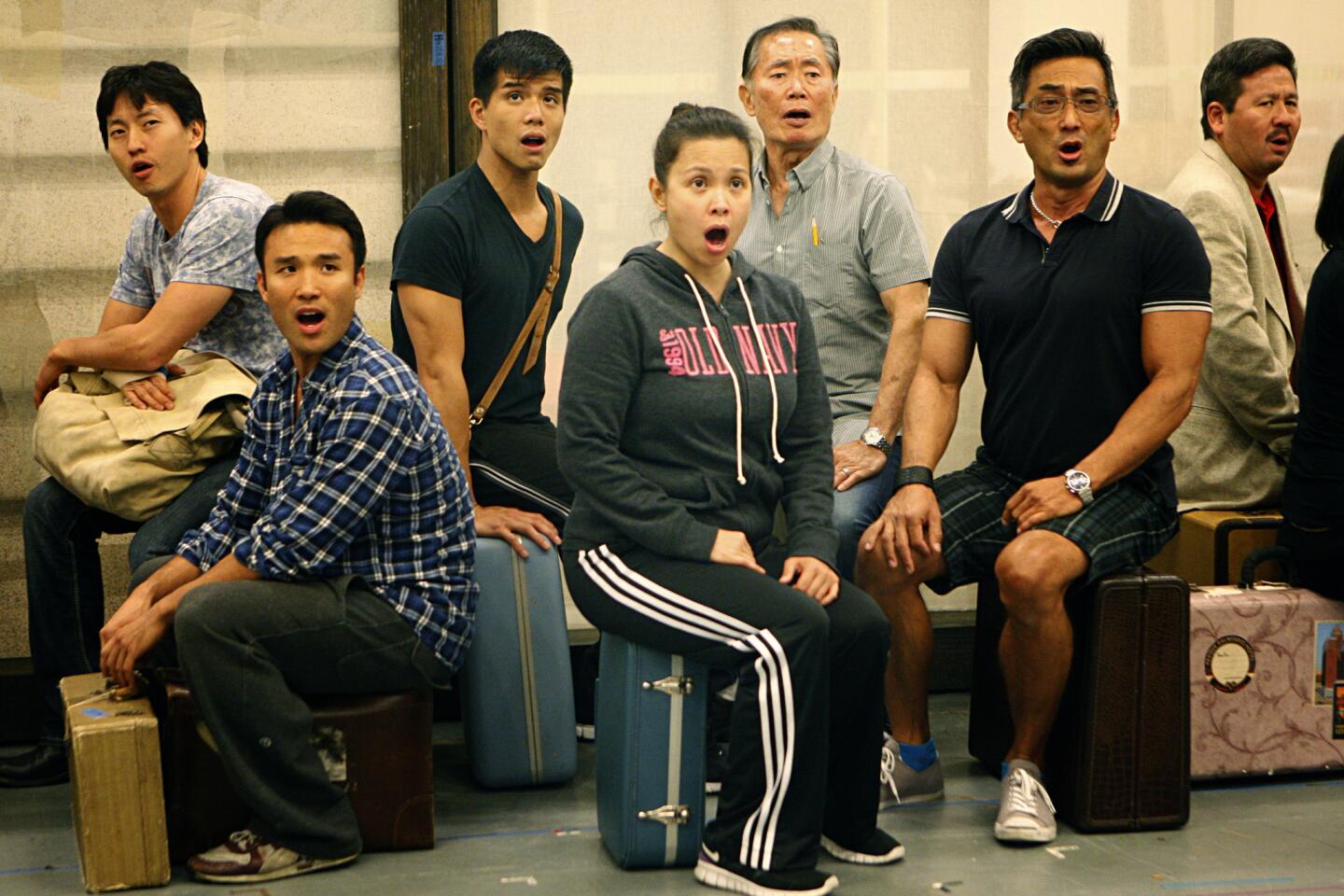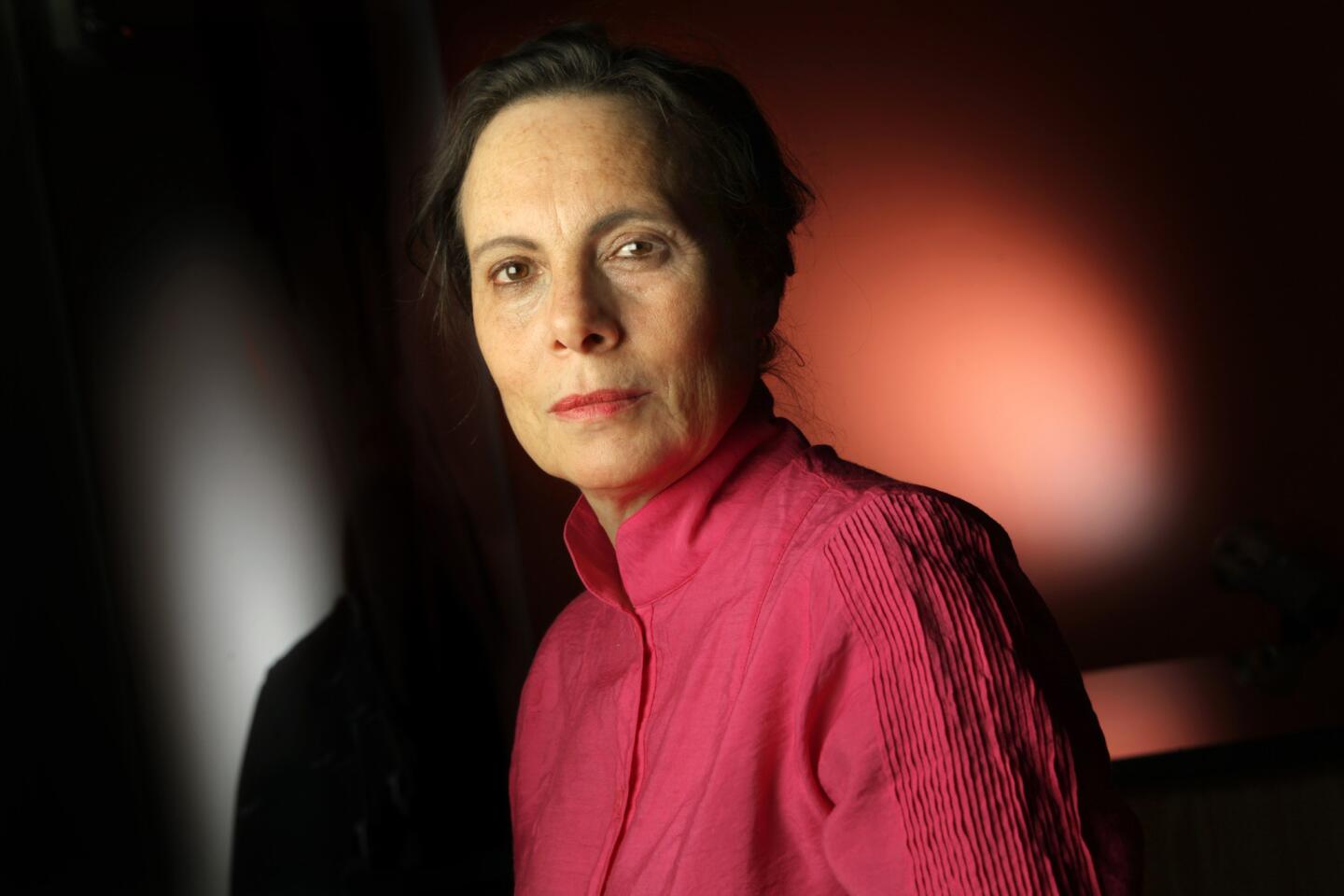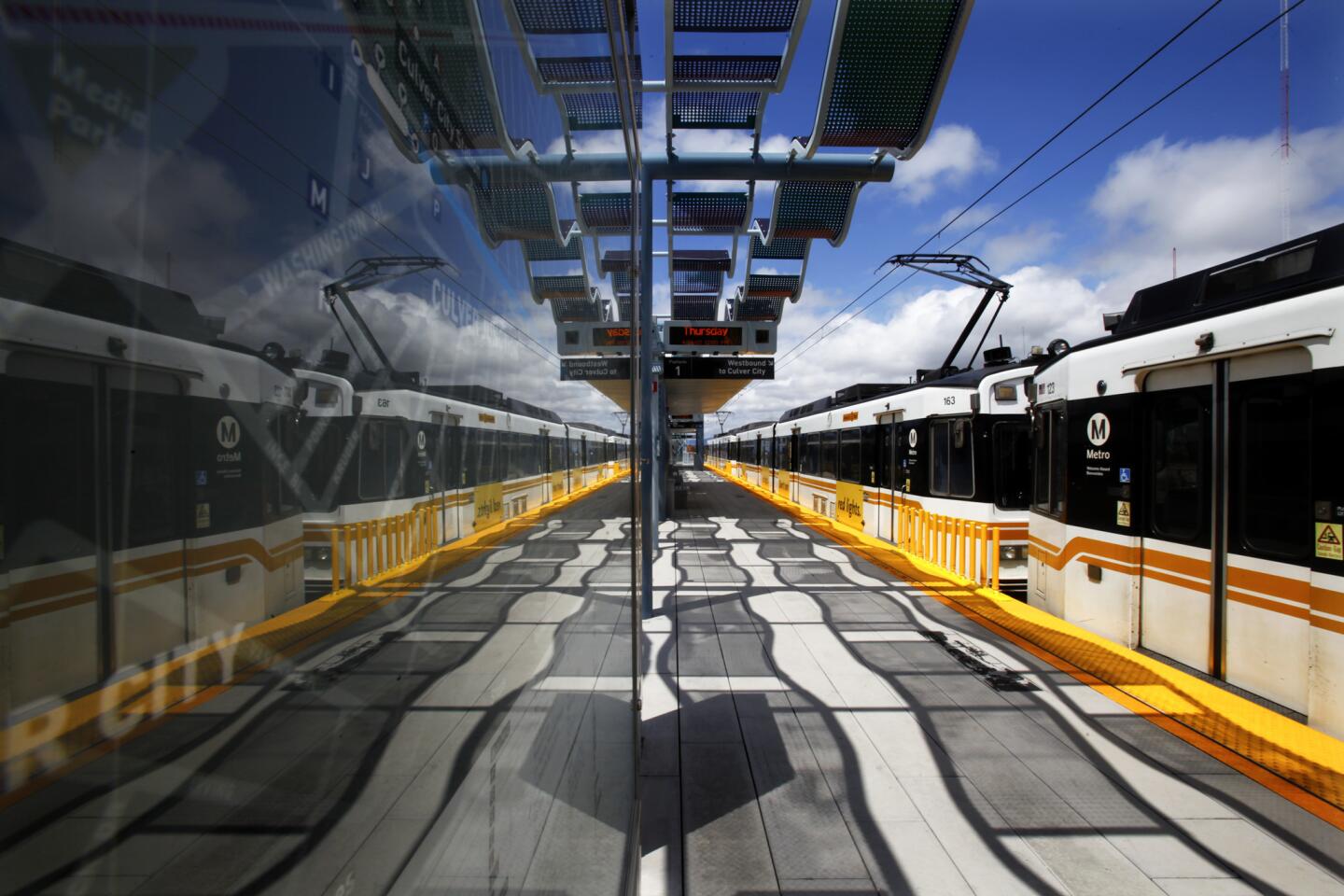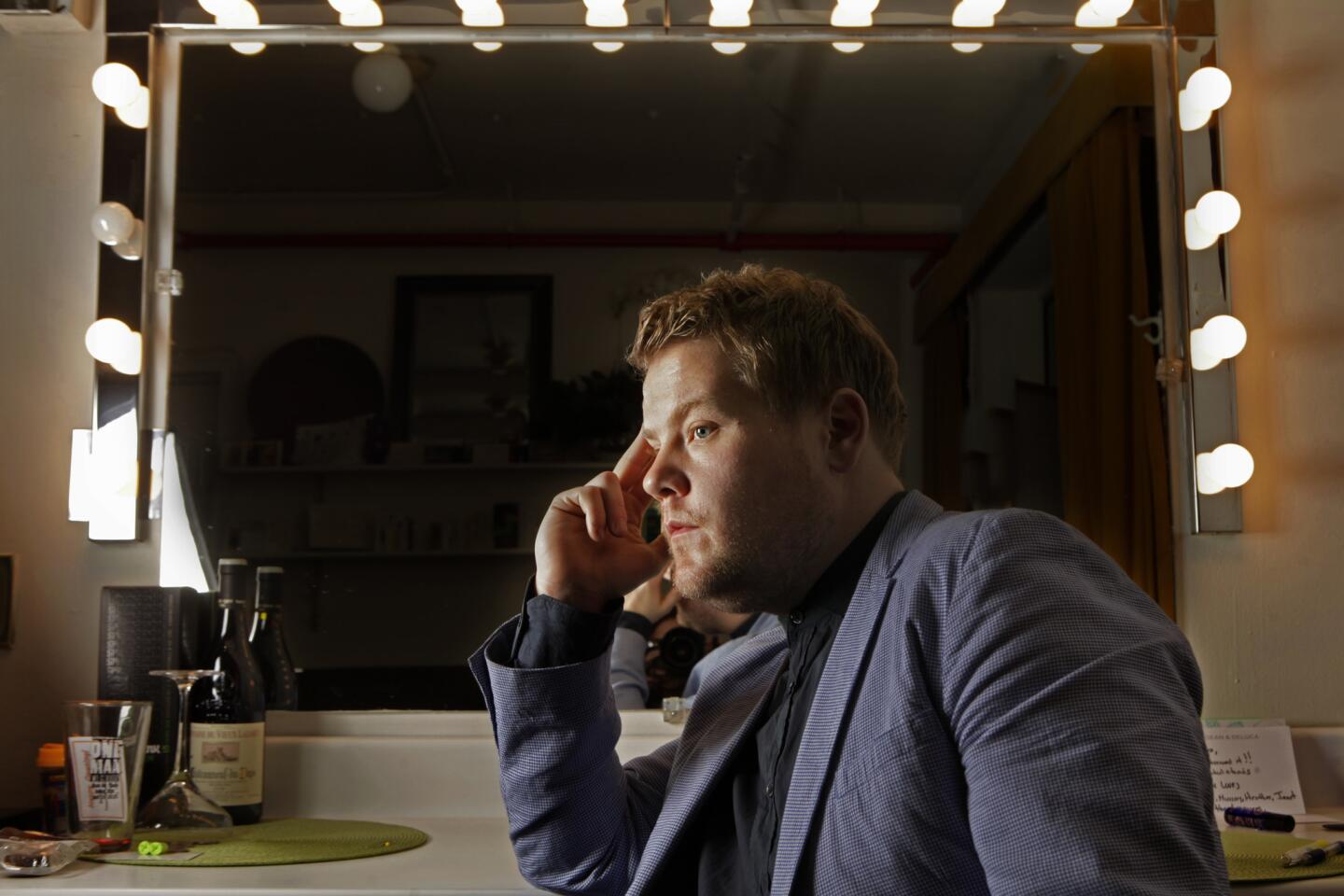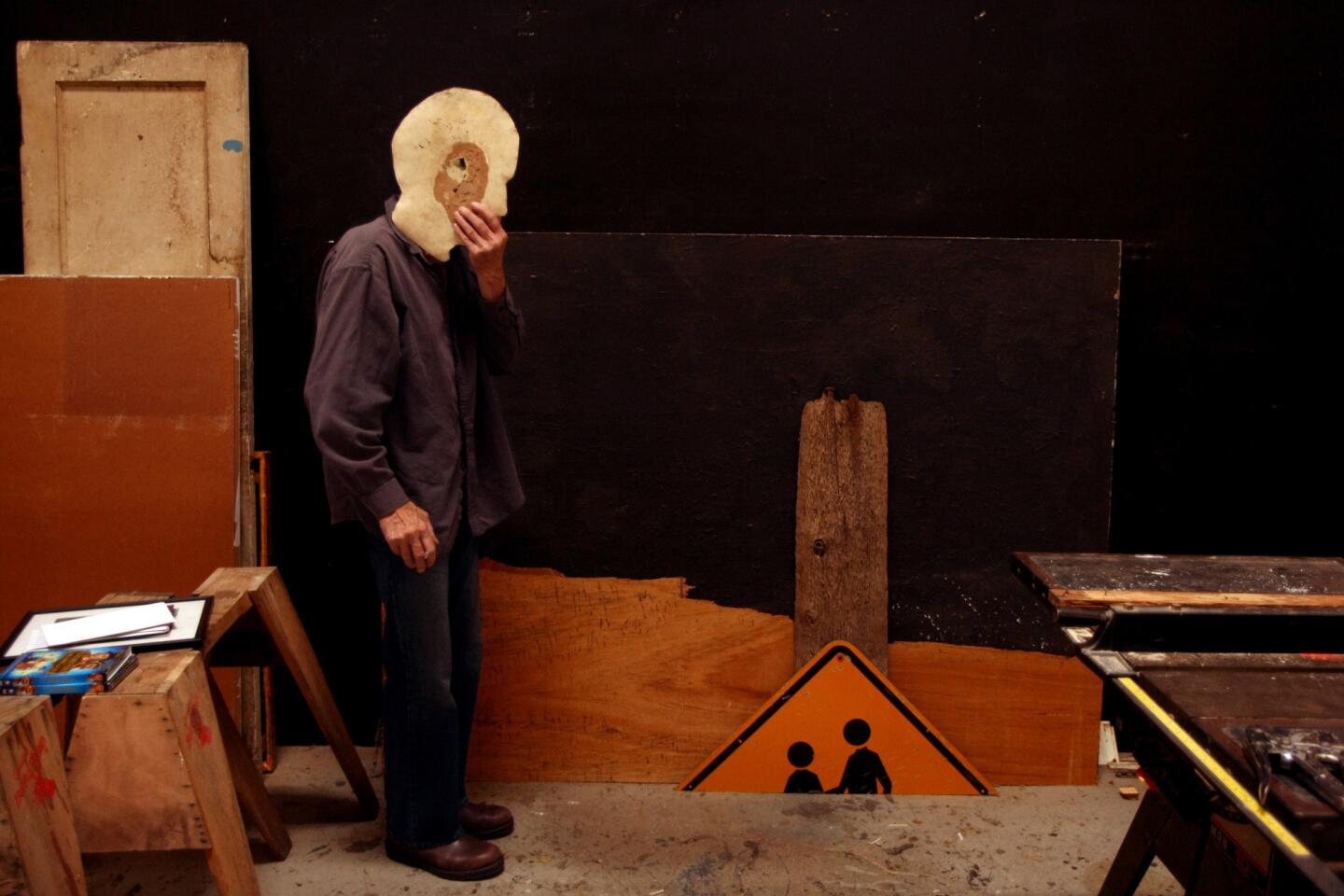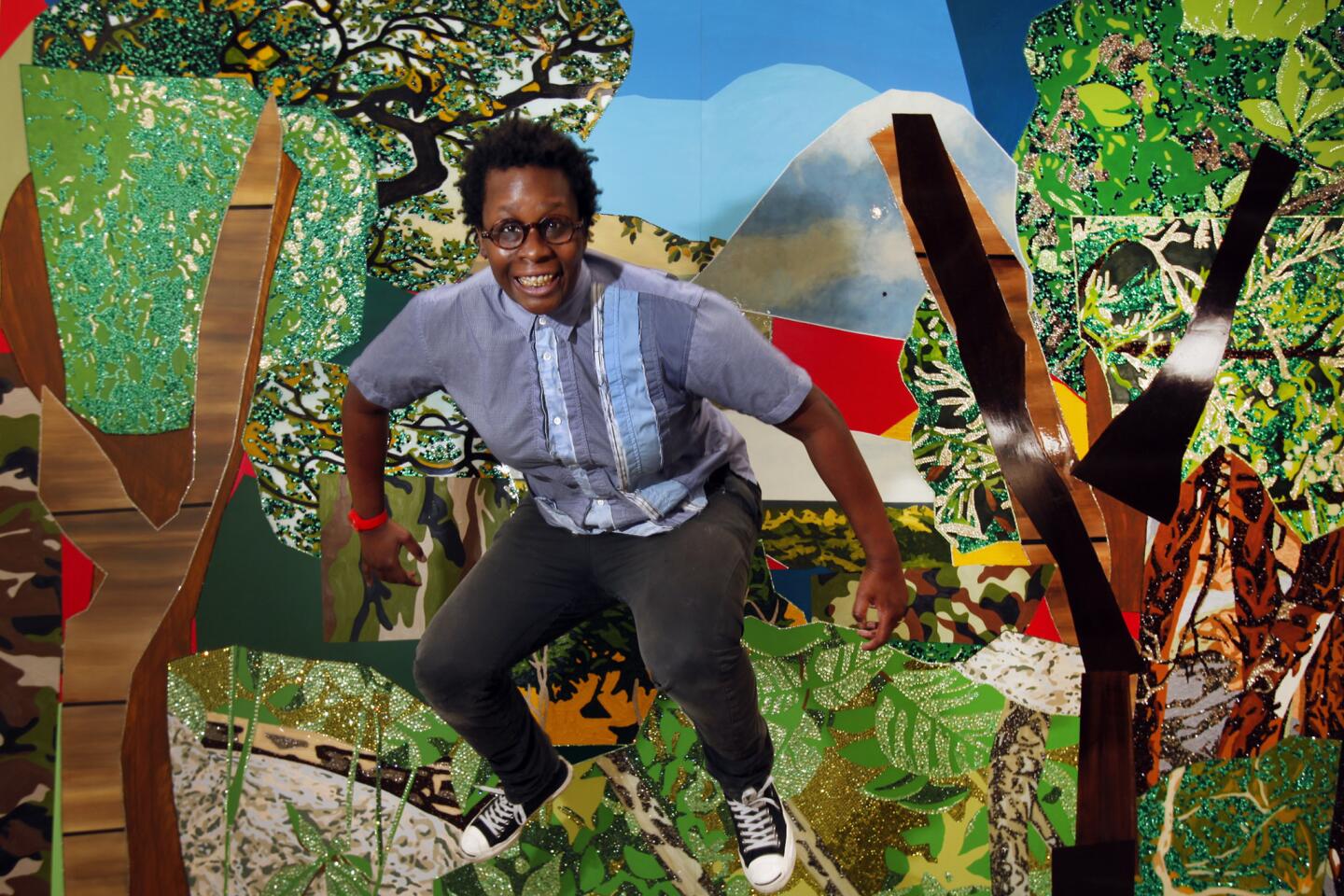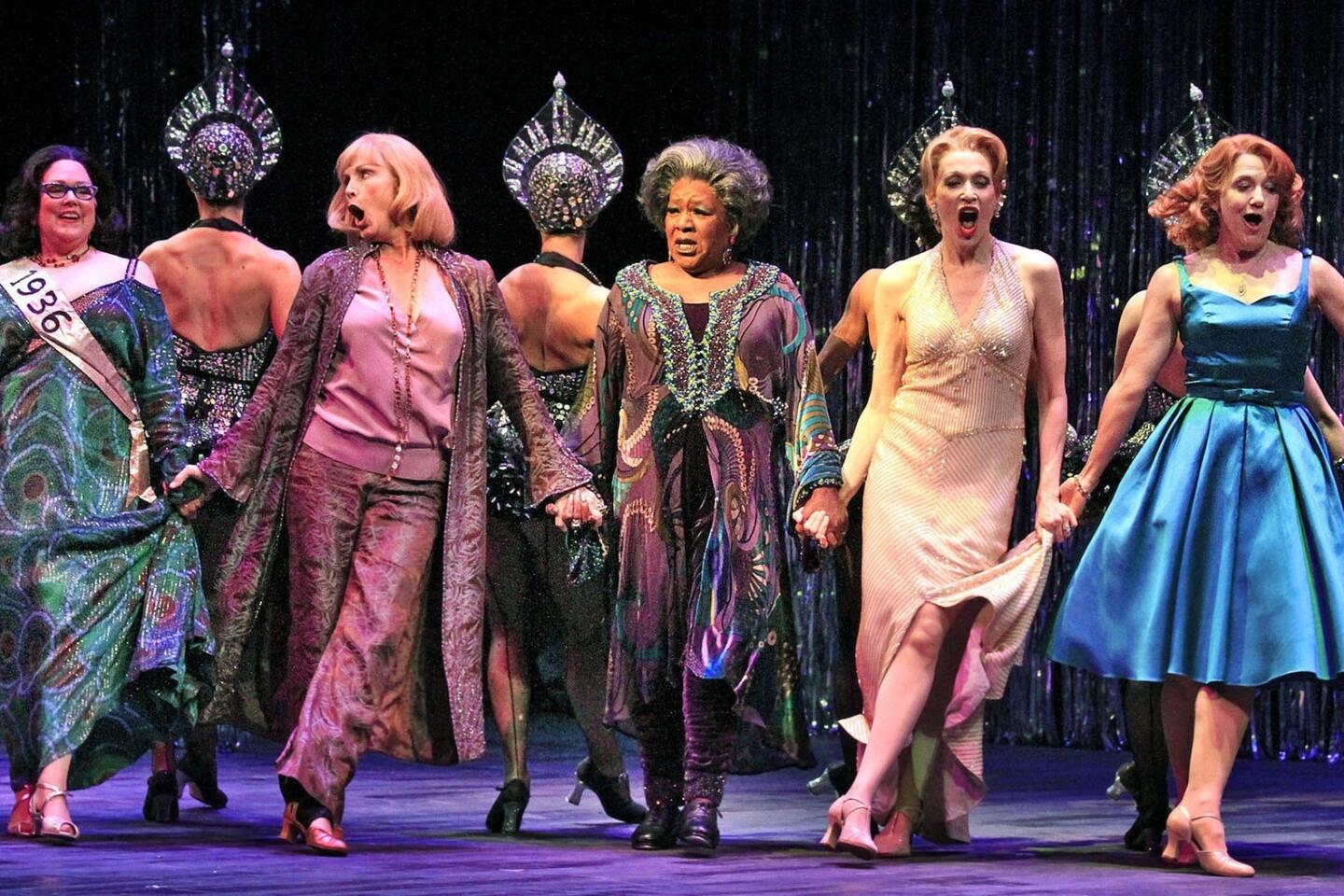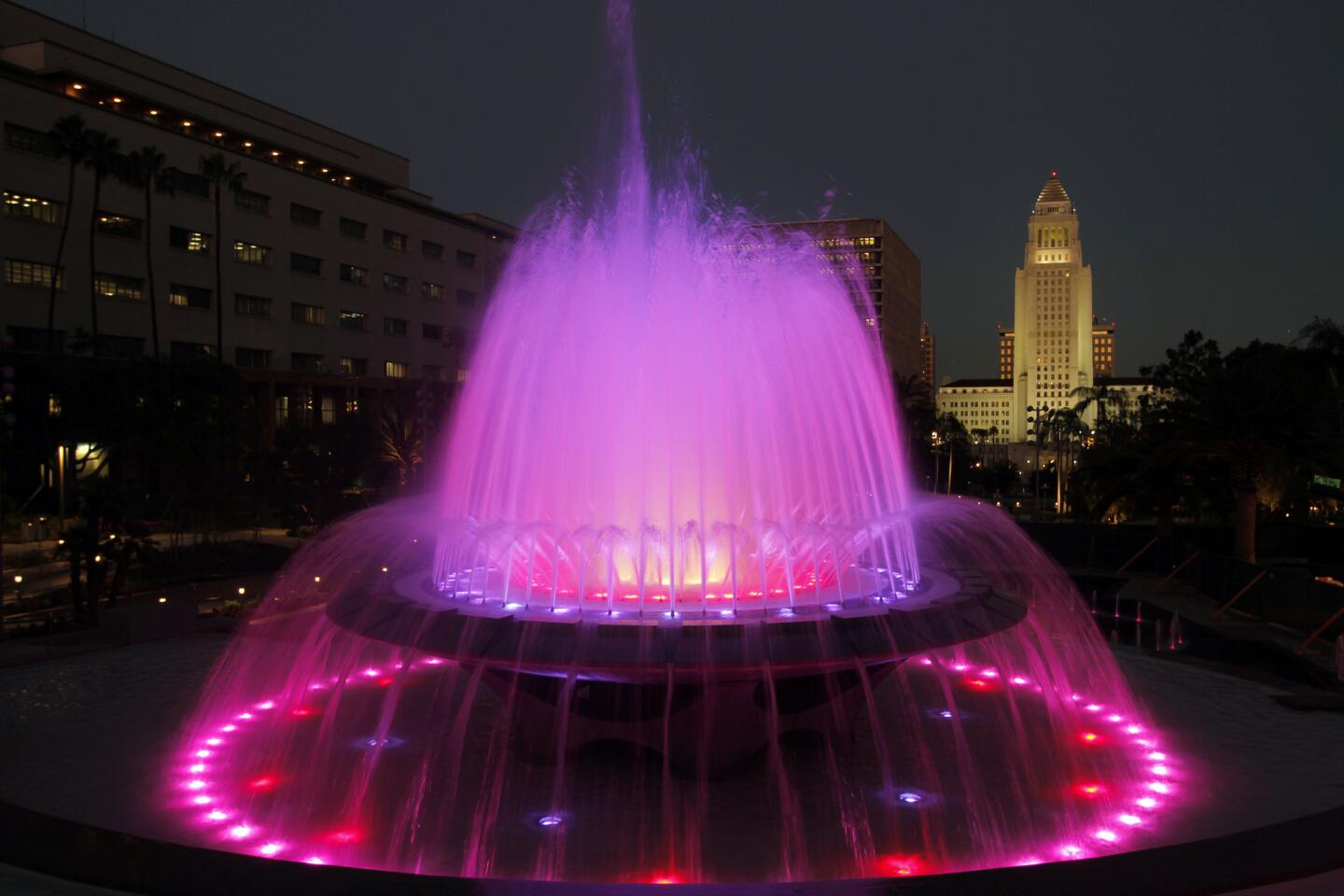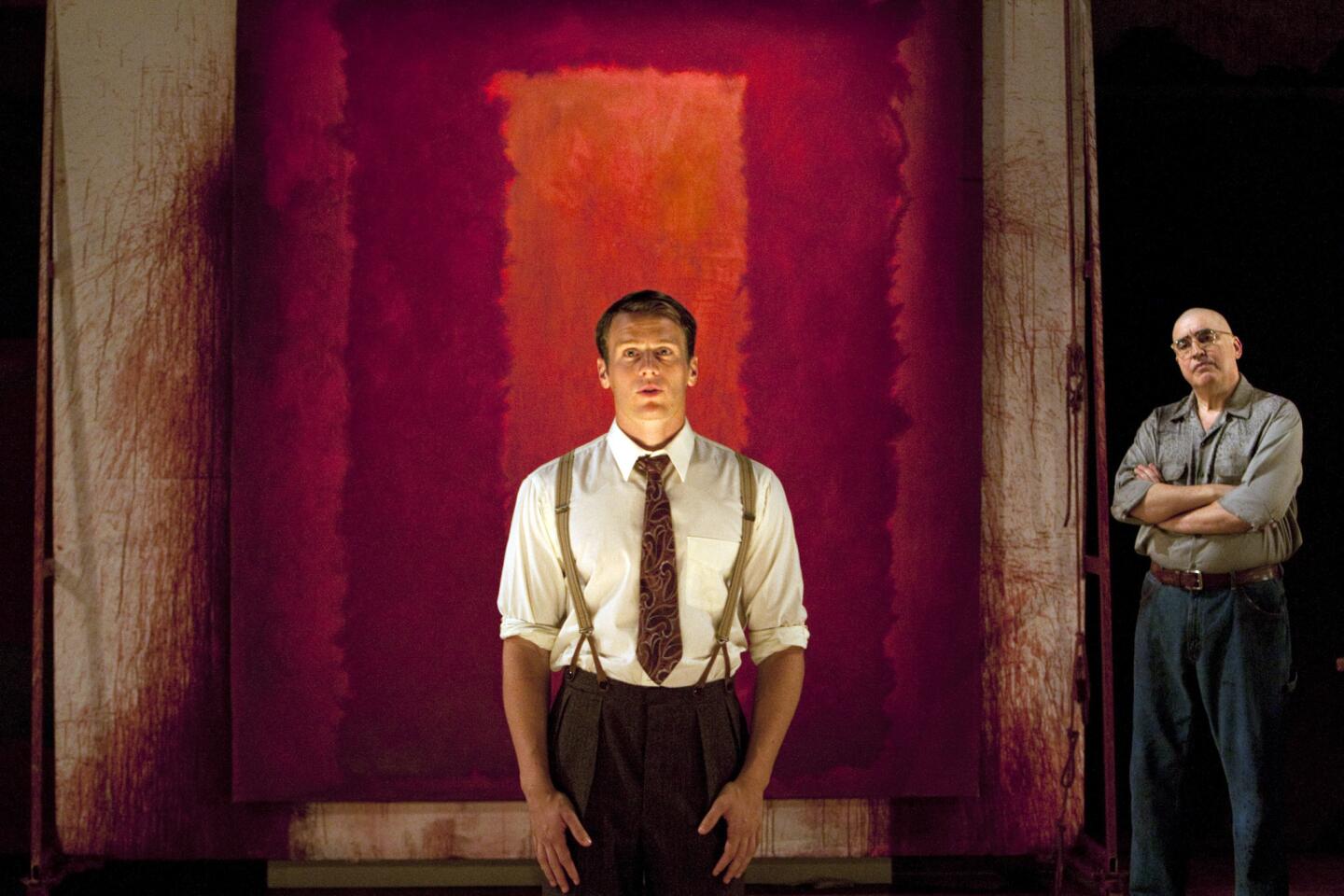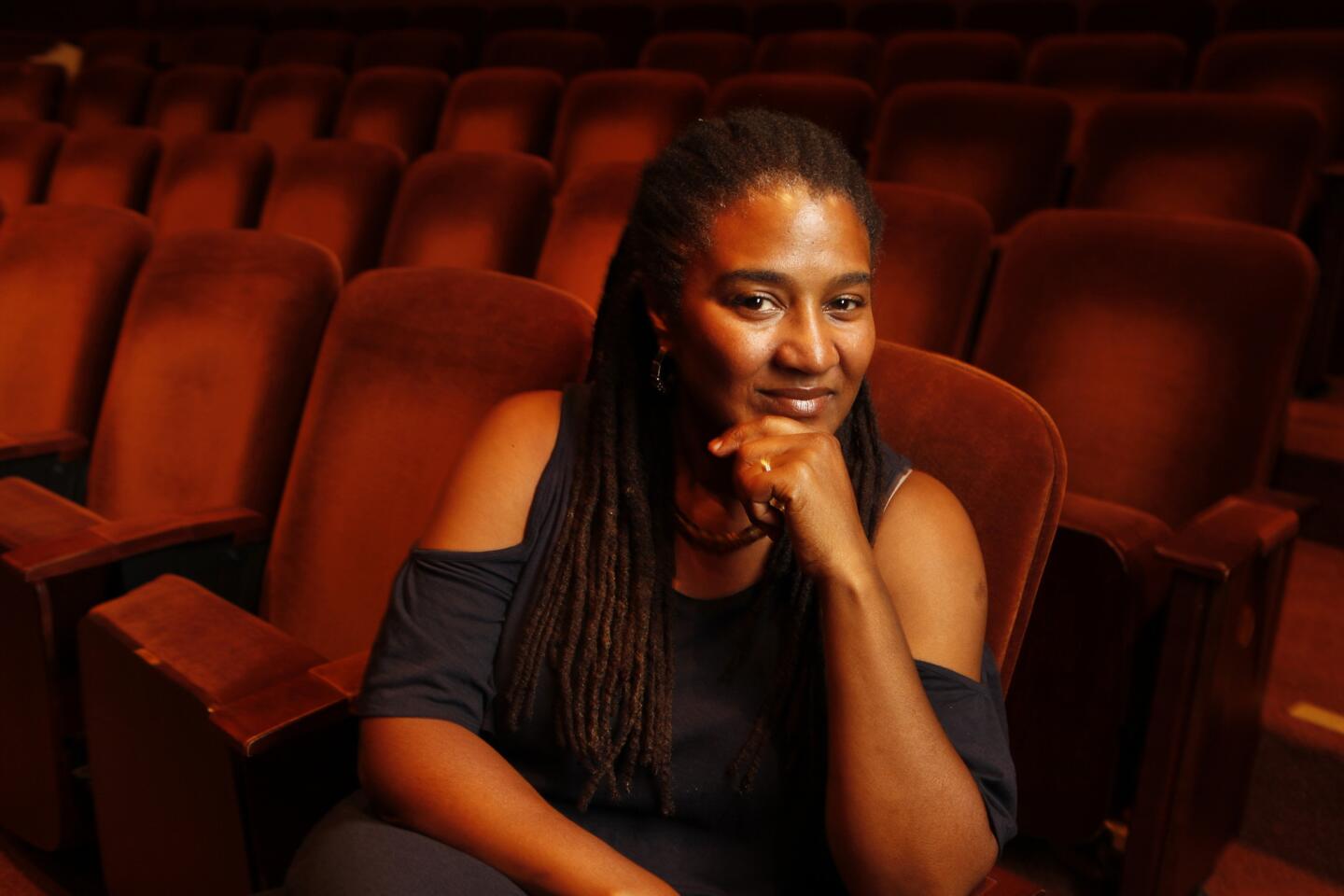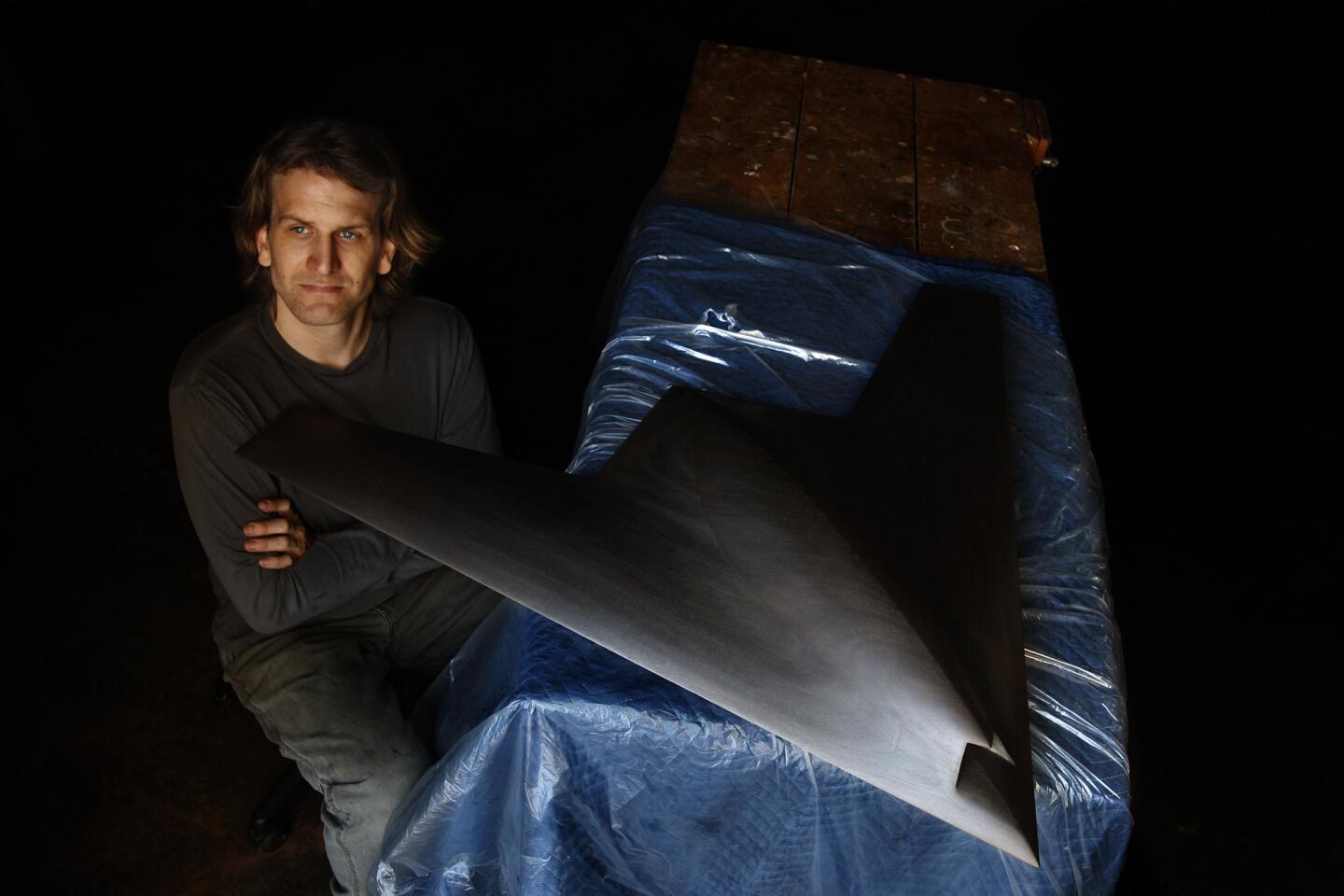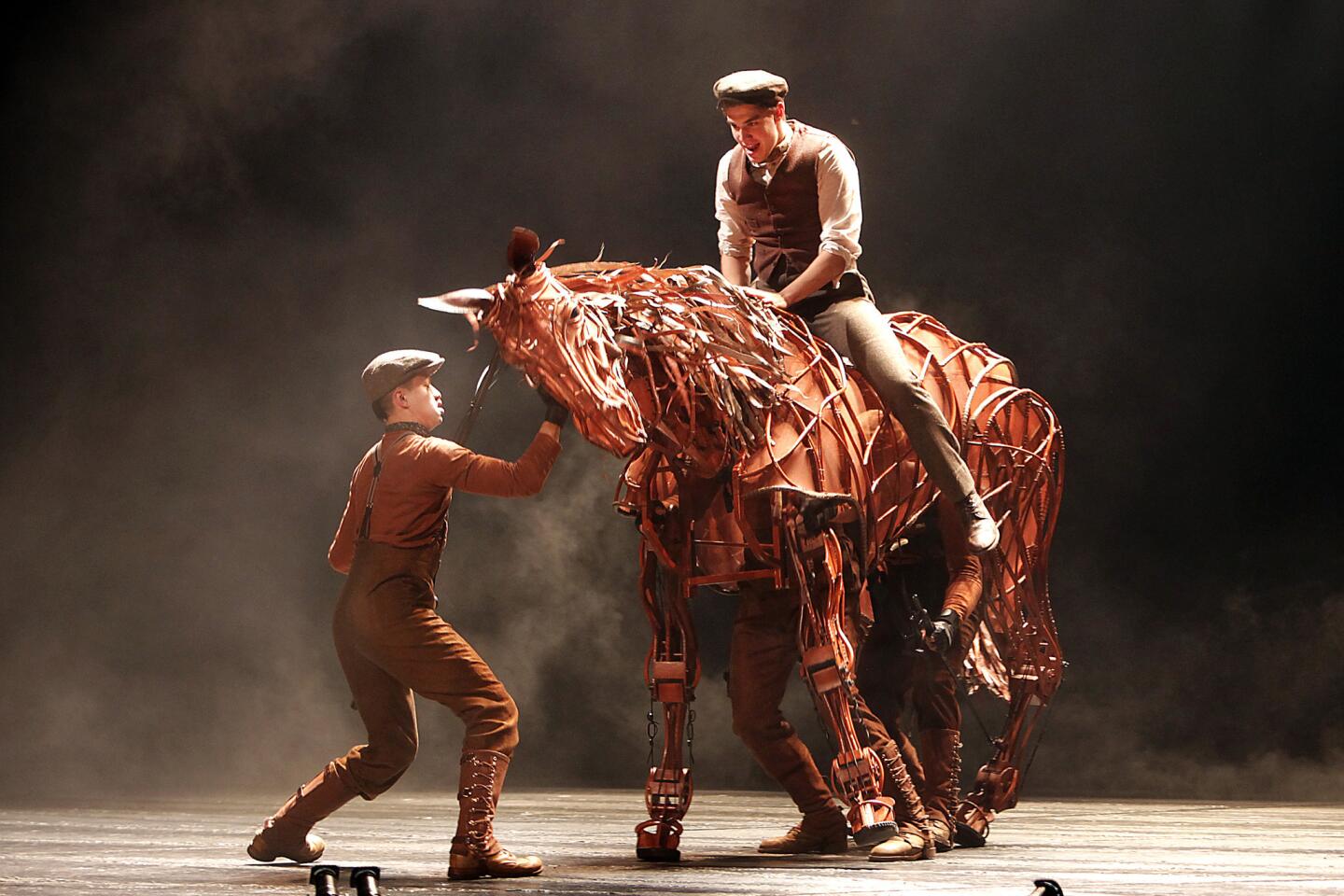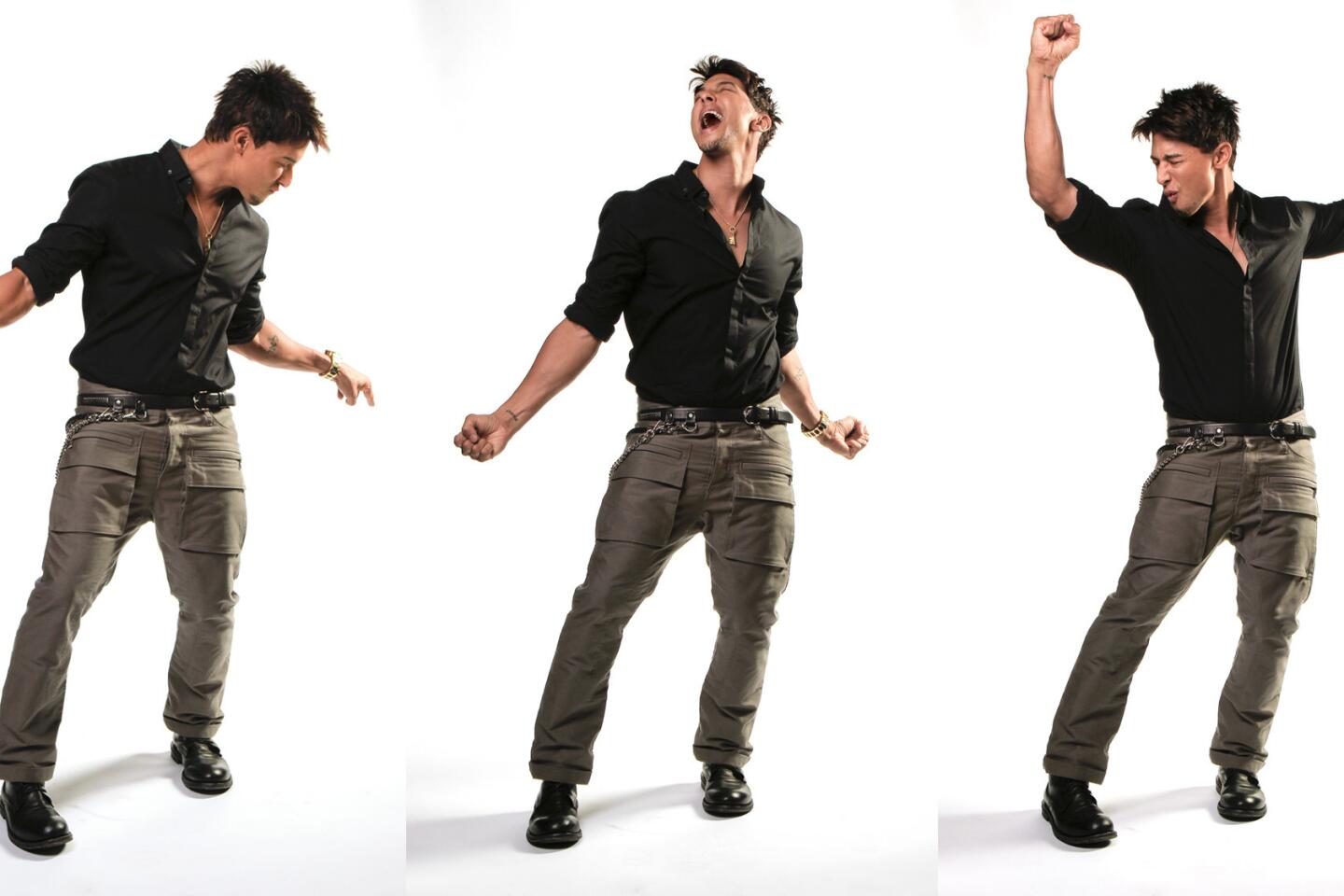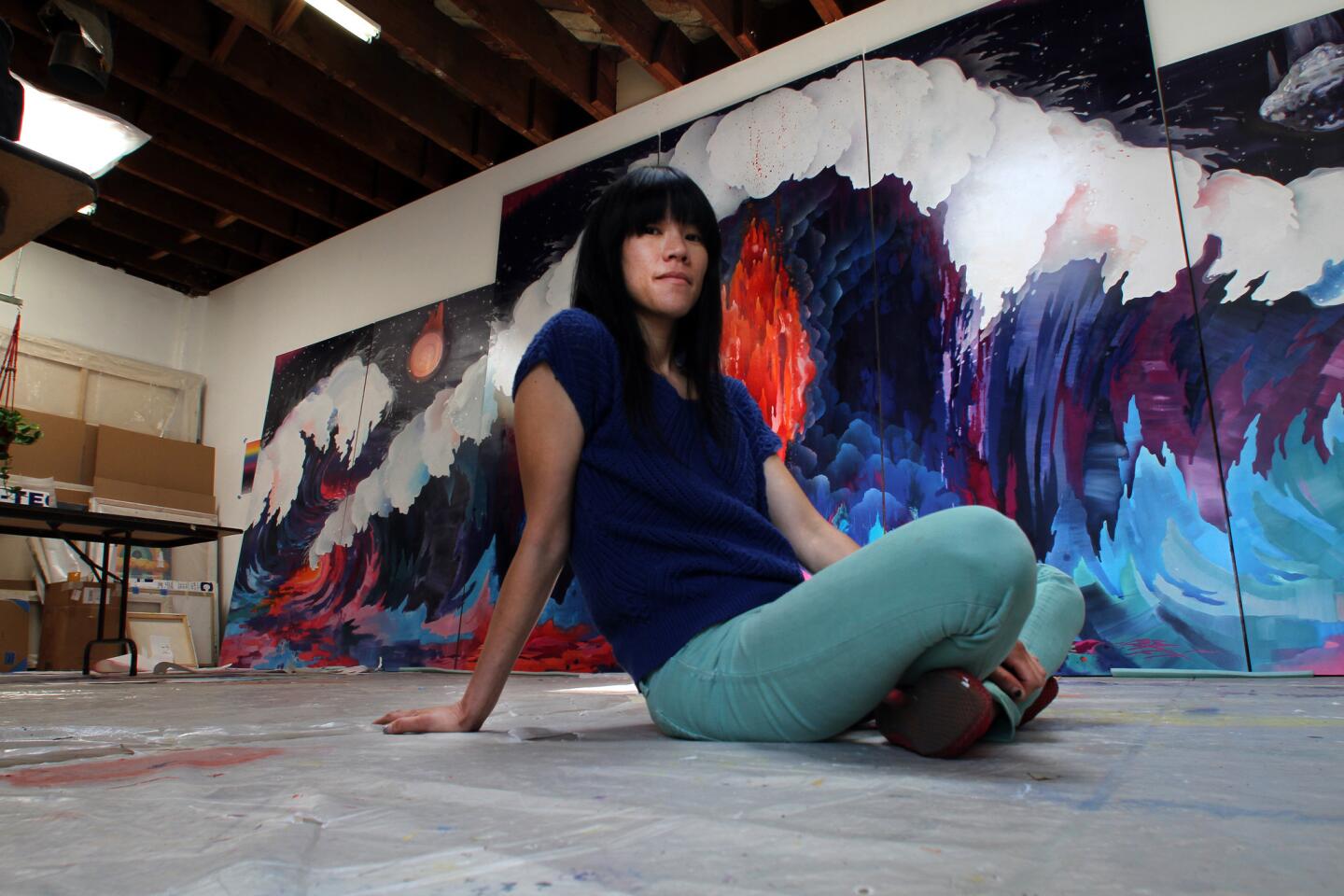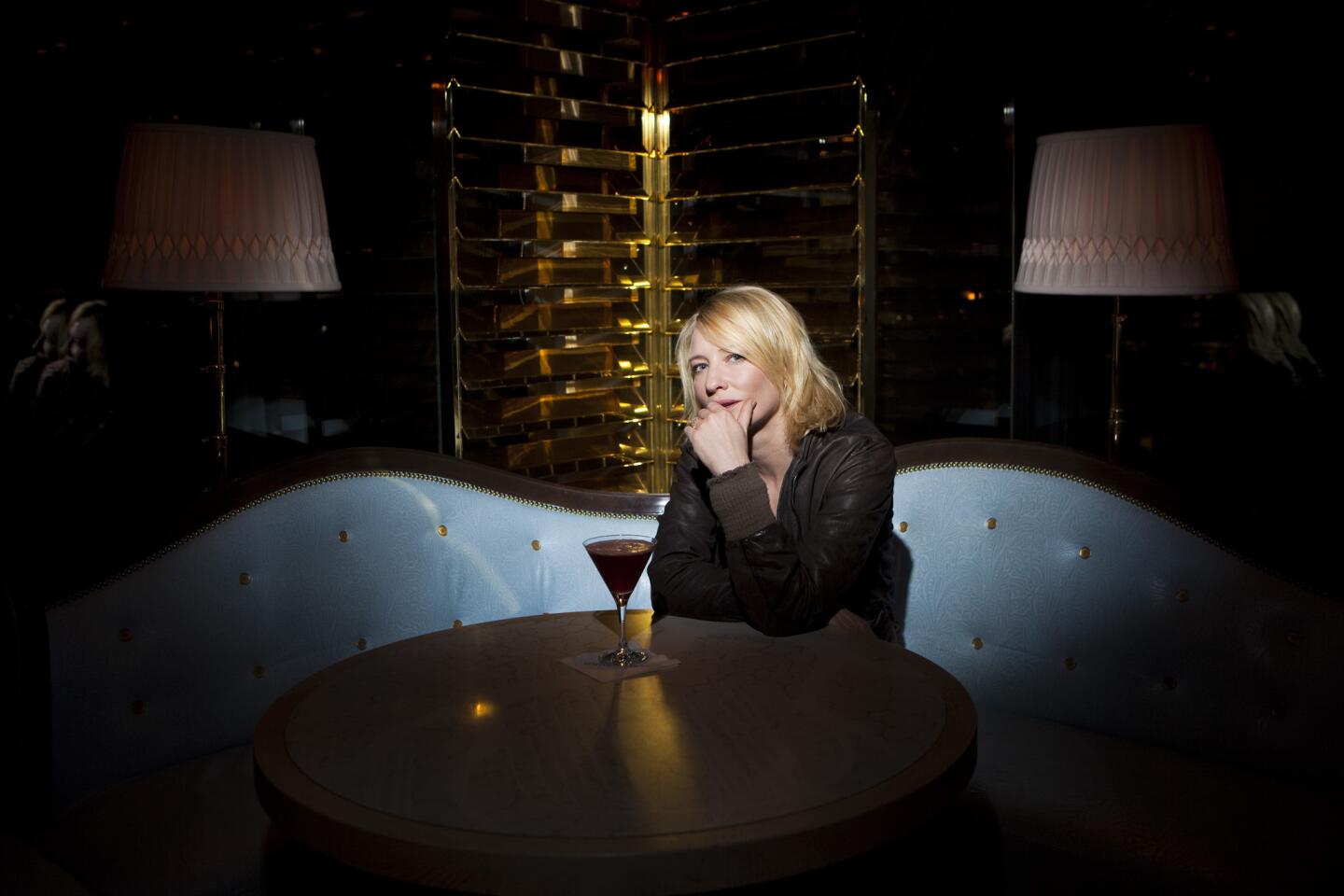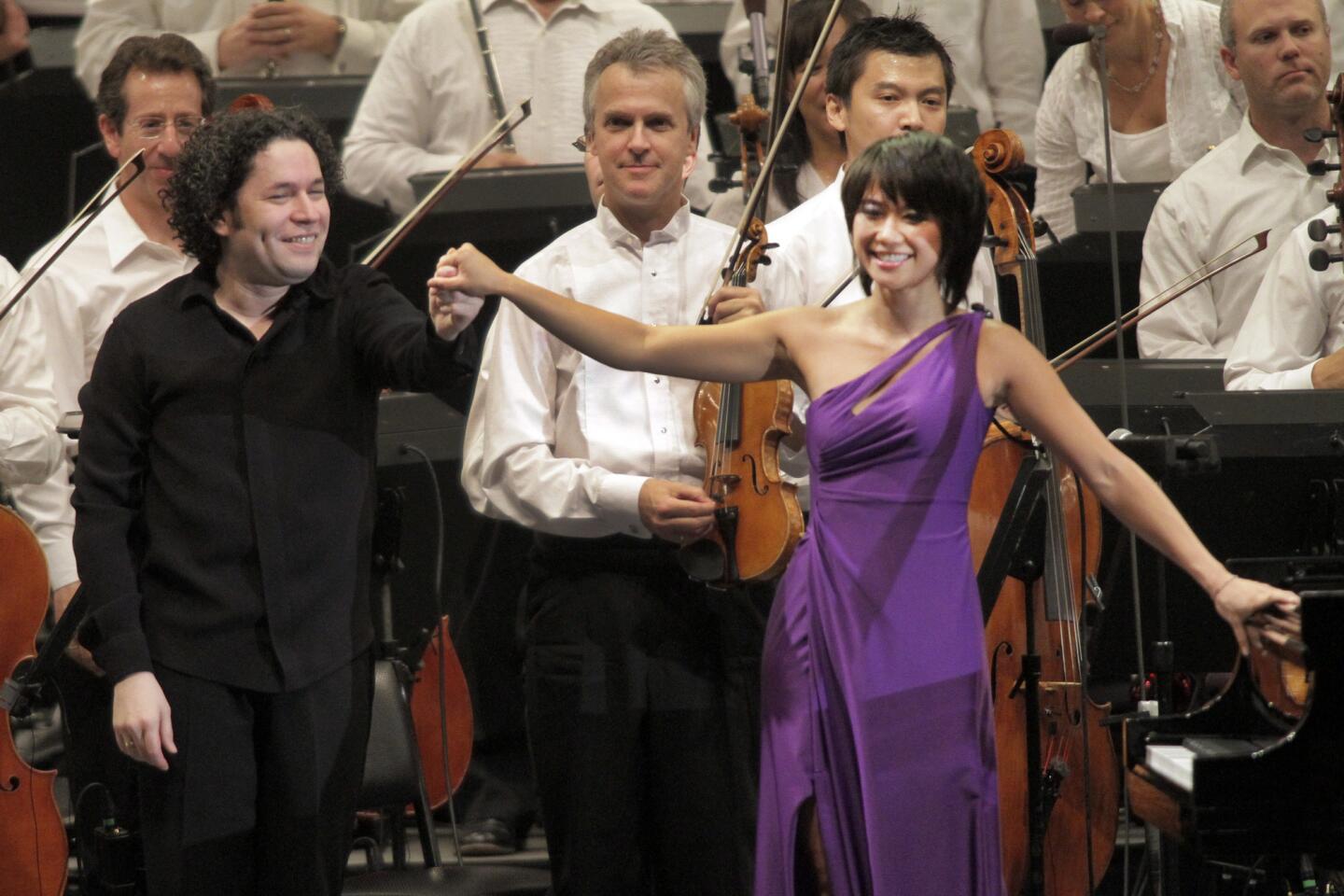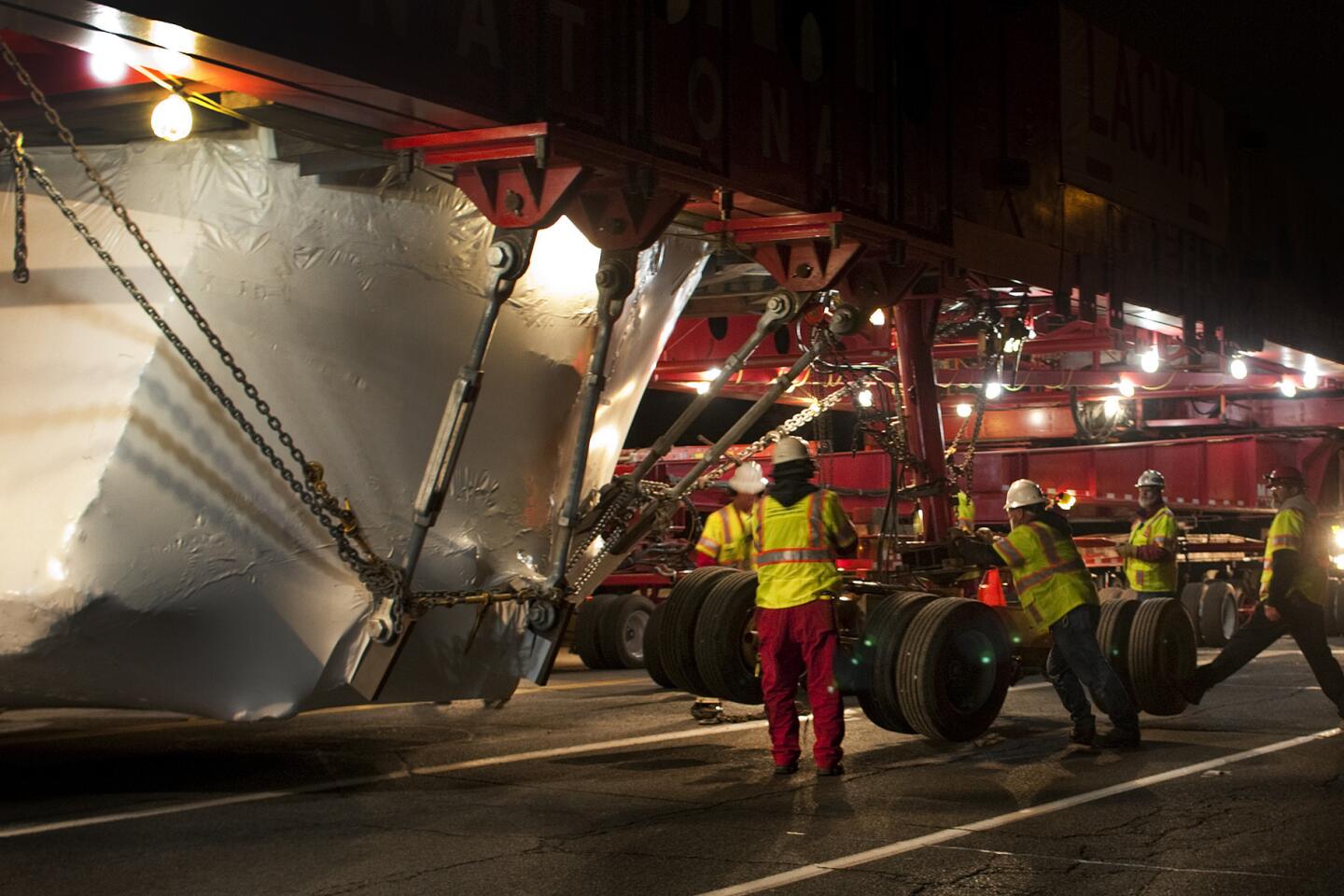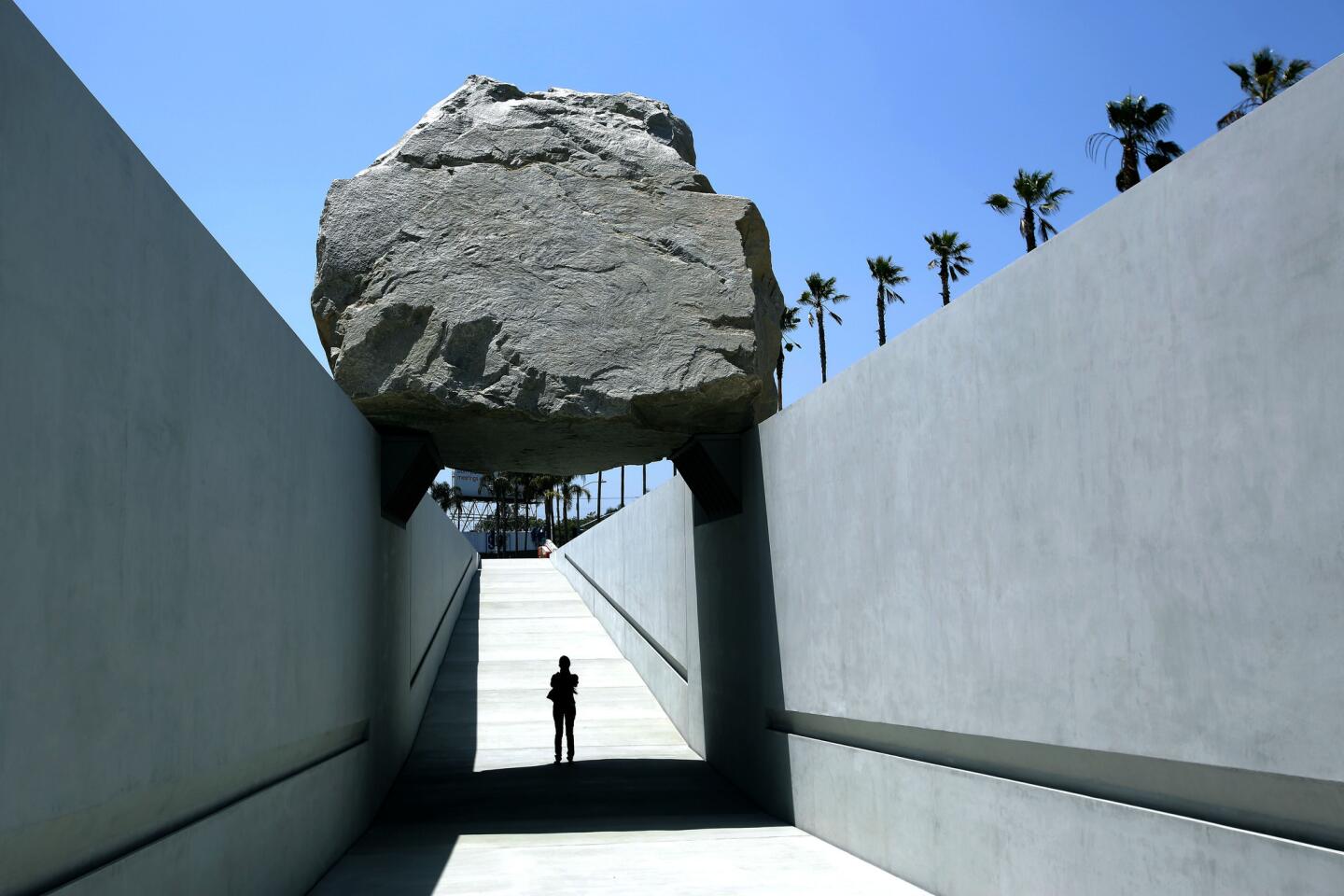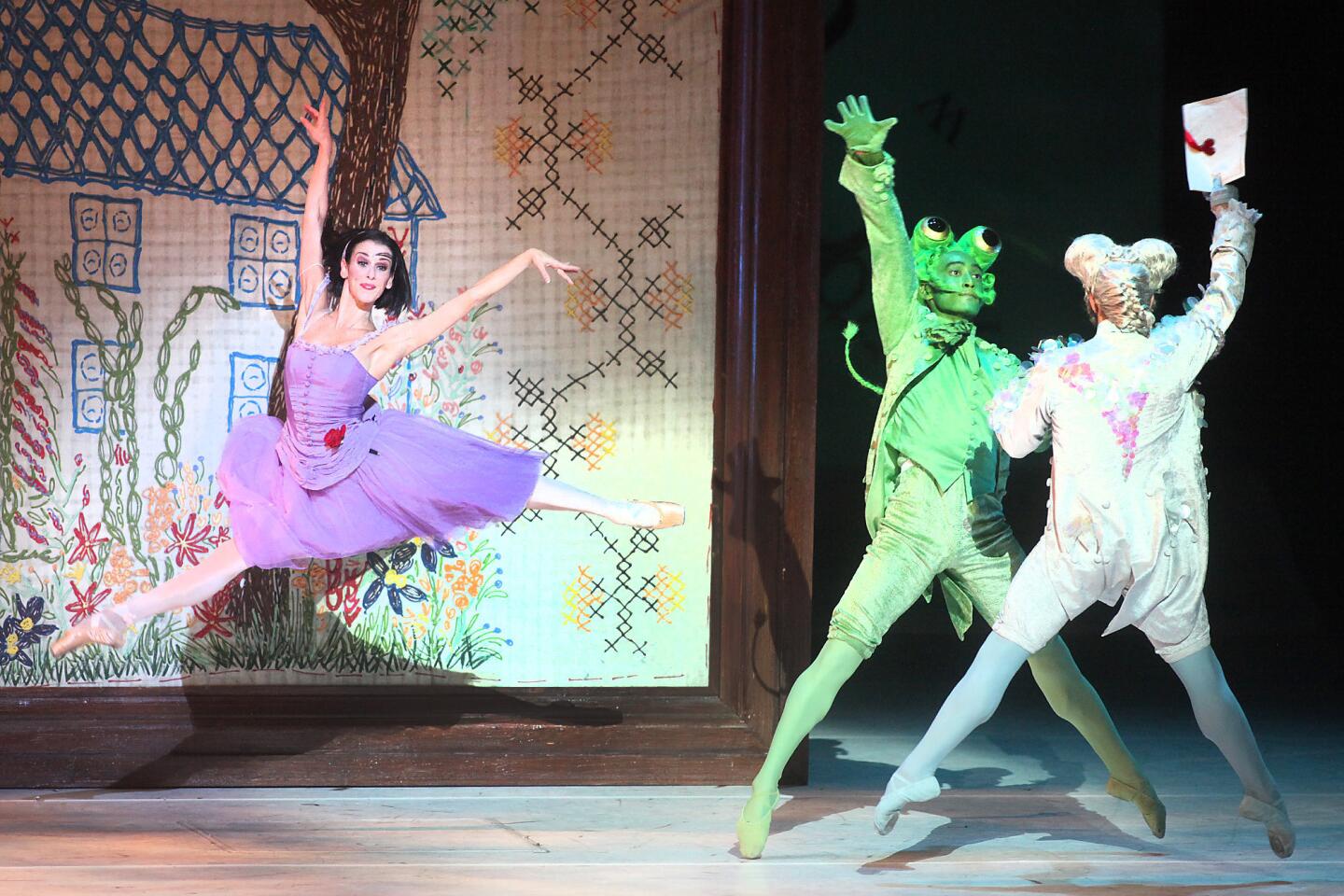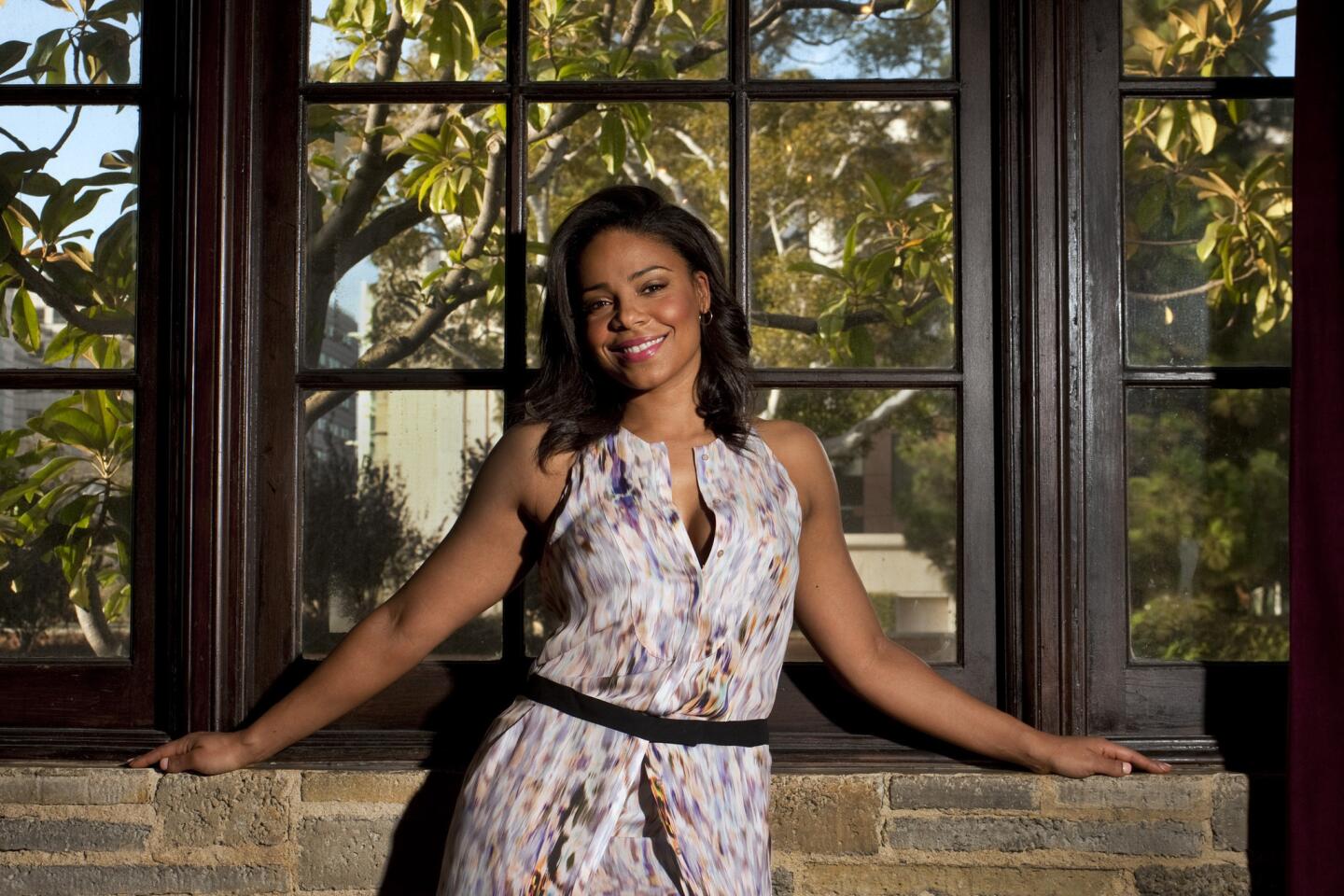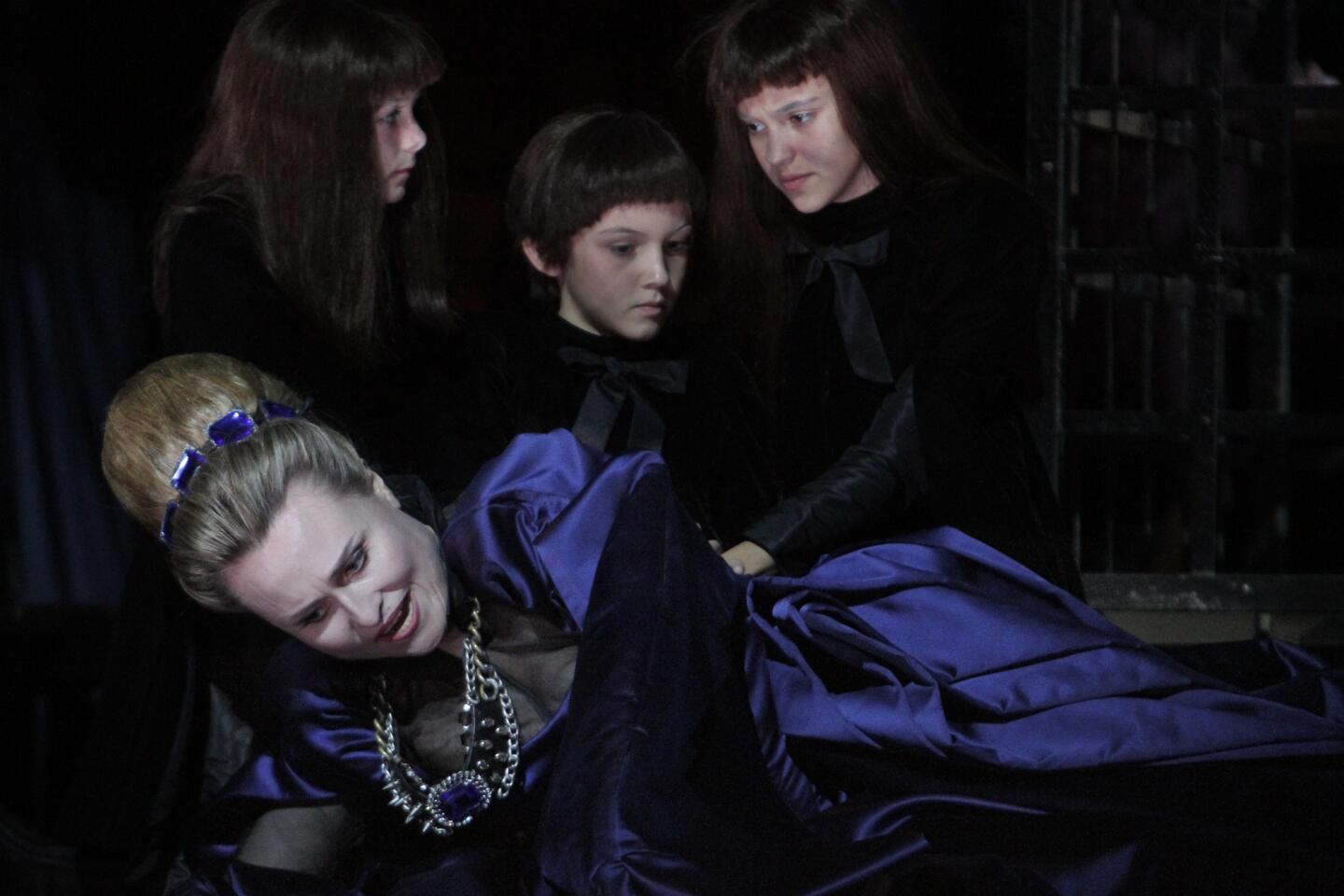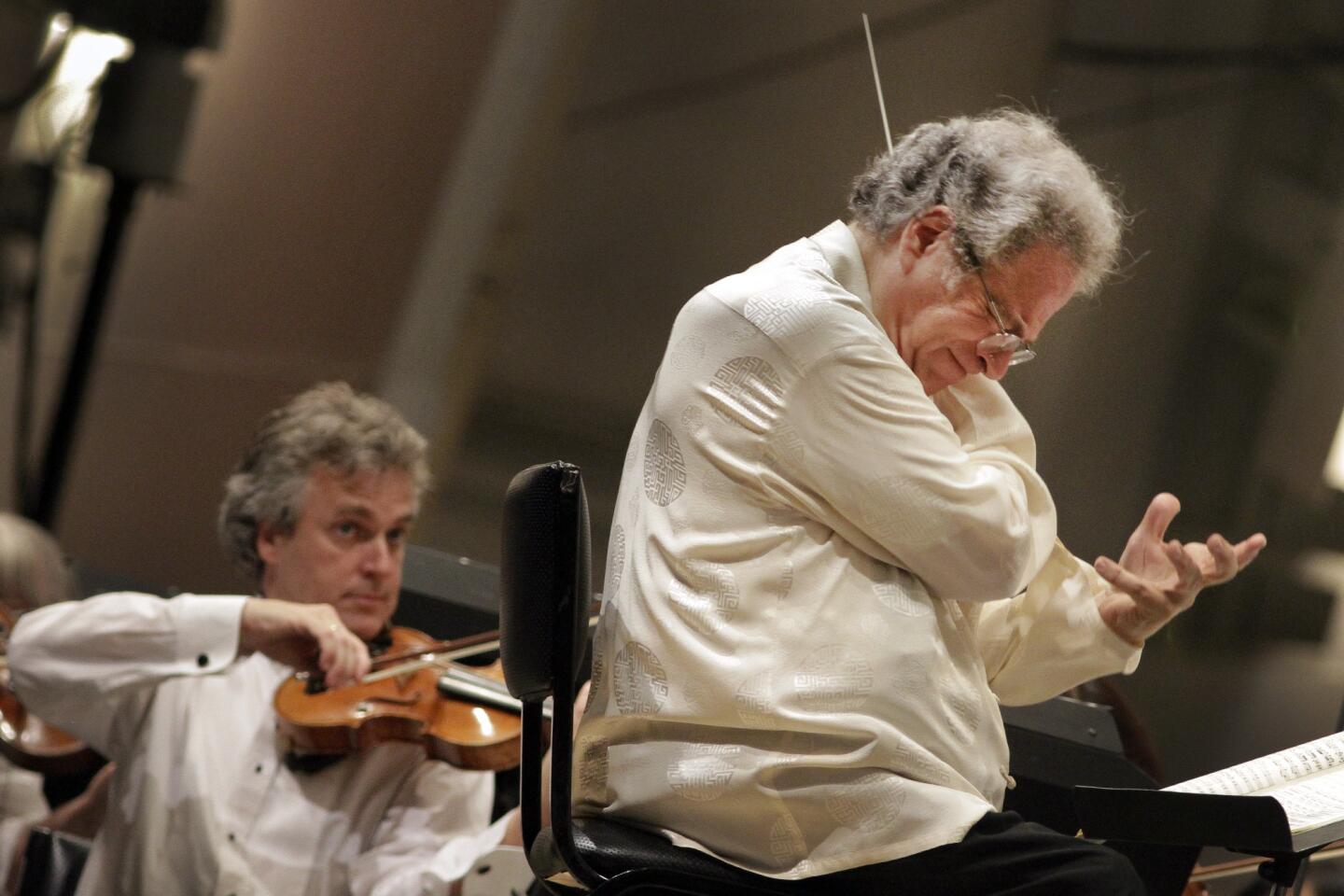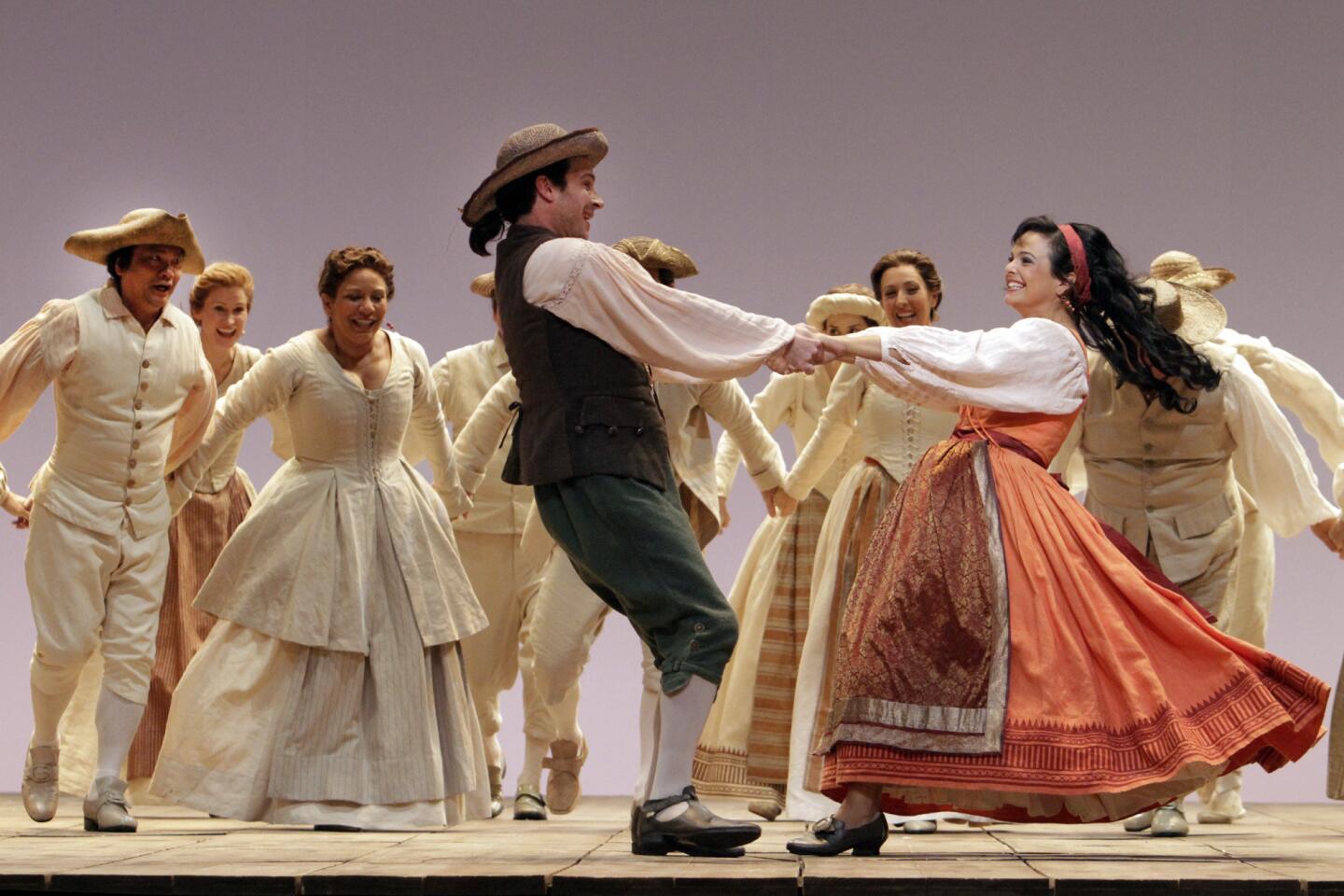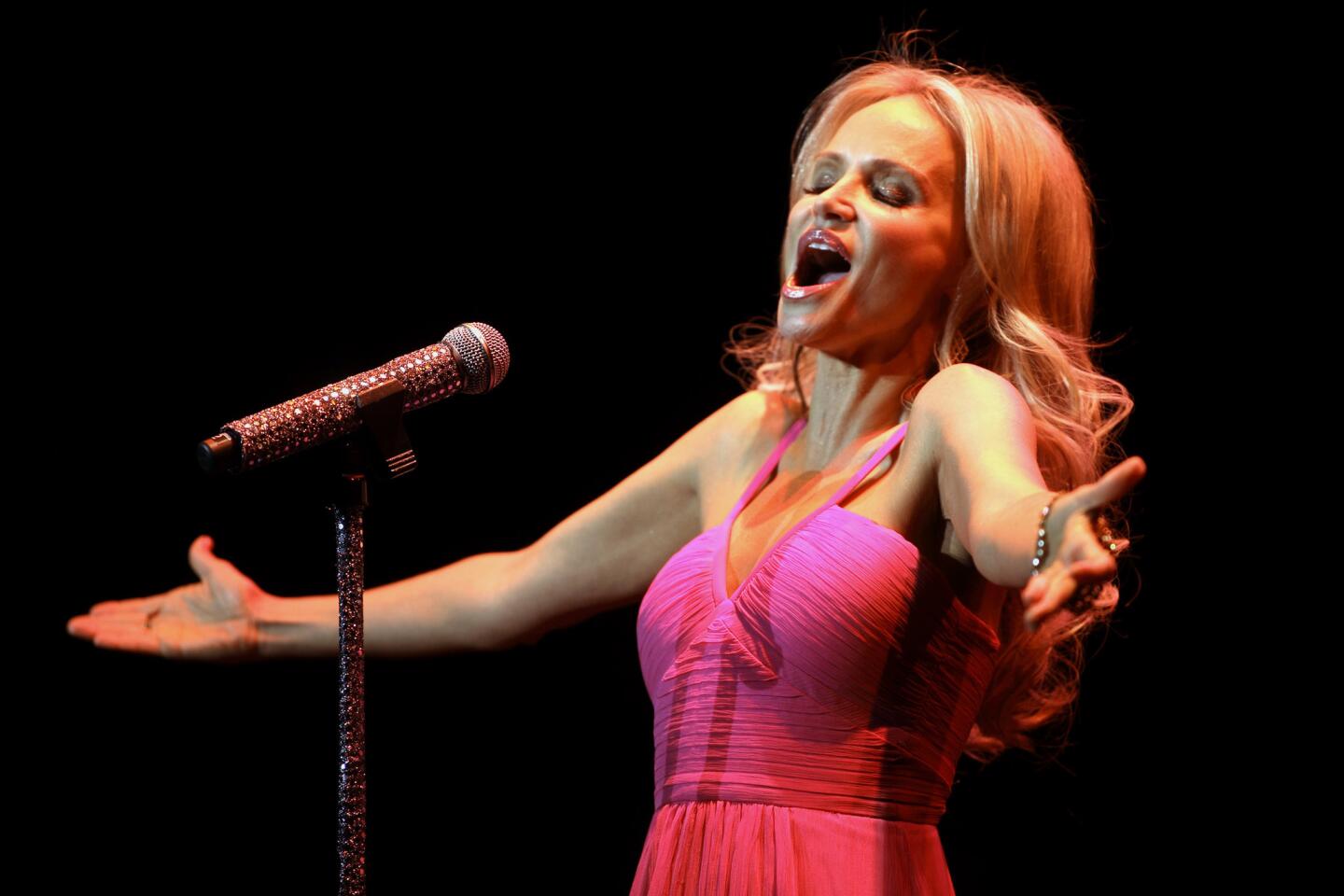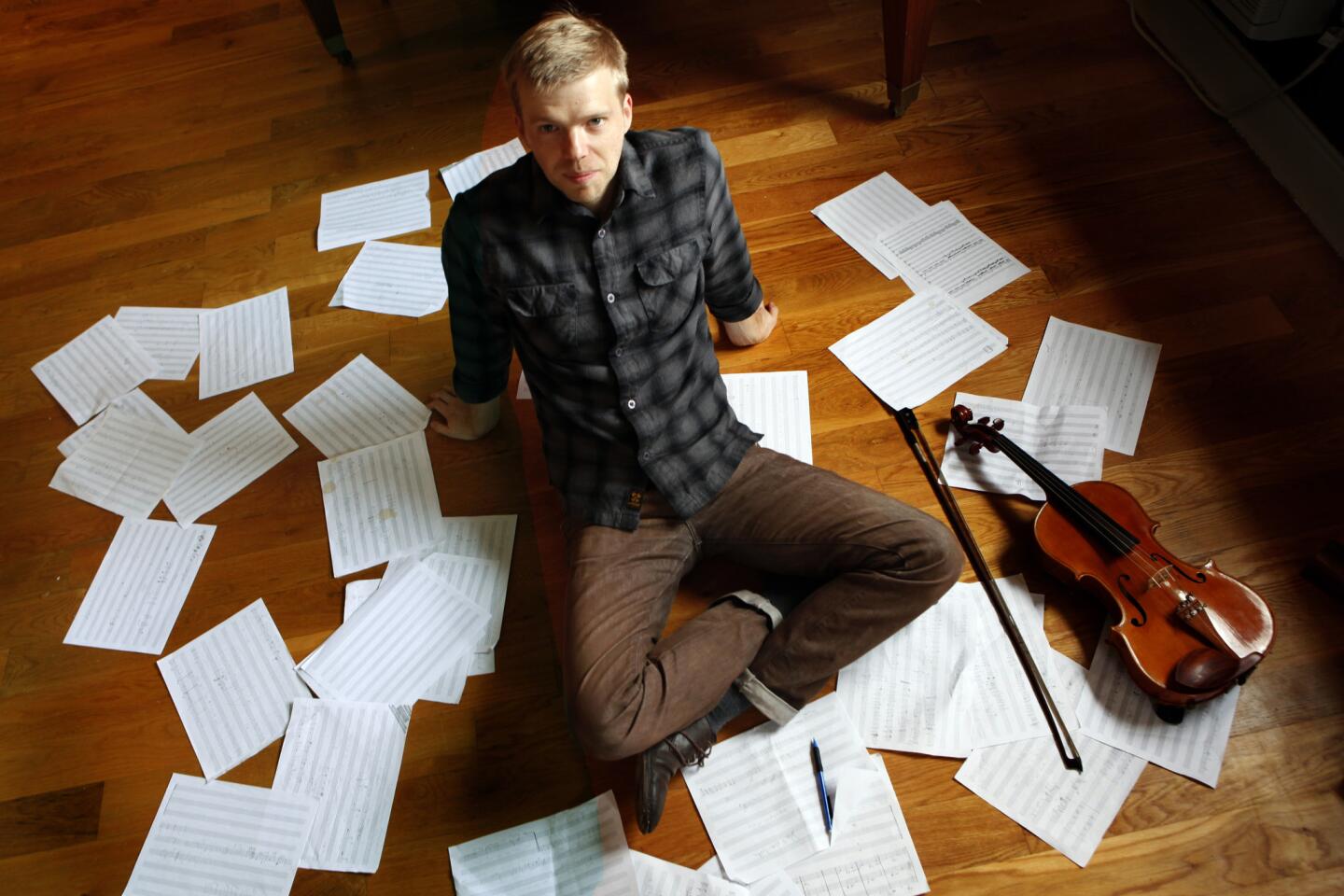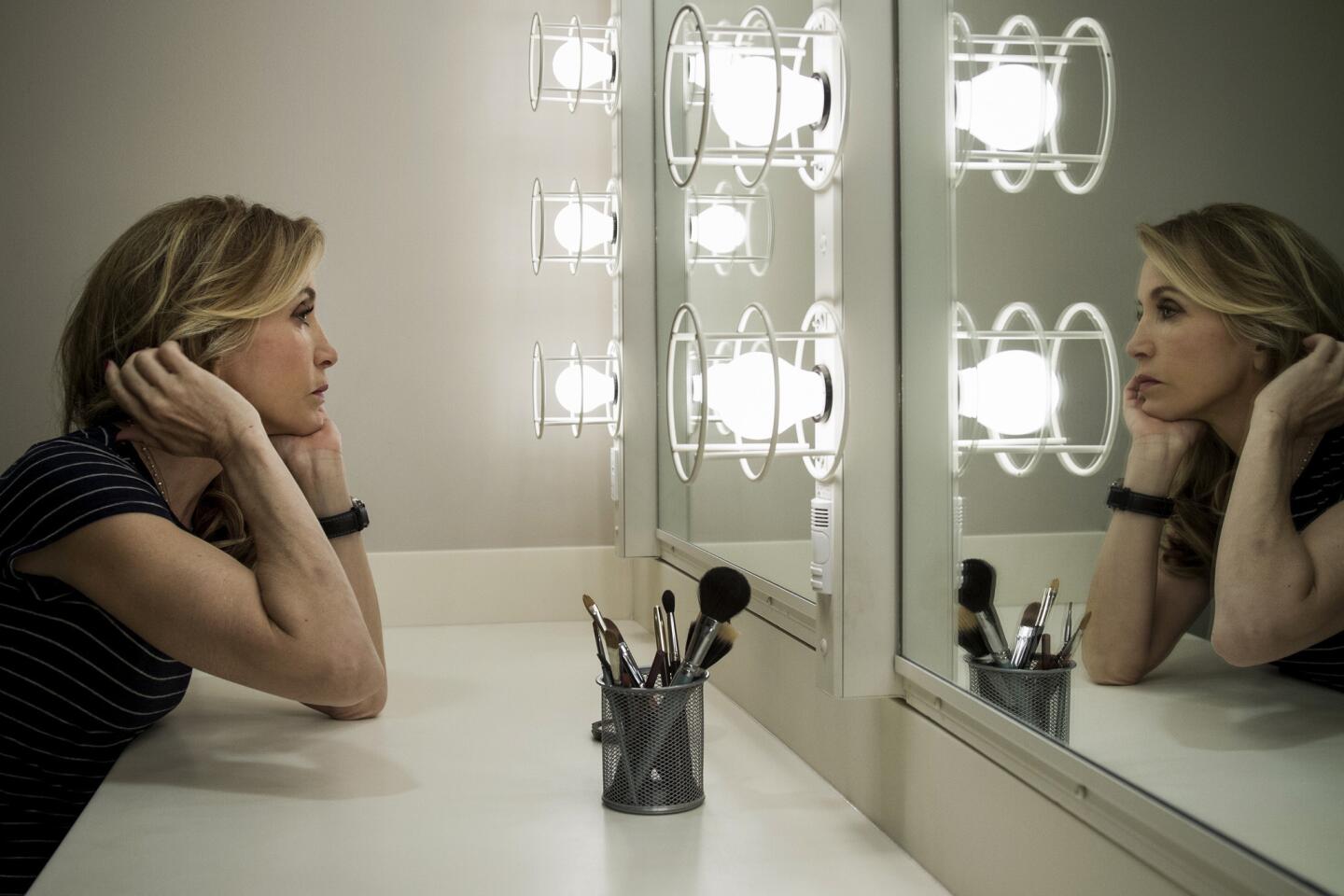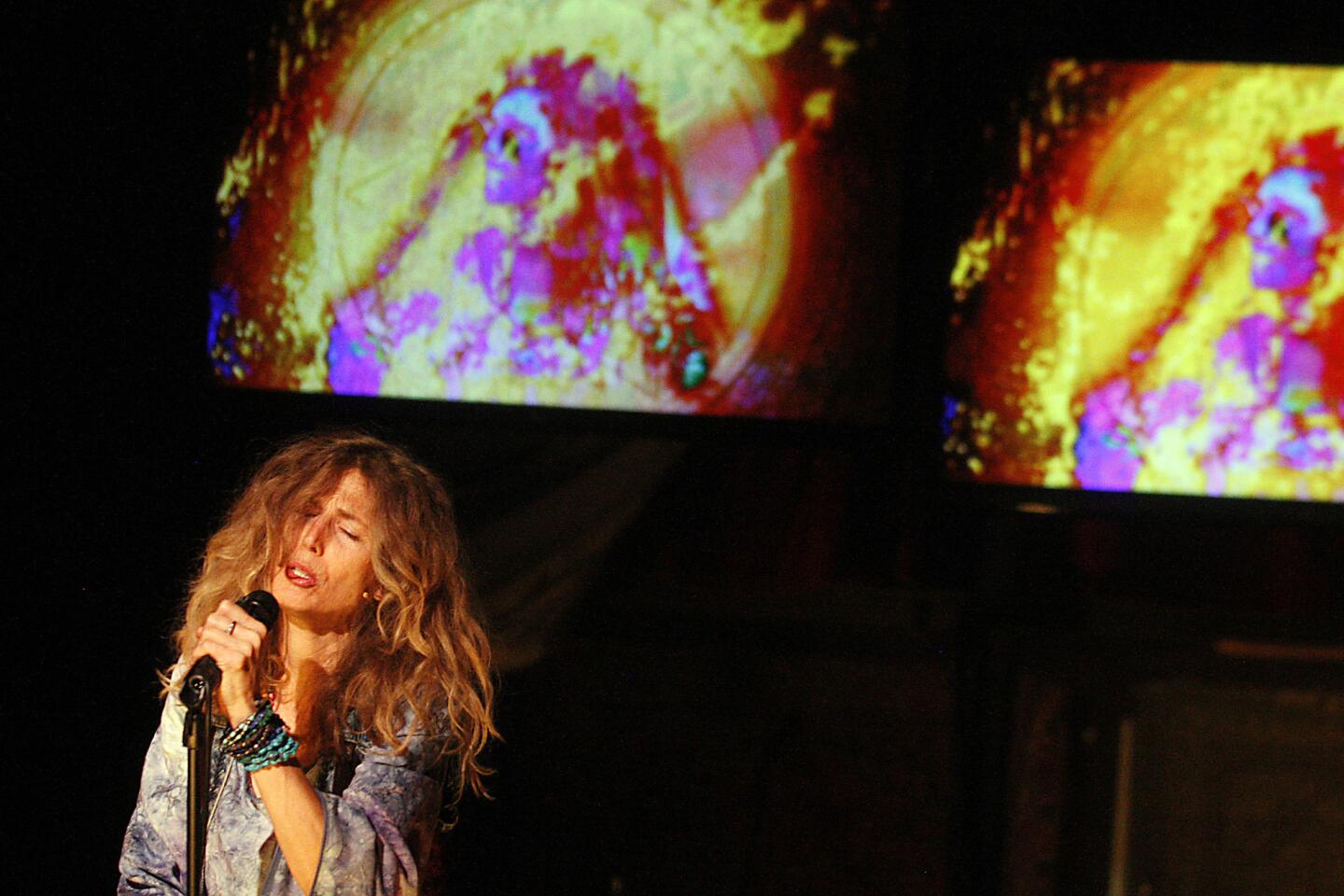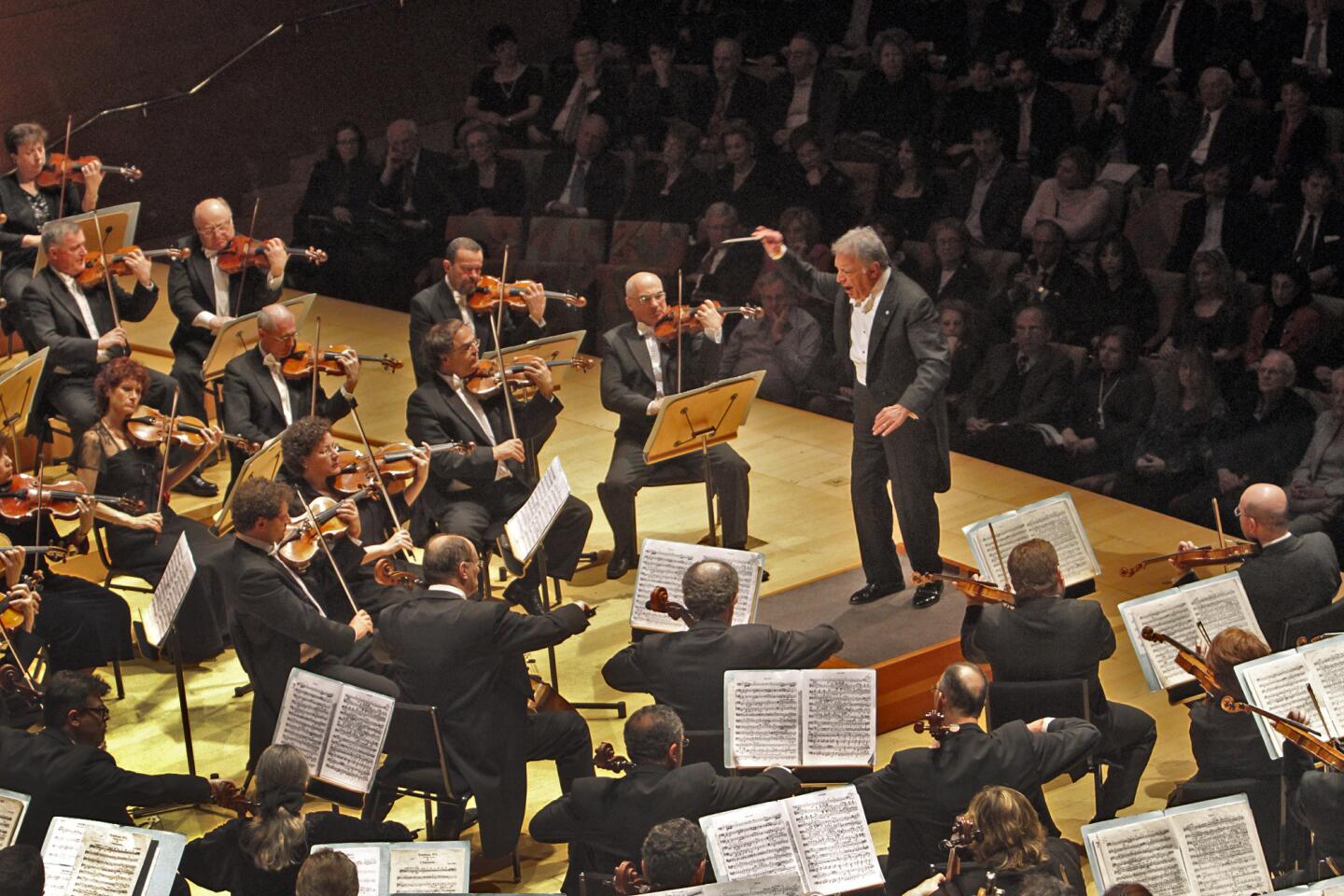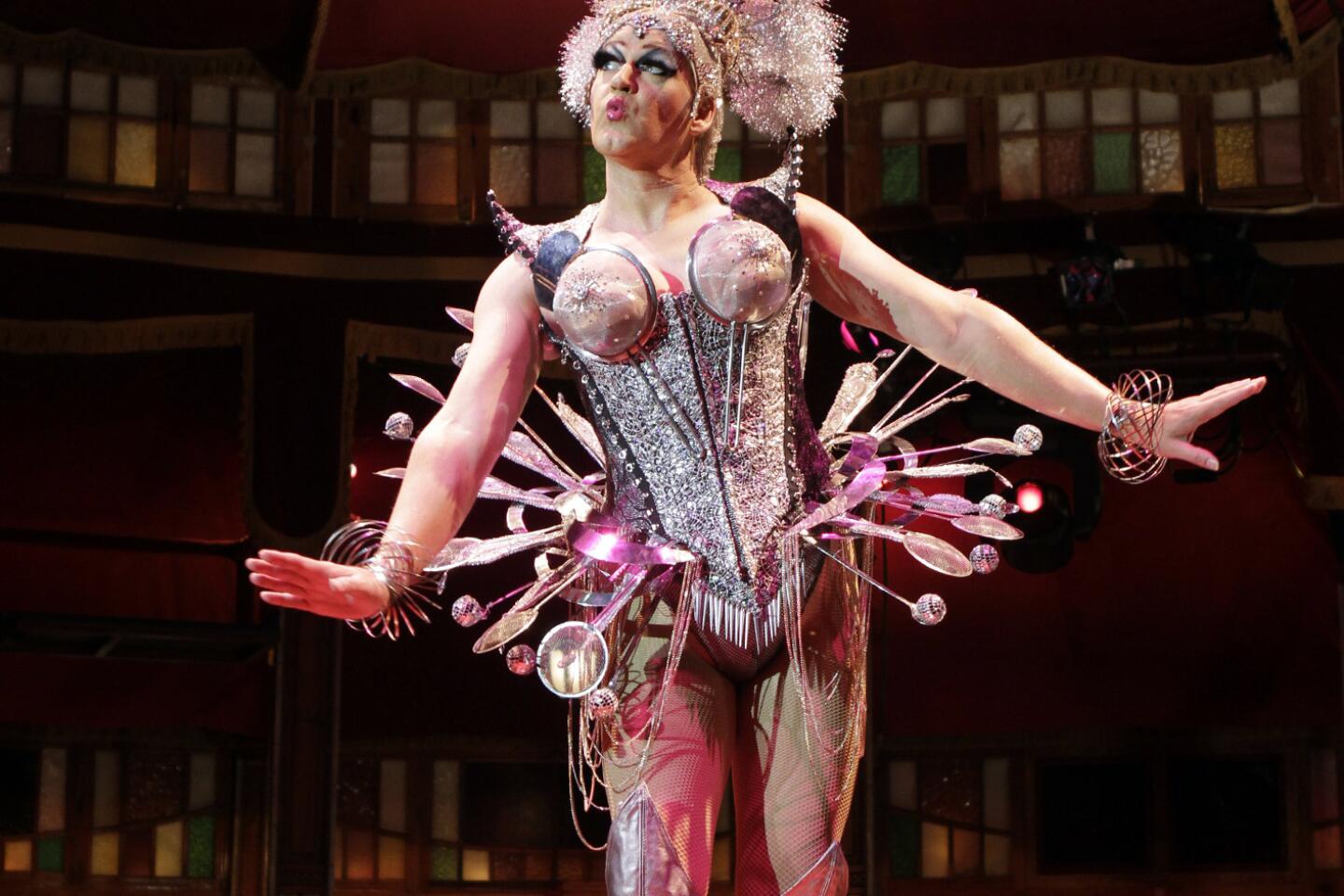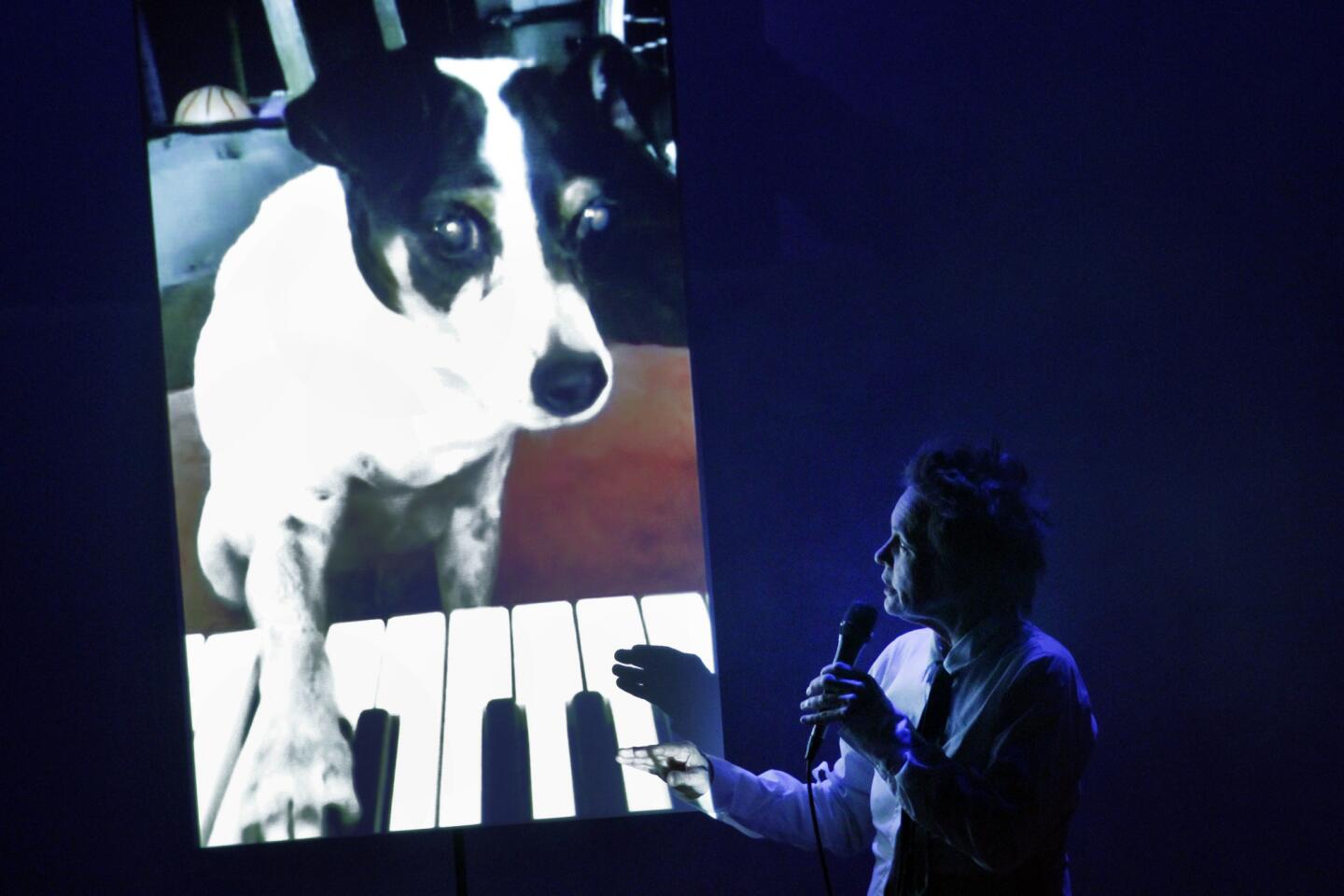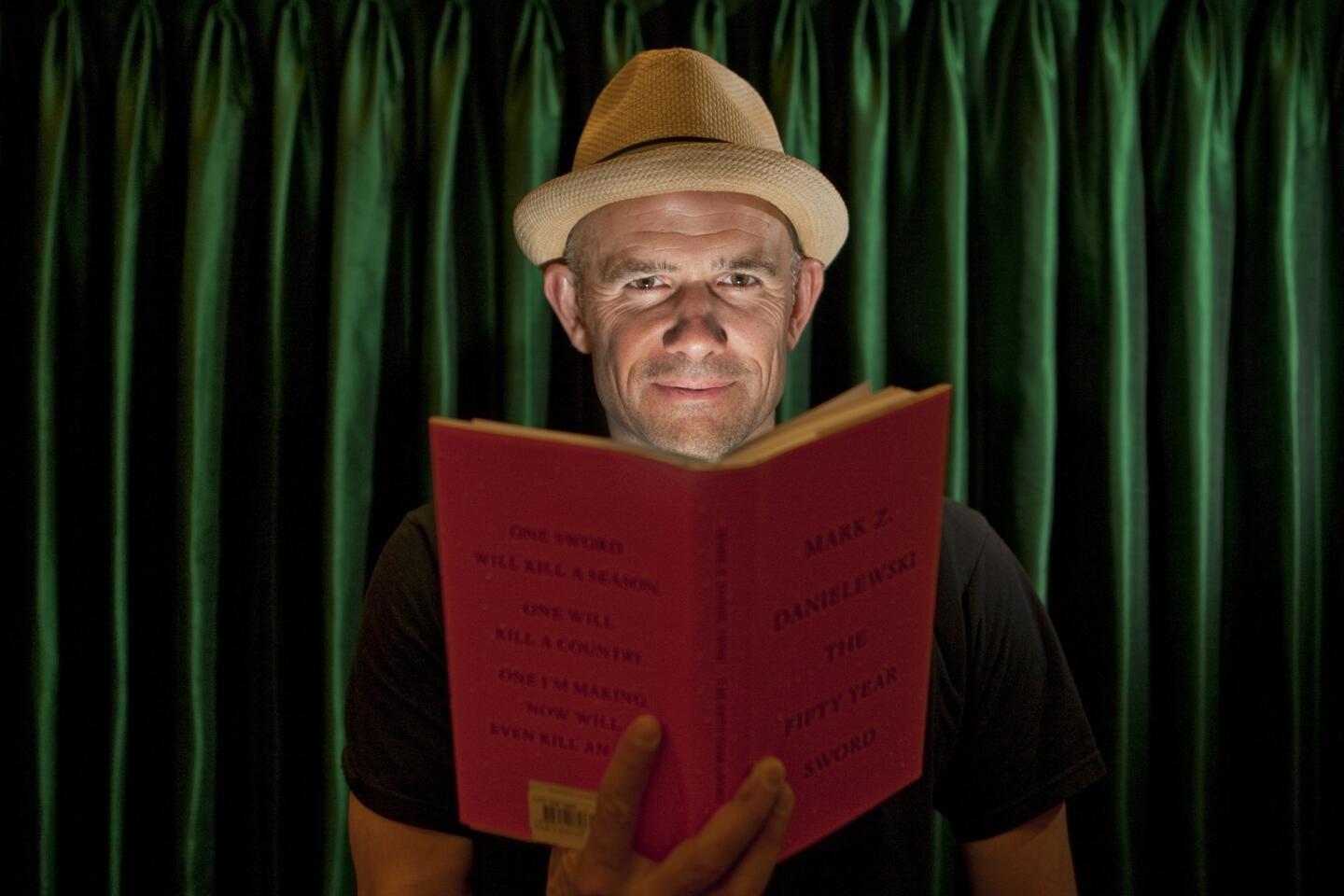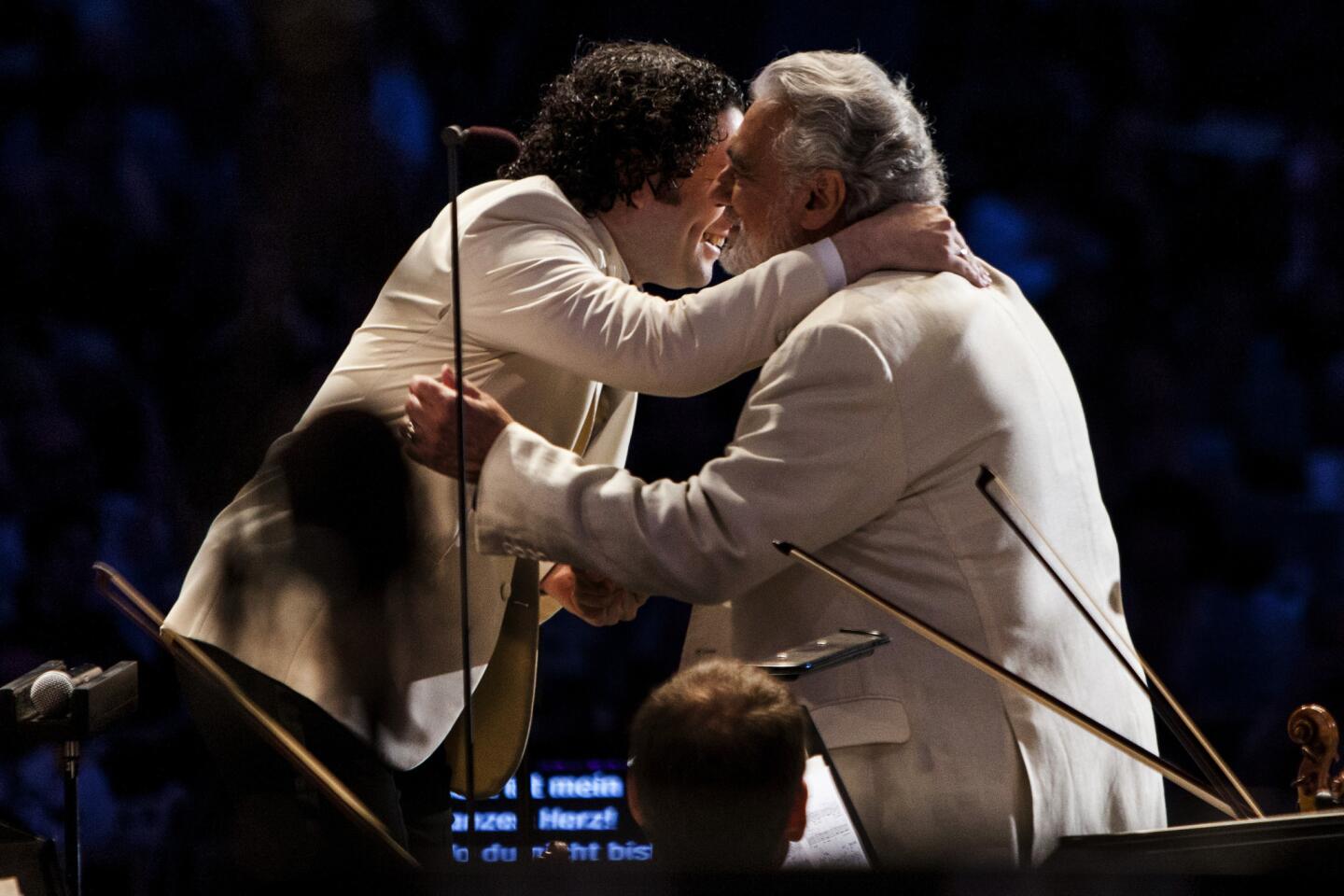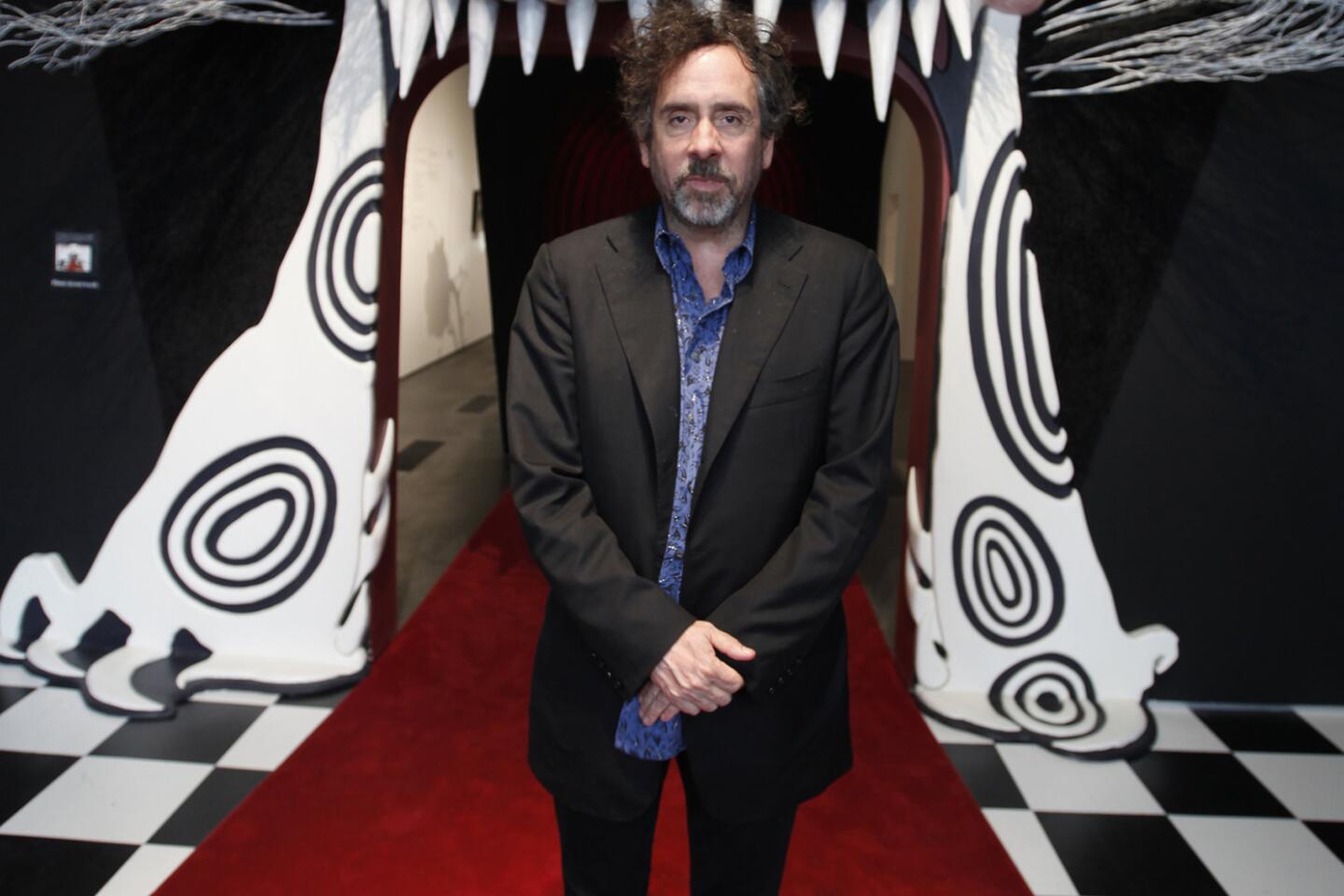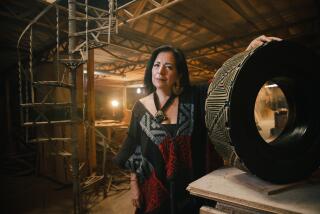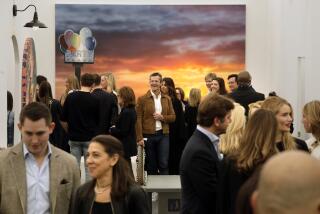In Brazil, fine art draws crowds from favelas to fairs to museums
RIO DE JANEIRO — Instead of playing in the dirty streets after school, one hot afternoon kids in a local favela, or slum¸ are led into a giant space with bright, high white walls. Assistants lead them around, nudging them to engage with original artworks including reflections on graffiti in their neighborhood and huge collages created by celebrated New York-based Brazilian artist Vik Muniz.
A drum hangs from the ceiling, as do two wooden balls. A docent tells the kids they are free to throw them against the instrument and asks them what’s the difference between them and an artist. They are artists now too, she says.
It’s not just here at the Travessias 2 exhibition in the Maré favela, put on by the government, nonprofits and the Automatica production company, that the power of fine art is popping up in Brazilian culture.
PHOTOS: Arts and culture by The Times
Exhibitions put on here are among the world’s most-attended and lines can stretch for hours as hot Brazilian artists sell for millions abroad and hundreds of local galleries now converge at one of two new art fairs in Brazil. All of this is not only because of the artistic nature of the country, critics say, but generous government support for the culture in a country which is now richer than ever.
“The only thing that hasn’t changed is the amount of talent in the country,” says Luiza Mello, director of Automatica. “What’s new is the amount of investments, the movement in the market, and the interest in the art.”
“There have long been music, dance and theater programs in favelas, but little with visual arts,” says Mello. “So we came up with the idea with NGO Observatório das Favelas [Favela Observatory], and Petrobras just said yes.” Petrobras is Brazil’s state-run oil company. Elsewhere, the government gives direct support or big companies get tax rebates to support cultural projects from slums to chic galleries and big public museums.
The Brazilian government spends at least $1 billion a year on direct support for the arts, and companies use almost as much annually in tax-deductible projects, says a spokesman for the Ministry of Culture.
Something seems to be working. In 2011 the Rio cultural center of Banco do Brasil, a government bank, had the world’s most-attended exhibition that year (“The Magical World of Escher”), and a show of famous Impressionists the center put on set records last year, according to the Art newspaper. Last year, Beatriz Milhazes’ hyper-tropical “My Lemon” set a new record for Brazilian art, selling for $2.1 million at a Sotheby’s auction in New York.
PHOTOS: Celebrity portraits by The Times
Hundreds of galleries now converge yearly on a new art fair in Rio, which has sprung up almost overnight alongside São Paulo’s established event.”It’s completely different than it was just a few years ago,” says Marina Romiszowska, head of curatorial affairs at ArtRio. “There’s more each month than anyone could attend.”
Over the last few years, Brazil’s new prominence on the world stage, after a decade of growth and as it prepares to host the 2014 World Cup and 2016 Olympics, has meant much of the world is discovering Brazil’s talents, and state cash can promote them.
Some criticize the way the government supports the arts, since the tax-refund model allows big companies to slap their logos on projects that are essentially paid for with public money. And as the economy slows, there is worry the support may not last forever.
But the government is planning to soon launch a program that will give every worker in the country 50 reais ($25, or almost 10% of the monthly minimum wage) that they can spend exclusively on cultural activities, with the hope that it will allow average Brazilians to spend more time at museums, in the cinema, or at a live dance performance.
Art across society
Here in the favela, still plagued nearby by the dominance of drug gangs, they’ve put on an exhibition with 10 Brazilian artists, curated by the well-known Felipe Scovino and Raul Mourão. There are weekly talks bringing in people from all over the city as well as classes.
Just the day after Mello spoke in her office, there were two exhibition openings in Rio alone. At the Laura Alvim cultural center facing the beach in Ipanema, Marta Jourdan had put on a small show exploring permanent motion and French phenomenological philosopher Merleau-Ponty’s thoughts on image. The next night, São Paulo artist Alexandre Orion had fashioned his city’s famously aggressive graffiti, known as pixação, into garish neon light signs, to the delight of the young visitors who danced to hip-hop into the night.
These kinds of galleries have also benefited from special support from the state government, which granted a special tax exemption for all sales of art made during the new ArtRio fair.
PHOTOS: Arts and culture by The Times
Little more than an idea in 2009, the first edition of the Rio fair in 2011 secured the tax break and the participation of 83 galleries. By the next year, organizers had to turn down interested galleries, and Romiszowska now flies around the world checking up on which galleries will make the cut. About 40% at September’s fair will be foreign.
“Even some really experienced curators and people from the art world had no idea about our scene and the way we do things until very recently,” she says. “But in general people are paying more attention to Brazil now, and everyone knows it’s nice to come to Rio.”
But the center of art is São Paulo, South America’s largest city, which holds the more established SP Arte, which showed more than 3,000 pieces last year in the building designed by Modernist Oscar Niemeyer, who died last year at 104.
The cutting-edge Pivô gallery has just sprung up in an abandoned space in his bold Copan building, and down the road the Galeria Vermelho (Red Gallery) continues to impress with contemporary artists from around Latin America.
For large-scale commercial success, Adriana Varejão, Ernesto Neto, Milhazes and Muniz are some of the largest names. But Vermelho continues to push forward new artists.
PHOTOS: Celebrity portraits by The Times
“Vermelho seeks to act as a catalyst for what is most recent and innovative in art … creating new ideas and discourses developed by all kinds of artists,” says Marcos Gallon at Vermelho, in language reminiscent of that used by students of art worldwide. “Art created by Brazilians has reached more visibility abroad, and not through expositions of so-called Brazilian art, but also through the inclusion of Brazilians into universal themes.”
Modernism has deep roots in Brazil, which despite its 500-year history was not developed as a settlers’ colony and never had traditional feudal aesthetics dominate official culture as they did in much of the continent. How else could Niemeyer have been able to design Brasília, the country’s capital, in sculpted white concrete that looks more like a utopian settlement on Mars than any European parliament?
The Pinacoteca Museum of the State of São Paulo, considered by many the best in Brazil, seeks to balance the modernist impulse against works tracing the country’s history back to colonial time. Currently, the massive building downtown is hosting works from local painter Sérgio Sister, alongside a temporary exhibition of centuries of Chinese painting and selections from the permanent collection including Jean Baptiste Debret’s colonial era drawings of African slaves and Native American “savages.”
In the last five years, yearly attendance has more than doubled to 500,000 a year, and the museum is planning to expand, says Paulo Vicelli, its director of institutional relations. “In some ways we’re a very new country,” he notes, “but people want to be in touch with our collective memory too.”
More to Read
The biggest entertainment stories
Get our big stories about Hollywood, film, television, music, arts, culture and more right in your inbox as soon as they publish.
You may occasionally receive promotional content from the Los Angeles Times.
